smart grid
description: electrical grid operated by automatic control devices or controled and maintained from distance
123 results
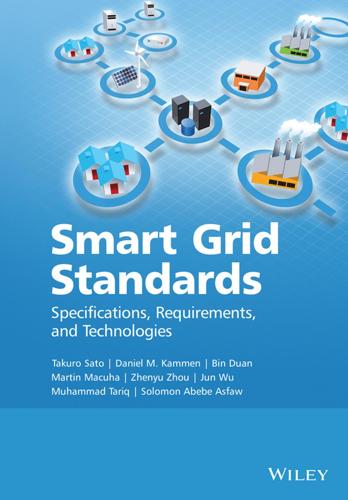
Smart Grid Standards
by
Takuro Sato
Published 17 Nov 2015
TK3105.S25 2014 621.3102′ 18–dc23 2014004867 Typeset in 11/13pt Times by Laserwords Private Limited, Chennai, India 1 2015 Contents About the Authors xi Preface xv Acknowledgments 1 1.1 1.2 1.3 1.4 1.5 1.6 1.7 1.8 2 2.1 2.2 xvii An Overview of the Smart Grid Introduction An Overview of Smart Grid-Related Organizations 1.2.1 SDOs Dealing with the Smart Grid 1.2.2 Technical Consortia, Forums, and Panels Dealing with the Smart Grid 1.2.3 Other Political, Market, and Trade Organizations, Forums, and Alliances Status of the United States (US) 1.3.1 Strategy Development and Planning 1.3.2 Policy and Law Enforcement 1.3.3 Government and Company Pilot Projects Status of the European Union (EU) 1.4.1 Activities of the European Union 1.4.2 Activities of EU Member Countries Status of Japan Status of South Korea Status of China Conclusions References 1 1 3 4 12 15 15 18 19 20 20 22 25 27 28 30 30 Renewable Energy Generation Introduction Renewable Energy Systems and the Smart Grid 2.2.1 Hydroelectric Power 2.2.2 Solar Energy 35 35 37 37 40 9 Contents vi 2.3 2.4 3 3.1 3.2 3.3 3.4 3.5 3.6 3.7 3.8 2.2.3 Wind Energy 2.2.4 Fuel Cell 2.2.5 Geothermal Energy 2.2.6 Biomass Challenges of Renewable Energy Systems 2.3.1 High Capital Cost 2.3.2 Integrating Renewable to the On-Grid 2.3.3 Reliable Supply of Power 2.3.4 Power Transmission 2.3.5 Power Distribution Conclusion References 51 56 60 64 73 73 74 74 74 74 75 75 Power Grid Power Grid Systems An Overview of the Important Key Standards for the Power Grid Communications in the Smart Grid 3.3.1 Communications for Substations: IEC 61850 Standards 3.3.2 Communications for Telecontrol: IEC 60870-5 Standards 3.3.3 Inter-Control Center Communications: IEC 60870-6 Standards Energy Management Systems 3.4.1 Application Program Interface: the IEC 61970 Standards 3.4.2 Software Inter-Application Integration: the IEC 61968 Standards Teleprotection Equipment 3.5.1 An Overview of the IEC 60834 3.5.2 Types of Teleprotection Command Schemes 3.5.3 Requirements for Command Type Teleprotection Systems 3.5.4 Teleprotection System Performance Requirements 3.5.5 Teleprotection System Performance Tests Application Cases of Related Standards in the Power Grid 3.6.1 Case 1: Engineering Process in Smart Substation Automation 3.6.2 Case 2: Information Exchange Services and Service Tracking Analysis of Relationships among Related Standards 3.7.1 IEC 61970 and IEC 61968 3.7.2 IEC 61850 and IEC 61970 3.7.3 IEC 61850 and IEC 60870 3.7.4 TASE.2 and MMS 3.7.5 Latest Progresses of Related Standards Conclusion Appendix 3.A A SED File Example (Extensible Markup Language) References 79 80 81 82 82 88 93 97 97 102 106 106 107 108 108 110 111 111 117 125 125 126 126 127 128 129 129 140 Contents 4 4.1 4.2 4.3 4.4 4.5 5 5.1 5.2 5.3 5.4 vii Smart Storage and Electric Vehicles Introduction Electric Storage 4.2.1 An Overview of Electric Storage 4.2.2 Electric Storage Technologies and Applications 4.2.3 Standardization Projects and Efforts Distributed Energy Resources 4.3.1 An Overview of Distributed Energy Resources 4.3.2 Technologies and Applications 4.3.3 Various Standardization Processes and Projects E-Mobility/Electric Vehicles 4.4.1 Introduction of E-Mobility/Electric Vehicles 4.4.2 The Rise and Fall of Electric Vehicles 4.4.3 Types of Electric Vehicles 4.4.4 Electric Vehicle Batteries 4.4.5 Grid to Vehicle (G2V) and Vehicle to Grid (V2G) Opportunities and Challenges 4.4.6 Standardization of E-Mobility/Electric Vehicles Conclusion References 145 145 146 146 147 151 154 154 155 158 160 160 161 162 164 Smart Energy Consumption Introduction Demand Response 5.2.1 An Overview of Demand Response Technologies 5.2.2 Demand Response Technology and Barriers 5.2.3 Standardization Efforts Related to Demand Response Advanced Metering Infrastructure Standards 5.3.1 The AMI System 5.3.2 The IEC 62056 and ANSI C12 Standards 5.3.3 Metering Standardization Projects and Efforts Smart Home and Building Automation Standards 5.4.1 ISO/IEC Information Technology – Home Electronic System (HES) 5.4.2 ZigBee/HomePlug Smart Energy Profile 2.0 5.4.3 OpenHAN 2.0 5.4.4 Z-Wave 5.4.5 ECHONET 5.4.6 ZigBee Home Automation Public Application Profile 5.4.7 BACnet 5.4.8 LONWORKS 5.4.9 INSTEON 183 183 184 184 185 186 188 189 189 194 197 166 170 178 180 198 207 217 221 224 228 231 233 235 Contents viii 5.4.10 5.4.11 5.4.12 5.5 6 6.1 6.2 6.3 6.4 6.5 7 7.1 7.2 7.3 7.4 7.5 KNX ONE-NET A Comparison of Smart Home and Building Automation Standards Conclusion References 235 238 Communications in the Smart Grid Introduction 6.1.1 Communication Requirements for the Smart Grid 6.1.2 List of Standards Architecture of the Communication System in the Smart Grid 6.2.1 IP in the Smart Grid Wired Communication 6.3.1 Power Line Communication 6.3.2 Optical Communication 6.3.3 Digital Subscriber Line (DSL) and Ethernet Wireless Communication 6.4.1 Introduction 6.4.2 Wireless Very Short Distance Communication 6.4.3 Wireless Personal and Local Area Networks and Related Technologies in the Unlicensed Spectrum 6.4.4 Cellular Networks in the Licensed Spectrum and WiMAX Technology 6.4.5 Satellite Communication Conclusion References 247 247 248 250 256 257 259 259 264 266 268 268 270 Security and Safety for Standardized Smart Grid Networks Introduction Threats and Vulnerabilities of Smart Grids 7.2.1 Network Vulnerabilities 7.2.2 Errors of Communications Communication Network Standards of Smart Grids 7.3.1 Wireless Network Standards 7.3.2 Wired Network Standards and Their Safety Extensions Wireless Network Security Mechanisms in the Smart Grids 7.4.1 An Overview of Security Mechanisms in the Wireless Standardized Smart Grid 7.4.2 Device Joining 7.4.3 Securing Normal Traffic Wired Network Security/Safety Mechanisms in the Smart Grid 7.5.1 An Overview of Security Technologies in the Wired Smart Grid 299 299 300 300 301 302 302 302 303 239 242 242 275 285 291 292 294 303 303 307 309 310 Contents 7.6 7.7 7.8 8 8.1 8.2 8.3 8.4 8.5 8.6 8.7 8.8 8.9 9 9.1 9.2 ix 7.5.2 Basic Security Mechanisms of Communication Infrastructure 7.5.3 Principles of Safety Extensions 7.5.4 Security Measures of Safety Extension Typical Standards of Functional Security and Safety 7.6.1 IEC 62351 Standards 7.6.2 IEC 61508 Standards Discussion 7.7.1 Safety versus Security 7.7.2 Security Level 7.7.3 Safety Level 7.7.4 Open Issues Conclusion References 311 312 313 316 316 319 321 321 321 322 322 324 325 Interoperability Introduction 8.1.1 Interoperability and Interchangeability 8.1.2 The Challenges of Network Interoperability 8.1.3 Adding Application Interoperability Interoperability Standards NIST Identified List of Standards to Be Reviewed NIST Interoperability Conceptual Reference Model for the Smart Grid Different Priority Areas Identified for Standardization 8.6.1 Wide-Area Situational Awareness 8.6.2 Demand Response and Consumer Energy Efficiency 8.6.3 Smart Energy Storage 8.6.4 Electric Transportation 8.6.5 Cybersecurity 8.6.6 Network Communications 8.6.7 Advanced Metering Infrastructure 8.6.8 Distribution Grid Management Priority Action Plans Different Layers of Interoperability Conclusion References 329 329 330 330 331 332 333 339 339 340 341 341 342 342 342 343 344 344 344 346 347 348 Integration of Variable Renewable Resources Introduction Challenges of Grid Integration of Intermittent Renewable Systems 9.2.1 Operation of a Conventional Electric Power System 9.2.2 Impact of Adding Intermittent Renewable Systems to the Power Grid 351 351 352 352 354 Contents x 9.3 9.4 9.5 9.6 10 10.1 10.2 10.3 10.4 10.5 Transitioning to Highly Renewable Electricity Grid 9.3.1 Planning Studies Very High Penetration and Grid-Scale Storage 9.4.1 Grid-Matching Analysis – Case of the Israeli Grid 9.4.2 Storage Design and Dispatch – Case of Interconnected Grid List of Standards Related to Integration of Renewable Resources Conclusion and Recommendations References 357 357 363 363 366 374 375 375 Future of the Smart Grid The Premise of the Smart Grid What the Smart Grid Should Deliver?
…
NEDO under METI has launched several projects to promote the development of the Japanese Smart Grid. One example is the Japan-US collaborative Smart Grid project in Los Alamos, New Mexico, which was launched in 2009 with an investment of $10 billion. NEDO has established the JSCA to promote cooperation among various stakeholders An Overview of the Smart Grid 27 to accelerate Smart Grid-related activities in Japan. In order for Japanese companies to participate in Smart Grid-related activities, Japan has become actively involved in expanding the Asian Smart Grid market. NEDO has conducted an investigation of the Smart Grid-related technology requirements in the industrial areas surrounding Jakarta, Indonesia in 2010.
…
In 2009, the Presidential Committee on Green Growth issued the guideline, Building an Advanced Green Country, which specifies the contents of the South Korea Smart Grid. In August 2009, the Korea Smart Grid Institute (KSGI) was launched to promote the development of the Smart Grid in South Korea. KSGI issued Korea’s Smart Grid Roadmap, which specifies five sectors for implementing the Smart Grid: smart power grid, smart consumer, smart transportation, smart renewable, and smart electricity service [55]. In the first stage (2010–2012), the implementation direction was to construct and operate the Smart Grid test bed in pilot projects. In the second stage (2012–2020), the implementation direction is to expand the Smart Grid into metropolitan areas.
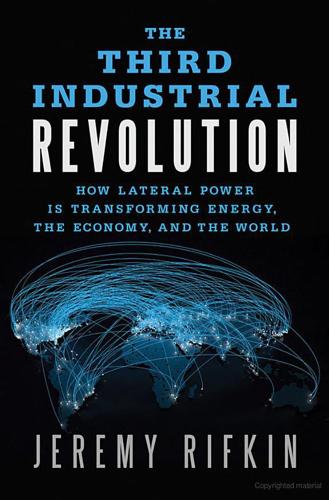
The Third Industrial Revolution: How Lateral Power Is Transforming Energy, the Economy, and the World
by
Jeremy Rifkin
Published 27 Sep 2011
Dynamic pricing also will let local energy producers know the best time to sell electricity back to the grid, or to go off the grid altogether. The US government recently allocated funds to develop the smart grid across the country. The funds will be used to install digital electric meters, transmission grid sensors, and energy storage technologies to enable high-tech electricity distribution; this will transform the existing power grid into an Internet of energy. CPS Energy in San Antonio, Texas; Xcel Utility in Boulder, Colorado; and PG&E, Sempra, and Southern ConEdison in California will be laying down parts of the smart grid over the next several years. The smart grid is the backbone of the new economy. Just as the Internet created thousands of new businesses and millions of new jobs, so too will the intelligent electricity network—except “this network will be 100 or 1,000 times larger than the Internet,” says Marie Hattar, vice president of marketing in Cisco’s network systems solutions group.
…
A study prepared by KEMA, a leading energy consulting firm, for the GridWise Alliance—the US smart grid coalition of IT companies, power and utility companies, academics, and venture capitalists—found that even a modest $16 billion in government incentives to smarten the nation’s power grid would catalyze $64 billion worth of projects and create 280,000 direct jobs.40 Because the smart grid is critical to the growth of the other four pillars, it will generate hundreds of thousands of additional jobs in the renewable energy sector, the construction and real estate markets, the hydrogen storage industry, and electric transportation, all of which rely on the smart grid as an enabling platform.
…
These employment estimates are small, however, in comparison to the jobs that will be created with the €1 trillion the European Commission now projects is needed for public and private investment over the next ten years to bring the distributed smart grid network online across the world’s largest economy.41 Today’s idea of a distributed smart grid was not what most of the major ICT companies had in mind when they first began to talk about intelligent utility networks. Their early vision was for a centralized smart grid. The companies foresaw digitalizing the existing power grid, with the placement of smart meters and censors, to allow utility companies to collect information remotely, including keeping up-to-the-minute information on electricity flows.
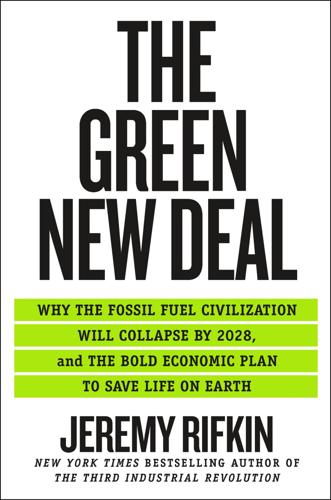
The Green New Deal: Why the Fossil Fuel Civilization Will Collapse by 2028, and the Bold Economic Plan to Save Life on Earth
by
Jeremy Rifkin
Published 9 Sep 2019
Campbell, The Smart Grid: Status and Outlook, Congressional Research Service, April 10, 2018, https://fas.org/sgp/crs/misc/R45156.pdf, 8. 34. Electric Power Research Institute, Estimating the Costs and Benefits of the Smart Grid: A Preliminary Estimate of the Investment Requirements and the Resultant Benefits of a Fully Functioning Smart Grid, March 2011, https://www.smartgrid.gov/files/Estimating_Costs_Benefits_Smart_Grid_Preliminary_Estimate_In_201103.pdf (accessed March 24, 2019), 1–2. 35. Electric Power Research Institute, Estimating the Costs and Benefits of the Smart Grid, 4; Electric Power Research Institute, The Power to Reduce CO2 Emissions: The Full Portfolio, October 2009, https://www.smartgrid.gov/files/The_Power_to_Reduce_CO2_Emission_Full_Portfolio_Technical_R_200912.pdf (accessed March 23, 2019), 2–1. 36.
…
Millions of electric vehicles connected to the Energy Internet will also provide a storage system that can send electricity back to the grid during peak demand, when the price of electricity has spiked, while vehicle owners can be compensated for contributing their electricity to the network. The construction of a national smart grid across the country will serve as the backbone of the Energy Internet. The Electric Power Research Institute (EPRI) provides a comprehensive definition of what makes up the national smart grid: Today’s power system … is primarily comprised of large central-station generation connected by a high voltage network or Grid to local electric distribution systems which, in turn, serve homes, business and industry. In today’s power system, electricity flows predominantly in one direction using mechanical controls.… The Smart Grid still depends on the support of large central-station generation, but it includes a substantial number of installations of electric energy storage and of renewable energy generation facilities, both at the bulk power system level and distributed throughout.
…
.… The Smart Grid still depends on the support of large central-station generation, but it includes a substantial number of installations of electric energy storage and of renewable energy generation facilities, both at the bulk power system level and distributed throughout. In addition, the Smart Grid has greatly enhanced sensory and control capability configured to accommodate these distributed resources as well as electric vehicles, direct consumer participation in energy management and efficient communicating appliances. This Smart Grid is hardened against cyber security while assuring long-term operations of an extremely complex system of millions of nodes.34 Back in 2011, EPRI estimated that the national smart grid and accompanying storage technology would cost upwards of $476 billion over a twenty-year period to construct but that the grid would create between $1.3 trillion and $2 trillion in overall economic benefits.
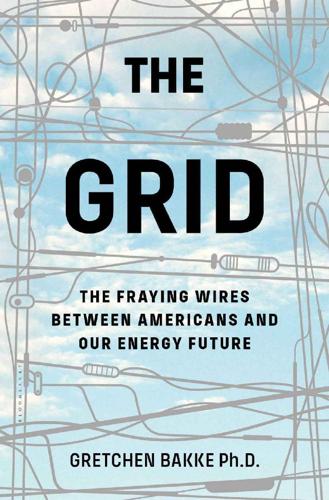
The Grid: The Fraying Wires Between Americans and Our Energy Future
by
Gretchen Bakke
Published 25 Jul 2016
This shifting of when everyday devices do their work from the time somebody is home to turn them on to the time that electricity is cheapest is not just appealing to Val; it is at the heart of why the smart grid is valuable to utilities. The reason companies would pay to outfit a house along the line of the Petersons’—and why they would dream of also including all the smart appliances the Petersons did not get—is because the smart grid makes it possible to shift consumption around the clock. It doesn’t reduce consumption; in fact, quite the opposite: the utilities would be pleased if everyone used more electricity than they currently do. Rather, what the smart grid does is change the time at which consumption takes place. Instead of most of the nation vacuuming, washing and drying laundry, cooking dinner, watching TV, charging their car, and turning up their air-conditioning (or heat, depending upon the season) at the same time of day, some people, like Val, will let the house decide.
…
“Effect Hits Santa Cruz”: Gary L. Hunt, “The Bakersfield Effect Hits Santa Cruz,” Tech & Creative Labs, August 29, 2010, http://www.tclabz.com/2010/08/29/the-bakersfield-effect-hits-santa-cruz/. like a cash grab: Jack Danahy, “Smart Grid Fallout: Lessons to Learn from PG&E’s Smart Meter Lawsuit,” Smart Grid News, November 13, 2009, http://www.smartgridnews.com/story/smart-grid-fallout-lessons-learn-pge-s-smart-meter-lawsuit/2009-11-13, for individual customer complaints see: https://sites.google.com/site/nocelltowerinourneighborhood/home/wireless-smart-meter-concerns/smart-meter-consumers-anger-grows-over-higher-utility-bills.
…
would not use again: Mark Jaffe, “Xcel’s SmartGridCity Plan Fails to Connect with Boulder,” The Denver Post, October 28, 2012, http://www.denverpost.com/ci_21871552/xcels-smartgridcity-plan-fails-connect-boulder. “Give me a blinking break”: April Nowicki, “Boulder’s Smart Grid Leaves Citizens in the Dark,” Greentech Media, March 18, 2013, http://www.greentechmedia.com/articles/read/Boulders-Smart-Grid-Leaves-Citizens-in-the-Dark. “ ‘Stupid Customer’ pilot”: Jesse Berst, “SmartGridCity Meltdown: How Bad Is It?” Smart Grid News, August 8, 2010, http://www.smartgridnews.com/story/smartgridcity-meltdown-how-bad-it/2010-08-03. positions on the matter: Randy Houson, business technology executive for Xcel Energy, public speech, Washington, D.C., September 22, 2009.
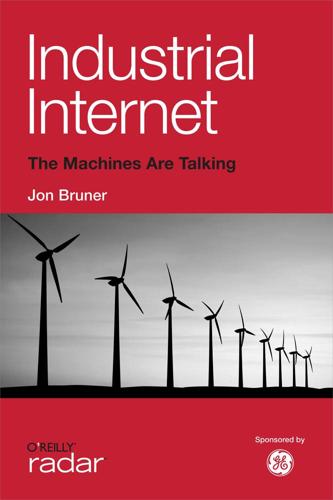
Industrial Internet
by
Jon Bruner
Published 27 Mar 2013
In one configuration, the Tesla S electric sedan can draw 20,000 watts and its battery can store 85 kilowatt-hours of electricity.[15] Handling these new demands will involve both physical changes to the grid (especially the construction of small fast-dispatch power plants that can start in as little as 30 minutes when the wind stops blowing) as well as better controls based on software intelligence — the so-called “smart grid.” Any improvement in these controls can substitute directly for new physical capacity. The smart grid will require pervasive network connections to everything from coal turbines to clothes dryers, and an interoperable software stack to go with it. The core function of the smart grid will be dynamic electricity pricing that reflects supply and demand on a minute-by-minute basis. Fully dynamic pricing hasn’t arrived yet, but peak-use surcharges are common in some markets today, and the sorts of responsive, intelligent controls that will work with it are useful even in the absence of dynamic pricing.
…
Industry Focus Following is a handful of studies drawn from industries that will be particularly affected by the rise of the industrial internet. The accessibility of these examples varies; building the smart grid, with dynamic electricity prices calculated instantaneously as electricity supply and demand shift, will take years of stack development, entailing careful collaboration between power plant operators, distributors, independent system operators, and local utilities, and drawing in the seasoned engineering bases of all those participants. Even so, some elements of the smart grid stack have been standardized and are now open to innovators from any background. Modularity means that an innovator doesn’t need access to the mechanism of pricing in order to to build a responsive electric-car charger; she just needs to anticipate that dynamic pricing will eventually emerge as a service to which her machine can connect.
…
Chief Technology Officer Aneesh Chopra wrote, “With this information at their fingertips, consumers would be enabled to make more informed decisions about their energy use and, when coupled with opportunities to take action, empowered to actively manage their energy use.”[23] It’s effectively an effort to reduce consumption not by edict, but by making markets more transparent and giving consumers the tools they need to react quickly to market conditions. As promising as these initiatives are, the full “smart grid” as futurists imagine it will take years of careful collaboration between utilities, independent system operators, regulators, and software and hardware developers. Proposals for smart-grid standards abound, and big investments by any individual utility won’t reach their full potential until every adjacent component is also modernized and connected. “There are some dangerous conceptual ideas coming out of Internet companies saying the power system is like the Internet,” says Dan Zimmerle, who runs a power-systems lab at Colorado State University[24] and directs research on grid technologies there.

The Zero Marginal Cost Society: The Internet of Things, the Collaborative Commons, and the Eclipse of Capitalism
by
Jeremy Rifkin
Published 31 Mar 2014
Scott DiSavino, “U.S. Smart Grid to Cost Billions, Save Trillions,” Reuters, May 24, 2011, http://www.reuters.com/article/2011/05/24/us-utilities-smartgrid-epri-idUSTRE74N7O420110524 (accessed June 7, 2013); “Estimating the Costs and Benefits of the Smart Grid: A Preliminary Estimate.” Electric Power Research Institute, March 2011, 21. 24. “Growing International Co-Operation Driving the Spread of Smart Grids,” GlobalData (June, 2012): 1–7. 25. Katie Fehrenbacher, “For the Smart Grid, the Wireless Debates Are Over,” Gigaom, January 23, 2012, http://gigaom.com/2012/01/23/for-the-smart-grid-the-wireless-debates-are-over/ (accessed July 5, 2013). 26.
…
Lordan of the Electrical Power Research Institute (EPRI) said that the nation’s power sector is beginning to ask how many transformers need to be stockpiled and stored and how best to transport and deploy them to critically exposed regions in the aftermath of a concerted cyberattack on the nation’s power grid.69 Although the Congress, EPRI, the National Academy of Sciences, governmental commissions, and private sector groups are to be praised for drawing attention to the level of the threats, their responses come up short because their various “what if” scenarios continue to assume a business-as-usual power grid that relies on fossil fuels and nuclear power to generate electricity that is then distributed across power lines that are designed to transmit it only from a centralized power station to millions of end users. If a centralized smart grid were brought online, it would only exacerbate the potential vulnerability to a cyberattack on the grid. Unfortunately, the United States is playing directly into the hands of cyberterrorists by championing a centralized smart grid. The European Union and other governments, by contrast, are deploying a distributed smart grid—or Energy Internet—that lessens the potential threat and damage that can be inflicted by a massive cyberattack. Even if the electrical transformers were to flame out, if a fully functioning Energy Internet were operational across every region of the country, local communities could go off-grid and continue to generate their own green electricity, sharing it with their neighbors and businesses on microgrids, keeping the power and lights on, at least long enough to keep society functioning.
…
“Technology,” Transphorm, Inc., http://www.transphormusa.com/technology (accessed June 6, 2013). 20. “Estimating the Costs and Benefits of the Smart Grid: A Preliminary Estimate of the Investment Requirements and the Resultant Benefits of a Fully Functioning Smart Grid,” Electric Power Research Institute, March 2011, 4, http://ipu.msu.edu/programs/MIGrid2011/presentations/pdfs /Reference Material - Estimating the Costs and Benefits of the Smart Grid.pdf (accessed February 3, 2014). 21. Michael Bame, “USS Gerald Ford Aircraft Carrier,” About.com, 2013, http://defense.about .com/od/Navy/a/Uss-Gerald-Ford-Aircraft-Carrier.htm (accessed June 17, 2013); “Building an Energy Future: Annual Report,” Royal Dutch Shell, December 31, 2012: 10, http://reports.shell .com/annual-review/2012/servicepages/downloads/files/entire_shell_review_12.pdf (accessed February 3, 2014). 22.

CTOs at Work
by
Scott Donaldson
,
Stanley Siegel
and
Gary Donaldson
Published 13 Jan 2012
As we transition to electronic medical records, that will cause a data tsunami in the medical community. This will be a good thing in the end, but first our customers are going to have to learn how to deal with that data deluge. The same thing is happening in the energy domain. Think about the smart grid. I call the smart grid “social networking for the power grid” because it's got a lot of distributed sensors networked together, it's going to be information-aware, sending a lot of data back and forth, it's going to use real-time data to make decisions, whether at a central command and control level about which assets and resources to bring online or offline or decisions made by consumers about when to turn on their appliances, whether to buy an electric vehicle, and if so, when and where they recharge it, and so on.
…
So it's constantly about inventing the next frontier and selling people a concept and then building it for them. S. Donaldson: Okay. Miller: We're doing that now and, in fact, this afternoon I'm working on software for that. I'm doing that, not a full-time gig, and along comes the smart grid investment grants and the smart grid demonstration program—huge stimulus projects from the DoE [Department of Energy], multiple billions. S. Donaldson: Right. Miller: NRECA, National Rural Electric Cooperative Association, invited me over to help them win grants and demonstrations. Because of my experience at SAIC and elsewhere, I'd become a bit of an elephant hunter, you know, learning how to win big gigs.
…
Miller: I hope, for the people at the end of the century, we have it solved and that there's another cool problem to solve. But for 2011, the coolest problem there is right now is building the smart grid. Everybody thinks of it in terms of meters. “I'm going to give this person a meter, and they're going to walk in, and they're going to see an in-home display, and they're going to sit there every night, managing their energy.” Well, I'll give you a clue here, CSI [Crime Scene Investigation] is a hell of a lot more interesting than anybody's in-home portal. But there's another part of this smart grid that the average Joe doesn't know about—shouldn't know about—because they're not in the business.
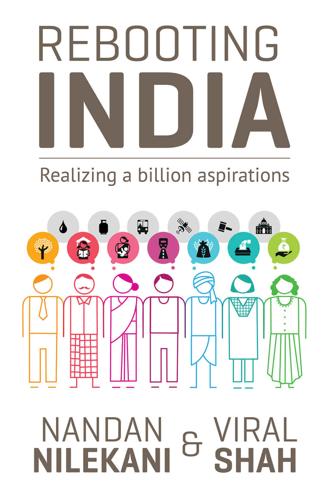
Rebooting India: Realizing a Billion Aspirations
by
Nandan Nilekani
Published 4 Feb 2016
The consumer, on the other hand, has little to no idea of how much their power consumption is until provided with a bill, nor any idea of which type of energy source—renewable or non-renewable—was used to generate the power they consume; the only power the consumer has over the system is to notify the utility in case of a power cut. Greening India’s power sector: Smart grids and renewable energy Increasing the efficiency and transparency of our power grids is possible only when they become smart grids, incorporating the power of technology and digital processes to change the energy landscape of our country. Such smart grids are two-way channels of communication, allowing energy utilities to integrate renewable energy sources into the system and monitor their networks more effectively while providing more information to consumers about their energy usage.
…
By promoting the use of alternative energy sources as well as the more efficient usage of fossil fuels, smart grids can cut down the emission of carbon dioxide and other greenhouse gases and help to rein in the runaway problem of climate change. From Italy to the USA, countries around the world are embracing the smart-grid model with the dual goals of increasing operational efficiency and reducing the impact on the environment.8 While comprehensive data is not available, a 2011 study by the Electric Power Research Institute (EPRI) suggests that while the net investment needed to realize the vision of a smart grid will be nearly $500 million (over a twenty-year period), the benefits from such a power system will run into trillions, with a benefit-to-cost ratio of 2.8 to 6.9 What goes into the building of a smart grid?
…
Italy has been a pioneer in the smart meter field; over 30 million smart meters have been brought into service since 2001, and 85 per cent of all Italian households now use smart meters to manage their electricity.12 The ability to monitor power sources in real time allows utilities to respond to demand-and-supply forces rapidly and with much greater accuracy. This makes it possible to integrate smaller and intermittent sources of power, such as wind turbines and rooftop solar panels, into the power supply system. In the future, smart grids can also accommodate the draw on energy by electric cars being recharged. Power utilities can use smart grids to improve their operational efficiency for maximal utilization of existing energy sources, as well as the integration of renewable energy sources into the system. Energy efficiency has in fact been dubbed the ‘fifth fuel’, and Amory Lovins of the Rocky Mountain Institute has coined the term ‘negawatt’ to describe power saved through efficiency or conservation.13 Energy efficiency is being driven by innovations across multiple areas.14 Renewable energy sources, in particular solar energy, have boosted the available energy supply, and consumers can now act as small producers and storers, in effect ‘decentralizing’ the power grid.15 Storage is getting cheaper—the batteries that power Tesla’s electric cars may soon be made available for the home as well.16 Smart systems are managing power consumption more efficiently.

The Wide Lens: What Successful Innovators See That Others Miss
by
Ron Adner
Published 1 Mar 2012
By exploiting the intelligence in the system and its visibility into the car, Better Place has provided a smart-grid solution for utilities without the need for utilities to deploy a smart grid. Beyond intelligence in pulling power from the grid, the Better Place solution can use electricity stored in idle batteries to deliver power back to the grid when electricity demand threatens to exceed supply (for example, during peak hours on hot days when utilities are reaching their generation limits). While the idea of vehicle-to-grid (V2G) charging has been discussed for decades, two key obstacles stood in its way. First was the need for smart-grid technology that would allow for such signaling and two-way transfers.
…
In contrast to the usual problems of emergence that we have examined, the problem here is one of scalability: the light is green as long as there is no traffic; but once traffic picks up, we have a flashing red light on our blueprint. The good news here is that around the world governments and utilities are investing to deploy smart-grid technologies to help circumvent this problem. “Smart grid” is a catchall term for a host of technologies that can respond to, and even predict, the individual demands placed on the electric system and adjust load and distribution accordingly. These include smart meters that adjust the price charged for electricity in real time, smart automation that can turn electric equipment and appliances on or off depending on the load on the grid, and smart distribution that can help ensure that local power lines are not overloaded.
…
Finally, adding a service dimension to what had been a pure product sale allowed Better Place to address the final roadblock to mass adoption of electric cars: the generation and distribution of electricity itself. Better Place’s model, which had the firm intermediating in real-time between utilities and drivers, allowed it to control the battery-charging load that would be placed on the system at any given moment, essentially creating a smart grid solution without needing utilities to deploy a smart grid. The mainstream success of the electric car hinges on solving the three problems of range, resale value, and grid capacity. And for this reason, it requires the successful alignment of the entire electric car ecosystem. Better Place’s model is the only one to date to address all three and so remains the holistic blueprint against which other EV strategies and investment should be judged.

Smart Cities: Big Data, Civic Hackers, and the Quest for a New Utopia
by
Anthony M. Townsend
Published 29 Sep 2013
While Siemens still builds smart systems for telecommunications and transportation, the smart grid plays a special role in its vision for cities because, writes Jeff St. John on the GigaOM blog, it’s “one of the few corporations out there that can lay claim to almost every share of the world’s current grid infrastructure, building everything from gas and wind turbines to high-voltage transmission cables to sensors and controls that monitor and manage the delivery of power to homes and businesses.”45 Targeting nearly $8.5 billion (€6 billion) in annual smart grid business by 2014, CEO Peter Löscher boasted, “We’re on the threshold of a new electric age.”46 As consumers, we think of the smart grid mostly through our growing experience with smart meters.
…
But beyond just keeping the lights on, the smart grid could finally unleash the kind of innovation in energy services that we’ve become accustomed to in telecommunications. Start-up firms could audit and manage our home’s electricity use in return for a small cut of the savings off our energy bill. In a world where Siemens forecasts that electricity prices could change as often as every fifteen minutes, we’ll be relieved to have a piece of tracking software automate the process.51 By allowing us to account for all of the power we put in and take out of the system, the smart grid will also allow us to add a social layer to the production, distribution, and consumption of electricity.
…
Hill, “New Challenges Demand New Solutions: IBEW Leader Charts Energy Future,” EnergyBiz, September/October 2007, http://energycentral.fileburst.com/EnergyBizOnline/2007-5-sep-oct/Financial_Front_New_Challenges.pdf. 43Martin Rosenberg, “Continental Grid Vision Needed,” RenewableEnergyWorld.com blog, last modified December 11, 2007, http://www.renewableenergyworld.com/rea/news/article/2007/12/continental-grid-vision-needed-50777. 44“Company development 1847–1865,” Siemens, n.d., http://www.siemens.com/history/en/history/1847_1865_beginnings_and_initial _expansion.htm. 45Jeff St. John, “How Siemens is Tackling the Smart Grid,” GigaOM, last modified June 24, 2010, http://gigaom.com/cleantech/how-siemens-is-tackling-the-smart-grid/. 46“Siemens CEO Peter Löscher: We’re on the threshold of a new electric age,” Siemens press release, December 15, 2010, http://www.siemens.com/press/en/pressrelease/?press=/en/pressrelease/2010/corporate_communication/axx20101227.htm. 47“75% of US Electric Meters to be Smart Meters by 2016,” In-Stat press release, March 5, 2012, http://www.fiercetelecom.com/press-releases/75-us-electric-meters-will-be-smart-meters-2016. 48Chris Nelder, “Why baseload power is doomed,” SmartPlanet, blog, last modified March 28, 2012, http://www.smartplanet.com/blog/energy-futurist/why-baseload-power-is-doomed/445. 49Massoud Amin, “North American Electricity Infrastructure: System Security, Quality, Reliability, Availability, and Efficiency Challenges and their Societal Impacts,” in Continuing Crises in National Transmission Infrastructure: Impacts and Options for Modernization, National Science Foundation (NSF), June 2004. 50Fitze, “No Longer A One-Way Street,” 23. 51Tim Schröder, “Automation’s Ground Floor Opportunity,” Pictures of the Future, Spring 2011, 19, http://www.siemens.com/innovation/apps/pof_microsite/_pof-spring-2011/_pdf/pof_0111_strom_buildings_en.pdf. 52Eric Paulos, lecture, “Forum on Future Cities,” MIT SENSEable City Lab and the Rockefeller Foundation, Cambridge, MA, April 13, 2011, http://techtv.mit.edu/collections/senseable/videos/12305-changing-research; For a thorough treatment see Eric Paulos and James Pierce, “Citizen Energy: Towards Populist Interactive Micro-Energy Production,” n.d., http://www.paulos.net/papers/2011/Citizen_Energy_HICSS2011.pdf. 53James R.
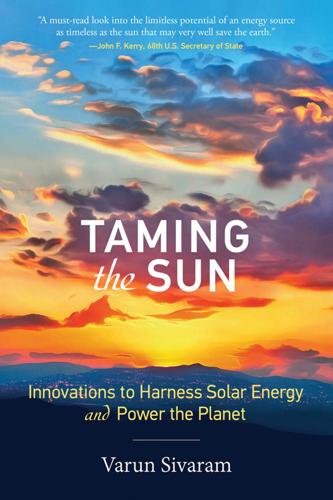
Taming the Sun: Innovations to Harness Solar Energy and Power the Planet
by
Varun Sivaram
Published 2 Mar 2018
Supplementing these clean energy highways would be decentralized microgrids serving, for example, neighborhoods, military bases, or schools, all networked together into a smart grid. Retiring much of the expensive, overbuilt infrastructure of today’s grid could pay for both supergrids and asset-light microgrids. This hybrid grid model could weather the volatility of renewable energy both through the wide reach of its long-distance transmission backbone and the precise responsiveness of the decentralized smart grid. Although the supergrid and decentralized grid models are each radical departures in opposite directions from today’s power system, they might actually coexist in a truly advanced hybrid grid.
…
To compensate for the rise in fluctuating renewable energy, Germany has invested in a fleet of expensive backup plants to maintain grid reliability.7 Over the next five years, consumers will foot the bill as Germany invests $20 billion in building transmission lines, upgrading local distribution grids, and installing smart grid technology, partly to accommodate even more renewable energy.8 Given the sophistication of its grid and its ability to invest in grid upgrades, Germany is better equipped than less wealthy countries, such as India, to confront the challenges inherent in rapidly adding solar capacity. Still, rich or poor, countries will confront dizzying costs and complexity if they seek to ramp up their levels of solar power.
…
As solar PV’s share of electricity supply rises, the electricity grid will need to tolerate massive amounts of intermittent power. Chapter 8, “Is Bigger Better?” contemplates whether it makes more sense to expand the grid to harness sunlight wherever the sun is shining or to make the grid smaller in a sense, by decentralizing the generation and consumption of energy through the use of smart-grid technology. Ultimately, the best solution might be a hybrid of both approaches to make the grid bigger, smaller, and smarter all at once. The most intuitive solution for the problem of intermittency is to bundle solar PV together with energy storage. Chapter 9, “No Silver Bullet,” argues, however, that relying only on batteries, the most familiar storage technology, would be prohibitively expensive.

The Stack: On Software and Sovereignty
by
Benjamin H. Bratton
Published 19 Feb 2016
See Nick Land, “Lure of the Void, pt. 1,” August 2012, http://www.scribd.com/doc/242684419/Nick-Land-Lure-of-the-Void#scribd. 60. See Pete Foster, “Cloud Computing—a Green Opportunity or Climate Change Risk?” Guardian, August 18, 2011. http://www.guardian.co.uk/sustainable-business/cloud-computing-climate-change. 61. On smart grids and data ownership, see Jon Bruner, “Two Crucial Questions for the Smart Grid,” O’Reilly Radar, November 5, 2012, http://radar.oreilly.com/2012/11/two-crucial-questions-for-the-smart-grid.html. 62. See Sally Daultrey, “Adaptation on the Roof of the World,” December 30, 2010, http://designgeopolitics.org/blog/2010/12/adapatation-on-the-roof-of-the-world/. 63. On the Chinese embassy air monitoring issue, see Steven Jiang and Alexis Lai, “China: Haze Isn't Foreign Embassies’ Business,” CNN, June 6, 2012. http://www.cnn.com/2012/06/06/world/asia/china-foreign-embassy-pollution-monitor/index.html. 64.
…
Absent a radical relaxation of energy scarcity by renewable sources, the finely grained electron sorting between points of production and consumption must be realized at global scale or the growth of planetary-scale computation will hit physical energy limits and will stall.54 A more scalable grid of electrons needs to be wrapped inside and around The Stack's Earth layer. In short, planetary-scale computation needs smart grids to grow, and for smart grids to grow, they need more ubiquitous computation. The computational future of energy and the infrastructural program of computation form such a coil, one end feeding on the other like Ouroboros, the ancient symbol of a snake eating its own tail. Whether or not the risks associated with the energy costs of Stack infrastructure will outpace the efficiencies provided by calculative technologies as they become pervasive across industrial sectors is unknown, and probably unknowable at the moment.
…
Stack as Model 12. Stack as Political Machine 13. Stacks That Were and Might Have Been 14. The Stack We Have 15. The Layers of The Stack II The LayersEarth Layer 16. Discovering or Inventing Computation? 17. Digestion 18. Geo-graphy and Geoaesthetics 19. From Global Surface to Planetary Skin 20. Smart Grid: Ouroboros 21. Sensing and Sovereignty; Polities of Supply and Effect 22. Designing for versus Designing with Emergencies 23. Designing the Earth Layer Cloud Layer 24. Platform Geography 25. The First Sino-Google War of 2009 26. Cloud Infrastructure 27. Cloud Polis 28. Platform Wars 29.
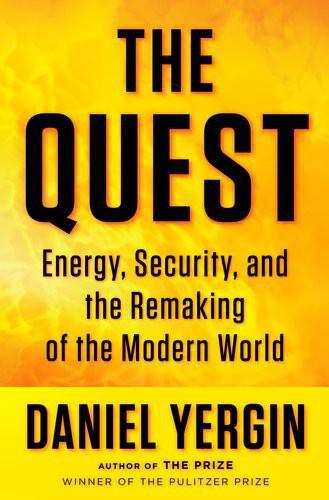
The Quest: Energy, Security, and the Remaking of the Modern World
by
Daniel Yergin
Published 14 May 2011
What this involves is modernizing the system of moving electricity all the way from generation to its final use in home, office, or factory. This entire effort goes by the shorthand of “smart grid.” The term has become almost ubiquitous, wildly popular, and the subject of considerable enthusiasm. After all, who wants to be against a “smart grid” or in favor of a “dumb grid”? But the concept has many definitions. As the head of one of the world’s largest utilities put it, “the concept of a smart grid is rich, complex, and confusing.” After all, it is not a single technology but a host of technologies. Yet in one form or another, it largely comes down to the application of digital technology, two-way communication, monitoring, sensors, information technology, and the Internet.
…
That will require new investment in transmission capacity and in the digital capability to integrate larger amounts of renewables into the grid and keep the overall system balanced, manage voltage, and avoid disruption. That is the urgent challenge that Germany faces with its target of doubling renewables’ share of its electricity to 35 percent by 2020. The smart grid movement has one other very important objective—increasing reliability. The smart grid can enhance reliability with a “self-healing” capability. It is impossible to ensure that weather-related events, such as an ice storm or a hurricane, do not cause outages. However, what should be a minor operational problem can, on rare occasions, have a domino effect and create a blackout over a large area.
…
Increasing situational awareness for the utility could go a long way toward reducing the duration of power outages and limiting their effects. It would also help limit the fallout from an external assault—a terrorist attack on the electricity infrastructure. Overall, this part of the smart grid could speed up response to any disruptions and reduce traditional “truck roll”—the dispatch of emergency repair teams—by solving problems in the control room.20 The smart grid, in its entirety, could have what has been described as a “transformational impact on how utilities operate their system, interact with their customers, and conduct their businesses.” It could also be a major step forward in applying technology to promote much greater energy efficiency in buildings.
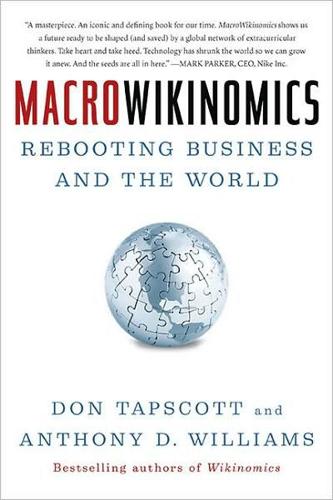
MacroWikinomics: Rebooting Business and the World
by
Don Tapscott
and
Anthony D. Williams
Published 28 Sep 2010
And once the grid carries information, there are few reasons, if any, why it shouldn’t benefit from all of the rich possibilities for innovation, collaboration, and wealth creation that the Internet has fostered in other sectors of the economy. In many ways, the argument for a smart grid based on open standards parallels the argument for an open Internet. The old power grid is analogous to broadcast media with its bias toward centralized, one-way, one-to-many, one-size-fits-all communication. A smart grid, if it could be built, would leverage the Internet’s connective tissue to weave millions, and eventually billions, of household appliances, substations, and power generators around the planet into an intelligent and programmable network.
…
“And the easiest way to be able to pay the real cost of transportation would be if we had ubiquitous wireless data connections. It’s the same thing that we talk about with the smart grid: dynamically priced power consumption, with the real price of what it’s costing.” In other words, the intelligent network we need for electricity can also turn cars into nodes. She sees automobiles as just another network device, one that, like the smart grid, should be open and net-based. “Cars are network nodes,” she says. “They have GPS and Bluetooth and tollbooth transponders, and we’re all on our cell phones and lots of cars have OnStar support services.”
…
John, “8.3M Smart Meters and Counting in U.S.,” greentechgrid (July 17, 2009). 13. Maria Hattar, Cisco, quoted in “Cisco: Smart grid will eclipse size of Internet,” cnet News (May 18, 2009). 14. The Digital Environment Home Energy Management System (DEHEMS). See: http://www.dehems.eu/about. 15. David Miliband, U.K. Secretary of State for Environment, quoted in “Carbon emissions: Now it’s getting personal,” New York Times (June 20, 2007). 16. Richard MacManus, “IBM and the Internet of Things,” ReadWriteWeb (July 22, 2009). 17. “World electricity: The smart grid era,” Economist (June 5, 2009). 18. “SMART 2020: Enabling the low carbon economy in the information age,” The Climate Group (2008). 19.
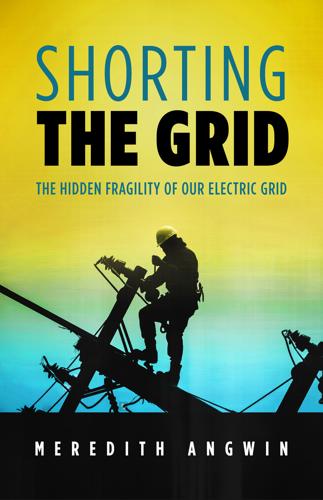
Shorting the Grid: The Hidden Fragility of Our Electric Grid
by
Meredith. Angwin
Published 18 Oct 2020
Renewable advocates claim many advantages for this new type of grid, though they usually explain that the grid has to be modernized to be a “smart grid” before the transition can take place. The reason the grid needs to be modernized is that electricity production and consumption will be a two-way street. An electricity consumer will also be an electricity producer, and so communications between the grid and the “prosumer” (producer and consumer) will be important. Becoming a prosumer BEFORE GOING FURTHER INTO the pros and cons of the prosumer and the smart grid, we have to ask ourselves some questions about who these “prosumers” are. A Department of Energy webpage about prosumers and consumers shows a man receiving electricity and a bill from the power company.
…
For many people, the idea that the power company can manipulate electric devices within their home is extremely distasteful. Can they turn off my air conditioner, delay the start of a cycle of my dishwasher, delay the start of my washing machine? For many people, this is unacceptable. In my blog post “The Oversold Smart Grid: Dismissing the Work of Women,”261 I took aim at a local commercial extolling the smart grid. The commercial showed a dryer running in the middle of the night. As a woman who raised two children, I can tell you that laundry doesn’t do itself. If that dryer is running, someone turned it on. And someone will have to be around to take the clothes out so they won’t get wrinkled.
…
John, “Tendril Merges With Simple Energy to Form Uplight,” gtm: (website of Greentech Media), July 15, 2019, https://www.greentechmedia.com/articles/read/tendril-simple-energy-merge-to-form-uplight. 257 Marsha Stoltz, “‘Smart’ electric meters come to NJ, bringing fears of Big Brother,” northjersey.com, May 29, 2018, https://www.northjersey.com/story/news/new-jersey/2018/05/29/smart-meters-arrive-nj-bringing-fears-big-brother/577870002/. 258 “Energy Star and the Connected, Smart Home (web page),” ICF International, Inc., September 15, 2017, http://eedal2017.uci.edu/wp-content/uploads/Friday-30-Feldman.pdf 259 “Residential Demand Response Programs (web page),” ClearlyEnergy, updated October 10, 2016, https://www.clearlyenergy.com/residential-demand-response-programs. 260 “Summer Discount Plan,” Southern California Edison (website), undated, https://www.sce.com/residential/rebates-savings/summer-discount-plan. 261 Meredith Angwin, “The Oversold Smart Grid: Dismissing the Work of Women,” Yes Vermont Yankee, April 7, 2013, https://yesvy.blogspot.com/2013/04/the-oversold-smart-grid-dismissing-work.html#.XeFxCKfMxTY. 262 “Historical Data Graphs per Year: United States,” IndexMundi (website), June 30, 2018, https://www.indexmundi.com/g/g.aspx?c=us&v=81. 263 Using the data from IndexMundi referenced in the previous note, we calculate: In 2008, electricity consumption in the United States was 3,892 million MWh, population 304 million, for a usage of 12.8 MWh/person.
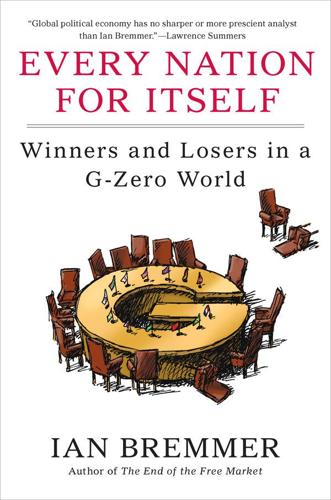
Every Nation for Itself: Winners and Losers in a G-Zero World
by
Ian Bremmer
Published 30 Apr 2012
As infrastructure networks like power grids are digitized—i.e., made “smart”—and the number of entry points expands exponentially, entire systems will become more susceptible to cyberattack. Don’t misunderstand the stakes: The vulnerability and the potential value are enormous. The worldwide market value of smart grids is expected to rise from nearly $70 billion in 2009 to $170 billion by 2014. The United States and the European Union are leading the way in the deployment of smart grid technologies to link users to power plants, even as guidelines for regulating them are still being written. The U.S. National Institute of Standards and Technology has identified 137 data-exchange interfaces, each of which poses a potential entry point for a cyberintruder.
…
Over the past decade, the threats that increasingly skilled individual hackers and organized criminals pose for businesses have grown, but the risks have been commercial and social, not political. Two factors are changing that. First is the convergence of systems onto the Internet—of power and utility systems (with the move by so many countries to the use of smart grids to manage electricity generation), and information systems more broadly for major sectors of the economy (with the shift to cloud or network-based computing). These trends provide attackers looking to strike at governments or large populations with plenty of tempting and accessible targets. Second, governments themselves are moving aggressively into cyberspace.
…
W., 163 Bush, George W., 11, 64, 65, 141 Cairn Energy, 97 Cambodia, water security in, 105 Canada, 2, 25, 43, 47 in Arctic Council, 96–97 climate change and, 94 as pivot state, 122–23 Cancún, Mexico, 95 Carpenter, Ted Galen, 172 Castro, Fidel, 138 Castro, Raúl, 138 Chávez, Hugo, 9, 138 cheaters, 128 Chechnya, 37 Chile, 177 China, 3, 9, 10, 15, 16, 21–22, 25, 26, 28, 44, 55, 69, 70, 114–15, 117, 118, 121, 122, 124, 125, 129, 139, 142–49, 167–68, 170, 177–78, 182, 183, 206n aging population of, 120 Brazil’s trade with, 116, 118 civil war in, 40 climate change and, 94 corruption in, 52, 180 currency of, see yuan dams in, 105 defense spending by, 21 demand for grain in, 98–99 demonstrations in, 53, 145–46, 169 divergence with U.S. economic policies, 62–63, 77 economic expansion in, 21, 22–23, 59–61, 62, 84, 98–99, 143–45, 159 energy imported by, 30, 61, 114 Eurozone problem and, 38 food security in, 147, 169 foreign communications companies and, 93–94 foreign investment in, 142–48 foreign investments of, 80 foreign land purchased by, 102 foreign partnerships with firms from, 127–28 in G2 with U.S., 155–84 Germany compared to, 164–65 growing Internet use in, 89 ICANN opposed by, 88 India’s rivalry with, 25, 115, 173, 178 indigenous innovation strategy in, 84–85 inequality in, 52 intellectual property laws and, 84–85 Internet censored in, 90, 92, 146 Internet protocol in, 89 Japan’s tension with, 69, 70, 71, 114, 135–36, 173, 178 navy of, 71 need for reform in, 180 nuclear program of, 57, 76 outsourcing by, 127 pollution caused by, 158 possibility of U.S. war with, 170–74 safety standards and, 86 social safety net needed in, 22–23, 146–47 special economic zones in, 52 state capitalism in, 62, 78 state-owned enterprises in, 59, 61, 86, 144, 148, 160 suspicion of U.S. in, 91 trade by, 34, 52, 59–60, 63, 70, 79, 118–19, 120, 143, 153, 154, 158, 161, 163, 193–94 urbanization in, 52, 99, 118 U.S. defense contractors punished by, 129 U.S. vilification of, 13–14, 77 water security in, 105, 129–30, 140, 147 in World Bank and IMF, 29–30 as world’s largest creditor nation, 158 China Development Bank, 29, 118, 135 China Mobile, 86 China National Petroleum Corporation, 127 China Telecom, 86 China Unicom, 86 “Chinese Professor,” 162 Churchill, Winston, 151 Citizens Against Government Waste, 162 climate change, 3, 7–10, 94–97, 101, 104–5, 106, 133, 158, 168 Clinton, Bill, 163 Clinton, Hillary, 124n Cold War, 11, 30, 44, 54, 63, 65, 73, 76, 82–83, 133, 134, 137, 186, 191 Coleridge, Samuel Taylor, 67 Colombia, 25, 177 Commerce Department, U.S., 87 Communist Party, Chinese, 61, 130, 143, 146, 148, 162 Concert of Europe, 166–67 Congo, Democratic Republic of, 106, 130, 132 Congress, U.S., 191 Convention on the Law of the Non-Navigational Uses of International Watercourses (1997), 104 Cooperative Framework Agreement, 106 Copenhagen climate summit, 7–9, 21, 30, 94, 109, 110, 167, 168 Côte d’Ivoire, 130 Council on Foreign Relations, 13 creative destruction, 132, 160 Cuba, 138 cyberattacks, 3, 68, 72–76, 107, 128, 129, 133, 154, 161, 169–70, 171 Daewoo Logistics, 102 dams, 105, 106 Darwin, Charles, 126 defense contractors, 129 Democratic Party of Japan, 20 Democratic Party, U.S., 163 Deng Xiaoping, 52, 53, 59, 60 Denmark, 96–97 dinosaurs, 139–40, 160 Doctors Without Borders, 135 Doi Moi, 121 dollar, U.S., 164 convertability of, 43, 49, 50 devaluations of, 49 dominance of, 81–82 exchange rates tied to, 39, 43 as international reserve currency, 55 oil priced in, 81–82 Domain Name System, 87 droughts, 101, 106 drug trafficking, 183 Durban, South Africa, 94–95 Eastern Europe, 187 E. coli, 169 Ecuador, 177 Egypt, 48, 69, 113, 169, 179 food riots in, 98 revolution in, 112, 117, 175, 192–93 unrest in, 89 water supply of, 106 elections, 2009, Iranian, 192 elections, 2012, Russian, 182 emerging nations, 3, 16, 21, 26, 27, 29–30, 34–35, 44, 54, 59, 88, 119, 120, 179, 187 communication standards and, 84 exports from, 111 growing influence of, 76–77 rising middle class in, 98 environment, 68 equity funds, 127 Erdogan, Recep, 55 Estonia, 72 ethanol, 100 Ethiopia, 72, 106 euro, 17, 38, 54–55, 71, 155, 164, 165, 155, 181 as reserve currency, 55, 83 Europe, 16, 148–49, 170 aging population of, 120 budget crises in, 188 China’s trade with, 143 cooperation in, 174 debt and credit crisis in, 3, 17, 45, 181 defense budgets in, 134 intellectual property laws and, 84 Internet protocol in, 89 possible fragmentation in, 181 post–World War II reconstruction needed in, 38–39, 44–45 privacy laws in, 68 reduced role of, 194 European Central Bank, 71, 176 European Commission, 71 European Union, 54, 71, 117, 122, 123, 126, 132, 138, 155, 169 border controls in, 19 middle class in, 55 possible collapse of, 181 smart grids in, 73 Export-Import Bank of China, 29, 118, 135 exposed states, 135–36 ExxonMobil, 97, 127 Facebook, 91, 92–93 Ferguson, Niall, 158 “Fight the Debt Limit Extension,” 162 financial crisis, 2008, 2, 4, 11–12, 25–26, 62, 63, 65, 143, 152, 167 Finland, in Arctic Council, 96–97 food, 68, 69 security of, 3, 5, 97–104, 107, 133, 147, 152, 155, 168–69, 183 Fourcade, Jean-Pierre, 47 4G mobile phone standard, 86 France, 19, 25, 28, 39, 44, 45, 47, 166, 167 government intervention in economy in, 78 nuclear program of, 57 possible fragmentation of, 181 post–World War II reconstruction needed in, 39–40 freedom of speech, 89 French Revolution, 167 G2, 21, 35, 156 U.S.

The Future Is Faster Than You Think: How Converging Technologies Are Transforming Business, Industries, and Our Lives
by
Peter H. Diamandis
and
Steven Kotler
Published 28 Jan 2020
As the daily water needs for a planet of 7 billion are between 350 and 400 million gallons a day, using technologies like Skysource to tap the more than 12 quadrillion gallons contained in the atmosphere at any one time might be the only way to quench that thirst. Or consider the “smart grid for water,” which is what happens when exponential technologies converge on the farm. The smart grid allows for everything from precise soil monitoring and crop watering to the early detection of insects and disease. Estimates vary, but most studies find the smart grid capable of saving us trillions of gallons a year—which is the point. We’re not lacking in technological know-how. We are water-wise, but execution dumb, attacking a biosphere-wide problem with a piecemeal approach.
…
See: https://techcrunch.com/2018/10/22/water-abundance-xprizes-1-5m-winner-shows-how-to-source-fresh-water-from-the-air/. 350 and 400 million gallons a day: Adele Peters, “A Device That Can Pull Drinking Water from the Air Just Won the Latest XPrize” Fast Company, October 20, 2018. See: https://www.fastcompany.com/90253718/a-device-that-can-pull-drinking-water-from-the-air-just-won-the-latest-x-prize. “smart grid for water”: Trevor Hill, The Smart Grid for Water: How Data Will Save Our Water and Your Utility (Advantage, 2013). saving us trillions of gallons a year: Ibid. In the US alone, we lose at least an estimated 1.7 trillion gallons of water per year to water main breaks. Climate Change for Optimists Forty billion tons of CO2: According to Maxwell Rosner’s Our World in Data, 35.46 billion tons of CO2 were emitted in 2017.
…
Researchers at MIT are using carbon nanotubes to create “ultra-capacitors” that increase battery capacity by as much as 50 percent. And there’s much more to come. So the challenge isn’t generating energy from renewables or storing the energy that gets generated, it’s doing all this worldwide. This isn’t just about building Ramez Naam’s continent-wide smart grid, it’s about building one of them on every continent. It’s resource management on a global level, because, like it or not, when it comes to the environment, we really are in this together. Electric Cars Are Gaining Speed The final piece in the energy puzzle is transportation. In America, fueling our cars and trucks accounts for one-fifth of our total energy budget.

CIOs at Work
by
Ed Yourdon
Published 19 Jul 2011
And the last thing—and this is probably different than all the other CIOs that you’re going to encounter, because of the nature of the utility industry and the moment in time where we find ourselves with all the smart grid and smart grid money and expansion of the grid and the cyber security threats—I spend a significant amount of my time actually talking to the Department of Energy, the Utilities Telecom Council, lobbyists, [and] political people, working with the other CIOs in our industry about what positions we’re going to take. [I] also have a technical Congressional appointment, … I’m on the Smart Grid Advisory Committee for the next three years, so I’m spending a lot of my time on large industry issues with a lot of political overtones, and God knows, nobody would have ever accused me of being a politician.
…
In 2003, the Association for Women in Computing named her as one of the Top Michigan Women in Computing. In August 2004, CORP! Magazine named her as one of Michigan’s Top Business Women. She is a member of IBM’s Board of Advisors and the DTE Energy Foundation Board of Directors, as well as an appointee to the Smart Grid Advisory Committee of the National Institute of Standards and Technology (NIST), and a fellow of the Cutter Business Technology Council. Lynne Ellyn: Hello. Ed Yourdon: Hi, Lynne. Ellyn: I’m sitting outside in Ocala, Florida. Yourdon: Aha. So you’re not in Detroit. I very much appreciate your taking the time.
…
Yourdon: Let me switch gears to another question area that I imagine you would enjoy talking about. What are some of the new trends that you see coming down the line that you think are going to influence the IT industry in your world of utilities in the next few years? Ellyn: Well, the big one, of course, is the “smart grid.” The problem with that title is that it implies that there is a stupid grid. Yourdon: [laughter] Ellyn: The grid is highly automated now. This is a re-automation of the grid. For example, at one time (this predates me) Detroit Edison had 140 engineers that just operated it. Today it’s done with just a dozen or fewer.

Cyber War: The Next Threat to National Security and What to Do About It
by
Richard A. Clarke
and
Robert Knake
Published 15 Dec 2010
The Federal Energy Regulatory Commission (FERC) promises that in 2010 it really will start penalizing power companies that do not have secure cyber systems. What they have not said is how the Commission will know who is in violation, since the FERC doesn’t have the staff to regularly inspect. The U.S. Department of Energy, however, has hired two cyber security experts to determine if the $3.4 billion in Smart Grid grants are going to new programs that are adequately secured. Smart Grid is the Obama Administration’s idea to make the power grid even more integrated and digitized. Power companies can ask for some of that money by submitting proposals to the Energy Department. When they do, the two experts will read the proposals to see if there is a section somewhere that says “cyber security.”
…
There are no publicly available standards. One idea for a standard might be that the taxpayers don’t give any of the $3.4 billion in Smart Grid money to companies that haven’t secured their current systems. Don’t expect the Energy Department to use that standard anytime soon, because that would mean taking advantage of this unique federal giveaway program to incentivize people to make things more secure. That smacks of regulation, which, of course, is just like socialism, which is un-American. So, we will soon have a more digital Smart Grid, which will also be a Less Secure Grid. How could we make the U.S. national electrical system a Smart and Secure Grid?
…
Fortunately, the Federal Electric Regulatory Agency in 2008 finally required electric companies to adopt some specific cyber security measures and warned that it would fine companies for noncompliance up to one million dollars a day. No one has been fined yet. The companies have until sometime in 2010 to comply. Then the commission promises it will begin to inspect some facilities to determine if they are compliant. Unfortunately, President Obama’s “Smart Grid” initiative will cause the electric grid to become even more wired, even more dependent upon computer network technology. The same way that a hand can reach out from cyberspace and destroy an electric transmission line or generator, computer commands can derail a train or send freight cars to the wrong place, or cause a gas pipeline to burst.

The Entrepreneurial State: Debunking Public vs. Private Sector Myths
by
Mariana Mazzucato
Published 1 Jan 2011
To be successful they must address the uncertainty and cost behind the innovations that are required to meet the targets.2 Supply-side policies are important for putting money ‘where the mouth is’, by financing firms directly or indirectly through the subsidy of long-term market growth, in the hope that it will accelerate the formation of innovative companies that can deliver a green industrial revolution. Given the success of these policies, and in addition, the success and spread of renewable energy sources like wind and solar power, the opportunity for ‘smart grids’ to digitize energy supply networks is both created and stabilized. I say created, because the intermittent nature of renewable power will have to be more closely managed. I say stabilized, because the need (‘demand’) for smart grid technology will be greatest in the countries that go farthest towards integrating renewable energy into their grids. Success in transforming our energy system is as full of collective and complementary industrial changes, in other words, but getting serious about renewable energy is a necessary and critical step towards bringing energy technology into the twenty-first century.
…
As characteristically ‘intermittent’ and ‘diffuse’ sources of energy, wind and solar power have benefitted from what Madrigal (2011, 263) describes as ‘throwing software at the problem’: increasing the productivity and reliability of wind and solar projects with advanced computer modelling, management of power production and remote monitoring. Investments in a ‘smart grid’ are meant to digitize modern energy systems to optimize the flexibility, performance and efficiency of clean technologies while providing advanced management options to grid operators and end users. Such flexibility and control is not unlike the sort that emerged with digitized communication networks.
…
The ICT revolution that created digitized communications not only created new commercial opportunities (such as through the medium of the Internet), but has provided an invaluable platform for the generation, collection, access and dissemination of knowledge of all forms. Given time and broad deployment, the smart grid could change the way we think about energy, create new commercial opportunities and improve the economics of renewable energy by establishing new tools for optimal energy supply management and demand response. To begin the green industrial revolution and to tackle climate change we are again in need of an active State that takes on the high uncertainty of its early stages, which the business sector fears.

Internet for the People: The Fight for Our Digital Future
by
Ben Tarnoff
Published 13 Jun 2022
The story of the Gig began two years earlier, when EPB—which remains one of the largest publicly owned electric distribution utilities in the country—began building a “smart grid.” Funded by a bond issue and a federal stimulus grant, this undertaking promised to make the grid more efficient by embedding sensors and other digital devices that monitored the system in real time. Problems could be detected early, which would help reduce outages and improve reliability. The smart grid didn’t just end up saving EPB money. It also handed them the infrastructure they needed to become an ISP. The smart grid ran on a fiber-optic network, which is what enabled the monitoring devices to communicate.
…
Sanders called for $150 billion in both grants and technical assistance to municipalities and states “to build publicly owned and democratically controlled, co-operative, or open access broadband networks.” Significantly, Sanders also tied his proposal to the Green New Deal. The same networks that deliver internet service could support smart grids that improve energy efficiency, as in Chattanooga. This kind of support is indispensable for bringing community networks from the margins to the mainstream. It could help modernize existing networks, and create thousands of new ones. Where possible, new networks should be planted in existing institutions that already have technical expertise, infrastructure, or relationships with the community; an electric and telephone cooperative that has thousands of member-owners will probably make a better community network than one made from scratch, for instance.
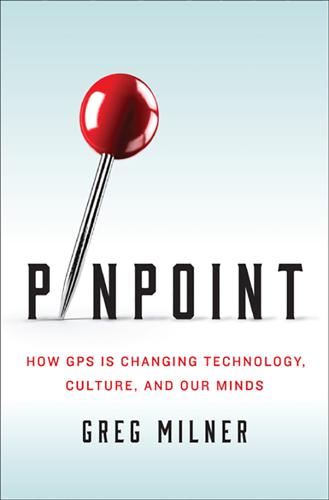
Pinpoint: How GPS Is Changing Our World
by
Greg Milner
Published 4 May 2016
An alternative, developed in the late 1980s by two Virginia Tech professors, was already a fixture in China and a few other countries. Phasor measurement units (PMU), also known as Synchrophasors, gained traction in the years after these blackouts, and have shown a huge surge of popularity in recent years. A network of Synchrophasors—a “smart grid”—is like a hyperactive steroidal SCADA. Once every second, a Synchrophasor gathers 120 different types of data about the power at its node and transmits them instantly. Operators monitoring the grid can see the data displayed on a map, providing a real-time overview of power flow. Electrical grids are complex organisms that obey no national borders, with power flowing in different directions across large distances.
…
Synchrophasors are popping up around the globe. Although India’s Synchrophasors were in too much of a nascent state to prevent the crippling 2012 blackouts that left 700 million people without power, the country’s state-owned utility company had already hailed the technology as a “revelation.” For a smart grid to have value, its Synchrophasors must observe and report at exactly the same moment. Because they are spread over a large area, the easiest way to synchronize them is by connecting them to high-precision clocks sourced to GPS. If someone were to introduce a bogus GPS signal that disrupted the clocks and broke the synchrony, causing an distorted and possibly alarming overall view of power flow on the grid, what might happen?
…
The technology is at an intermediate stage, not yet considered a “critical cyber asset,” a classification used for hardware, software, data streams, and networks whose disruption could bring key parts of the critical infrastructure to the brink of disaster within fifteen minutes. But the next step is to make these smart grids smarter, giving them the ability to take direct action. They could redirect power to allocate it more efficiently or safely, and even shut the whole mess down, killing the power for thousands of users to isolate a problem before it spreads. If a spoofed GPS signal distorted Synchrophasor data, human operators might sense something was askew before taking action.
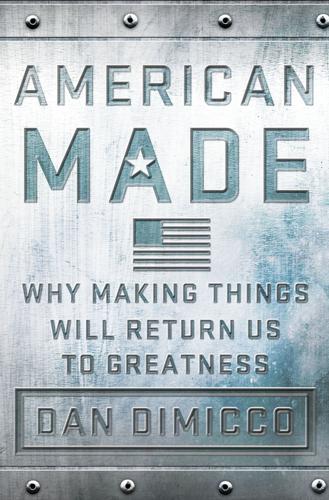
American Made: Why Making Things Will Return Us to Greatness
by
Dan Dimicco
Published 3 Mar 2015
Figure 7.1 Definitions of “Green Jobs” Source: “Industries Where Green Goods and Services Are Classified,” Bureau of Labor Statistics, August 24, 2010, http://www.bls.gov/green/final_green_def_8242010_pub.pdf. Sunil Sharan, the former director of General Electric’s Smart Grid Initiative, wrote in the Washington Post in 2010 that the belief that green jobs could make a serious dent in the U.S. unemployment rate was always far-fetched. Sharan noted how the Obama administration allocated a little over $4 billion in stimulus money to building the smart grid, which is an important piece of infrastructure for our future. The plan was to install 20 million “smart meters” over five years. Smart meters are simply digital versions of the old spinning electric meter.
…
Rebuilding America’s urban wastewater systems, water infrastructure, and pipelines, along with schools and public buildings, could create as many as 825,000 direct and indirect jobs for construction workers and related support industries. Initial investment: $33 billion. Adopting an “all-of-the-above” energy policy that includes coal, natural gas, oil, nuclear, wind, and solar could create 2 million direct and indirect jobs as we build new smart grids, run transmission lines, and construct power plants and distribution facilities. Initial investment: $102 billion.16 In total, a revitalized infrastructure agenda can create nearly 10 million jobs for Americans who sorely need them. And beyond the jobs, what sort of benefits would that investment provide?
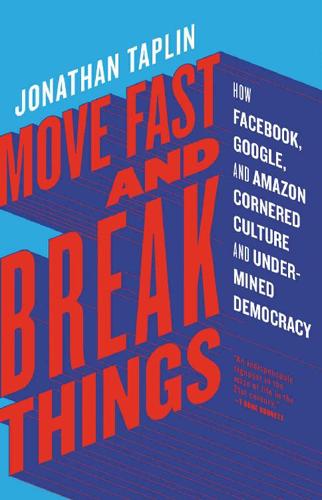
Move Fast and Break Things: How Facebook, Google, and Amazon Cornered Culture and Undermined Democracy
by
Jonathan Taplin
Published 17 Apr 2017
There was only one problem: the city sits in the middle of Tornado Alley, and the electricity goes out several times a year during big storms. Since the plant was going to be highly roboticized, electrical outages would be particularly problematic. So the EPB promised to build a smart grid so that when a tree fell on the wires on Flynn Street, only Flynn Street would go dark, because the smart grid would route power around the trouble. So they built the smart grid, Volkswagen built its plant, and the plant hasn’t had any downtime. But once EPB had strung fiber-optic cable on every lamppost in town, it realized that each of these posts stood less than one hundred feet from a home to which the company could sell broadband service—and there were at least fifty thousand of these homes.
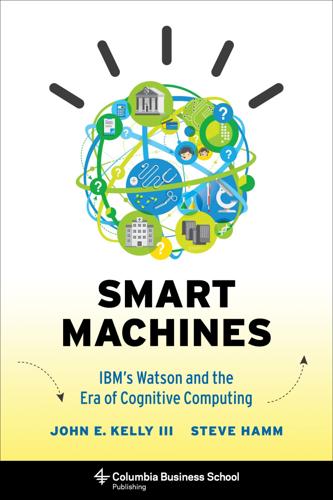
Smart Machines: IBM's Watson and the Era of Cognitive Computing (Columbia Business School Publishing)
by
John E. Kelly Iii
Published 23 Sep 2013
Their work has now advanced beyond the pure science stage into product development, with a goal of reaching the market within the next few years. This melding of light and electricity will help computers move data around with a speed and energy efficiency that is impossible using today’s technologies. SCENARIO: ADDING INTELLIGENCE TO THE ELECTRIC GRID Today’s “smart grids” aren’t actually very bright. Most electric utility systems that claim the “smart” label use advanced metering systems that enable customers to monitor their electricity use and enable two-way communications between the meter and the utility provider. The systems make it possible for utility companies to set pricing that varies by the season and the time of day, providing discounts to customers who shift energy use to off-peak periods.
…
This will make it easier for new sources of energy to be integrated into the system. It will provide strong incentives for conservation, hasten repairs after power outages, and make it possible for societies to expand electricity services without needing to make massive investments in new generation plants. When all of this comes about, smart grids will begin to truly deserve the name. JOURNEY OF DISCOVERY: RETHINKING HOW COMPUTERS ARE DESIGNED How much does it cost to move a single bit of data from point of origin to point of computation? Apparently, until recently, nobody bothered to try to answer that question—perhaps because it didn’t seem consequential.

Augmented: Life in the Smart Lane
by
Brett King
Published 5 May 2016
In 20 years, we believe that this type of smart transportation network will be the expectation of citizens living in a smart city. Not just because it will provide better transport for citizens, but because it will cost a fraction of what public transportation systems cost today to maintain and run. Smart Grids and Energy Systems Smart energy encompasses a wide range of technologies and initiatives, including the improved distribution and monitoring of electric power as well as better insulation of homes and offices. Renewable energy (RE) is important to the citizens of a smart city for a number of critical reasons: • reduced air and water pollution for better health and productivity • decreased costs (as solar energy and other RE costs come down) • resilience, with power availability even in case of network disturbances due to overloads, natural disasters or terrorist acts The benefits of using renewable energy to population health can be dramatic, with thousands saved from illness or death.
…
Smart cities, however, must be underpinned by the appropriate infrastructure based on fibre-optic and high-speed wireless technologies. This infrastructure allows for the development of smart communities, supporting connected homes, intelligent transport systems, mHealth, eGovernment and massive open online courses/education (MOOC/E), smart grids and smart energy solutions, etc. Central to this will be infrastructure that starts to run itself, responding in real time. Automated UAVs, autonomous emergency vehicles and robots, and sensor nets giving feedback loops to the right algorithms or AIs to dispatch those resources. Artificial intelligence will not only be an underpinning of smart cities, it will also be necessary simply to process all of the sensor data coming into smart city operations centres.
…
Employment and Business in the Augmented Age—Winners and Losers Large human-dominant or process-based industries will be decimated by the AI, experience design and smart infrastructure disruptions that underpin the Augmented Age. The losers will be: 1. Big Energy. Four key forces will challenge any fossil fuel producer or incumbent energy system: • ultra-cheap renewables • smart grids • electric vehicles • energy storage systems (batteries like the Tesla Powerwall, fuel cells, etc.) Droves of gas (or service) stations will go out of business, wired electricity poles will fall into disrepair as whole cities and regions become net energy producers and mining will shift away from extracting fuels to extracting resources to power the new smart world. 2.
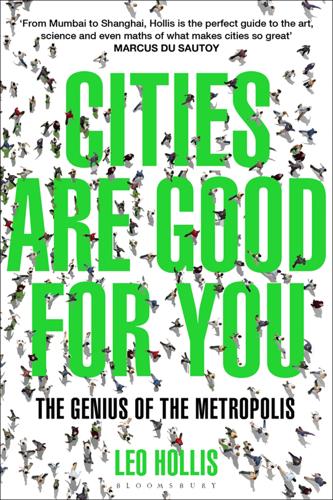
Cities Are Good for You: The Genius of the Metropolis
by
Leo Hollis
Published 31 Mar 2013
However, a group of researchers decided to work with 33,000 drivers and, using a combination of dashboard-mounted GPS monitors and cloud-computing technology, were able to create an intelligent, real-time traffic service. Studying congestion on all 106,579 roads within the city, a distance of over 5,500 kilometres, they created a smart grid forming a digital map of the city. This was also integrated with weather and public-transit information. As a result, in testing, the new smart grid improved 60–70 per cent of all taxi trips and made them significantly faster. The smart city is being built from a combination of big city-hall projects alongside major software companies as well as more humble schemes that can be found on the 3 or 4G mobile in your pocket or the sat nav on the dashboard.
…
The whole city will operate from a hub that functions as Songdo’s ‘brain stem’.19 Here, for example, cameras will report on the flow of pedestrians on the street, and brighten or dim the pavement lamps accordingly; ‘radio frequency identification tags’ will be attached to car number plates to watch traffic and reaction to congestion; monitors on buildings and roads will report on conditions to avoid costly works or unnecessary delays; there will be real-time weather forecasts that can prepare the power grid for surges in demand when it gets suddenly cold; at other times, the smart energy grid will monitor usage and flows and predict demand as well as search for efficiencies; there will also be a smart grid for water and waste. Each home will also become smarter: there will be touchpads in each apartment so that one can control temperature and lighting and track energy use. Smart architecture will help the sustainable city – there will be roof gardens planted with vegetation to reduce the ‘heat island’ effect, and reduce storm-water run-off.
…
From theorists prophesying their visions, architects with their design innovations, management consultants who wish to sell their solutions, software companies who have developed the proprietary code to run the new world, making and marketing the smart city is big business. Big players such as IBM, Cisco, Siemans, Accenture, McKinsey and BoozAllen are all entering the debate on the intelligent city, the smart-grid, next-generation buildings, developing the tools to bring efficiency, sustainability and a connected metropolis. These big companies are talking to city halls, offering end-to-end solutions, the complete package to retrofit the everyday city for the twenty-first century with a very hard sell. How Smart Is Your City, produced by the IBM Institute of Business Value, supplies tools for assessing the connectedness of any city and offers a road map: Develop your city’s long-term strategy and short-term goals Prioritise and invest in a few select systems that will have the greatest impact Integrate across systems to improve citizen experiences and efficiencies Optimise your services and operations Discover new opportunities for growth and optimisation.21 In a corresponding document from the same team, A Vision of Smarter Cities, the researchers go into more detail on how ‘smartness’ can be achieved.

This Is Not a Drill: An Extinction Rebellion Handbook
by
Extinction Rebellion
Published 12 Jun 2019
Current city energy systems lock citizens into a brown energy commodity that is priced to concentrate wealth and global political power rather than to create a common good that underpins a flourishing life for all. The negative results are all around us: localized pollution, increases in greenhouse gases, fuel poverty and high utility prices. In their place, we need to unlock a civic-energy revolution of distributed energy networks, local smart grids, municipally owned energy and zero-emissions, community-led developments. This involves new planning ordinances and mass national retrofit programmes to ensure that every single building is zero carbon; municipal energy companies modelled on the German Stadtwerke, which generate from 100 per cent renewable sources and undercut corporate energy giants; and people’s energy action to ensure a 100 per cent moratorium on fossil fuels and fracking.
…
This involves new planning ordinances and mass national retrofit programmes to ensure that every single building is zero carbon; municipal energy companies modelled on the German Stadtwerke, which generate from 100 per cent renewable sources and undercut corporate energy giants; and people’s energy action to ensure a 100 per cent moratorium on fossil fuels and fracking. A vast transfer of subsidies underpins all this. Civic innovations, such as those developed by Repower London, are flourishing, especially in Combined Heat and Power (CHP), onshore wind, solar photovoltaics, anaerobic digestion, local smart grids, energy-storage technologies and the new skills that will underpin these. The new civic-energy sector could really mean that the age of the large power plant is replaced with a constellation of distributed but highly connected small and medium zero-emission energy providers. Every home, garden and street becomes a micro power station.
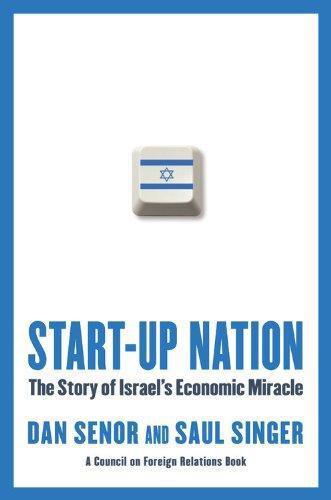
Start-Up Nation: The Story of Israel's Economic Miracle
by
Dan Senor
and
Saul Singer
Published 3 Nov 2009
Overcoming the price barrier was the biggest breakthrough, but it wasn’t sufficient for electric vehicles to become, as Agassi called it, the “Car 2.0” that would replace the transportation model introduced by Henry Ford almost a century ago. A five-minute fill-up will last a gas car three hundred miles. How, Ghosn wondered, can an electric car compete with that? Agassi’s solution was infrastructure: wire thousands of parking spots, build battery swap stations, and coordinate it all over a new “smart grid.” In most cases, charging the car at home and the office would easily be enough to get you through the day. On longer drives, you could pull into a swap station and be off with a fully charged battery in the time it takes to fill a tank of gas. He’d recruited a former Israeli army general—a man skilled at managing complex military logistics—to become the company’s local Israeli CEO and lead the planning for the grid and the national network of charging/parking spots.
…
Third, Israelis are natural early adopters—they were recently number one in the world in time spent on the Internet and have a cell phone penetration of 125 percent, meaning lots of people have more than one. No less importantly, Agassi knew that in Israel he would find the resources he needed to tackle the tricky software challenge of creating a “smart grid” that could direct cars to open charging spots and manage the charging of millions of cars without overloading the system. Israel, the country with the highest concentration of engineers and research and development spending in the world, was a natural place to attempt this. Agassi actually wanted to go even further.
…
He needed a country, a car company, and the money, but to get any one of them he first needed the other two. For example, when Peres and Agassi had gone to then prime minister Ehud Olmert to secure his commitment to make Israel the first country to free itself from oil, the premier had set two conditions: Agassi had to sign on a top-five carmaker and raise the $200 million needed to develop the smart grid, turning half a million parking spaces into charging spots, and building swap stations. Now Agassi had the carmaker, and it was time to fulfill Olmert’s second condition: money. Still, Agassi had heard enough to believe that his idea could take off. Stunning the tech world, he quit his job at SAP to found Better Place.

Our Final Invention: Artificial Intelligence and the End of the Human Era
by
James Barrat
Published 30 Sep 2013
The ongoing implementation of the “smart grid” means that soon all the regional grids and all our homes’ energy systems will be connected to the Internet. In brief, the smart grid is a fully automated electricity system that’s supposed to improve the efficiency of electric power. It brings together old power sources like coal- and fuel-burning electrical plants with newer solar and wind farms. Regional control centers will monitor and distribute energy to your home. Some 50 million home systems across the country are already “smart.” The trouble is, the new smart grid will be more vulnerable to catastrophic blackouts than the not-so-dumb old grid.

About Time: A History of Civilization in Twelve Clocks
by
David Rooney
Published 16 Aug 2021
The previous year, cell-phone apps in use near the Kremlin building, in the Russian capital of Moscow, had been showing the phones’ position incorrectly as Vnukovo Airport, a little under twenty miles away. Commentators described the spoofing attacks as a form of electronic warfare. The risks involved in all this are huge. Experts working with the latest electric supply networks, known as smart grids, rely on measuring equipment that is synchronized to within billionths of a second. In one reported case, a test device locked on to a single satellite signal, rather than the several signals it needed to get an accurate fix, and the system thought there had been a major electrical fault, so it shut down two 500 kV power lines.
…
“Governing the Time of the World,” in Time, Temporality and Global Politics, ed. Andrew Hom, Christopher McIntosh, Alasdair McKay and Liam Stockdale, 59–72. Bristol: E-International Relations Publishing, 2016. 11. WAR Allnutt, Jason, Dhananjay Anand, Douglas Arnold, et al. Timing Challenges in the Smart Grid (NIST Special Publication 1500-08). Gaithersburg: National Institute of Standards and Technology, 2017. Curry, Charles. Sentinel Project: Report on GNSS Vulnerabilities. Lydbrook: Chronos Technology Ltd., 2014. Dudziak, Mary. War Time: An Idea, Its History, Its Consequences. Oxford: Oxford University Press, 2012.
…
See hourglasses Sardar, Ziauddin, 45 Sartor Resartus (Thomas Carlyle), 52 Sassoon, Edward, 155 satellite navigation systems, 199–200, 205, 225 See also GPS clocks Sawai Jai Singh II (maharaja of Jaipur), 82–83, 86–89, 93 Schoen, Douglas, 193 Schwartz, Peter, 219 Science Museum, London, 137–38, 220 scientific revolution, 34 Scobie-Youngs, Keith, 114 sea clocks, 52 Seiko, 214, 217 Sharma, Virendra Nath, 86 Siena, Italy, 46–51 Sikhism, 31 Šindel, Jan, 38 Siri, 186 slave clocks, 118–19 slavery astronomy and, 103 free-pendulum clocks and, 118–19 resistance against clocks and, 164–65 Sloan Digital Sky Survey, 86 smart grids, 5 Smith, Adam, 100 Smith, Iain Duncan, 195 Smith, Mark, 165 Smyth, Charles Piazzi, 104 South African War (1899–1902), 203 speaking clocks, 177–81, 182–86 speed clocks, 163–64 Spencer Jones, Harold, 180 spoofing, 212–13 Sputnik, 95–96, 199 Srivastava, Sanjay, 22 standardization. See time standardization Standard Time Company, 72, 148–49 Stanley, Henry Morton, 113 Stenning, Richard, 187 Stephens, Carlene, 192 stock exchange clock, Amsterdam, 64, 65–66, 65, 68–69, 77–78 Storey, John, 159–60 Strasbourg Cathedral clock, 34–35, 192 Strobl, Andreas, 88 suffrage movement, 158–60, 161, 167 Sullivan, Patrick, 168 sundials ancient Greece, 12–14, 13 ancient Rome, 9–12 earliest use of, 15 mechanical clock accuracy and, 78 Samrat Yantra, Jaipur, 82–85, 84 temperance and, 58 surveillance, 225 Suso, Heinrich, 54, 55, 56–58, 57 synchronization chronometer manufacture and, 111 electric clocks and, 144 financial markets and, 72–73, 74, 75 GPS clocks and, 4 See also time standardization Synchronome company, 155, 156 Syrian Civil War, 206–7 Table Bay, 99–101, 102–3 Tallents, Stephen, 183–84, 185 telegraph, 147 Telehouse data center, London, 79–81, 80 telephone speaking clocks, 177–81, 182–86 temperance, 53–55, 56–58, 57, 150 temperance movement, 150–51 Ten Hours Bill, 163 Terry, Eli, 133–34, 135 textile industry, 163–64 Theodoric (Gothic king), 14 Thomas, Seth, 134 Thompson, E.
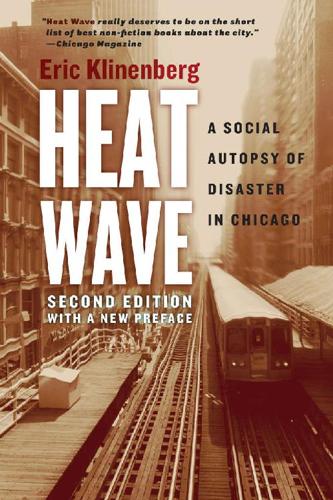
Heat Wave: A Social Autopsy of Disaster in Chicago
by
Eric Klinenberg
Published 11 Jul 2002
In 2009, however, the Department of Energy issued $3.4 billion in stimulus grants to a hundred smart-grid projects across the United States, including many in areas that are prone to heat waves and hurricanes. The previous year, Hurricane Ike had knocked out power to two million customers in Houston, and full restoration took nearly a month. When the city received $200 million in federal funds to install smart-grid technology, it quickly put crews to work. Nearly all Houston households have been upgraded to the new network, one that should be more reliable when the next storm arrives. Smart grids are in the early stages, but already they have several advantages over the old power systems.
…
Digital meters, which are installed in households and at key transmission points, automatically generate real-time information about both consumers and suppliers, allowing utility providers to detect failures immediately, and sometimes also to identify the cause. This means that, after an outage, operators don’t need to wait for calls from angry customers or field reports from crews. Moreover, smart grids are flexible, capable of being fed by disparate sources of energy, including systems powered by the sun and the wind. When the energy industry develops better technologies for storing power from these renewable resources, the new networks should be capable of integrating them. Re-engineered grids will ultimately offer other benefits.

A Line in the Tar Sands: Struggles for Environmental Justice
by
Tony Weis
and
Joshua Kahn Russell
Published 14 Oct 2014
Trumka recognized that this would not happen simply through current market forces: “By themselves, capital markets will not properly incorporate climate risk and reward into pricing investment opportunities.” Investors need “government policies to make sure that critical investments get made— investments in building retrofits, in high speed rail and the smart grid, in carbon capture and sequestration.”17 Clean, renewable energy and energy conservation are cheaper than extreme fossil fuels and nuclear power. They are available right now. Many studies have shown that dollar for dollar, they produce far more jobs. If labour is to use its political clout to secure more jobs, the best way to do so is to fight for a new energy economy that rapidly phases out carbon-emitting fossil fuels and even more rapidly replaces them with renewable energy and conservation.
…
Within our cultural teachings lie these Indigenous Economic Principles: intergenerational thinking and equity (thinking for the seventh generation); inter- and intra-species equity (respect); and valuing those spiritual and intangible facets of the natural world and cultural practice (not all values and things can be monetized). Consider what may be one of the largest follies in economic thinking from fossil fuel supporters: the opportunity forgone costs. What this means is that we waste $200 billion or so on tar sands oil and infrastructure, and do not create weatherized and energy-efficient houses, a smart grid, energy-efficient vehicles, a relocalized food system, and renewable energy. And, ten years from now, we will in fact be in worse economic shape. Frankly, if we put that much money into weatherization, efficiency, relocalizing power production, and an energy-efficient grid powered by new renewables, as well as localized food and energy-efficient mass transportation systems, we would build a stronger economy and we would have a shot at lasting much longer than another fifty years.
…
Since the economic crisis, this “institutional ecology” project is associated with the idea of a “Green New Deal,” as part of a Keynesian stimulus package to tackle economic stagnation.11 Government stimulus funds, for example, could be mobilized to build the infrastructure for a transition to renewable—solar, wind, biofuels—energy and other “green” sectors rather than further lock in a high-carbon infrastructure. The Green New Deal also commonly includes: support for research and development into energy- and resource-efficient technologies; upgrading public infrastructure and building “smart grids”; retrofitting buildings; and expanding public transportation. Such “green” sectors, moreover, will tend to be relatively labour intensive and thus create more jobs than investment in “traditional” sectors. The basic idea is encouraging “green jobs” via “green growth” (as with the “market ecology” project of the neo-liberals) as a central means of transitioning to a low-carbon economy.
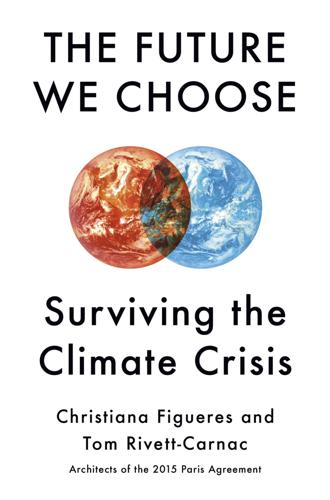
The Future We Choose: Surviving the Climate Crisis
by
Christiana Figueres
and
Tom Rivett-Carnac
Published 25 Feb 2020
All homes and buildings produce their own electricity—every available surface is covered with solar paint that contains millions of nanoparticles, which harvest energy from the sunlight,7 and every windy spot has a wind turbine. If you live on a particularly sunny or windy hill, your house might harvest more energy than it can use, in which case the energy will simply flow back to the smart grid. Because there is no combustion cost, energy is basically free. It is also more abundant and more efficiently used than ever. Smart tech prevents unnecessary energy consumption, as artificial intelligence units switch off appliances and machines when not in use. The efficiency of the system means that, with a few exceptions, our quality of life has not suffered.
…
First, it restricted their sale, and then it banned them from certain parts of cities—Ultra Low Emission Zones.16 Then came the breakthrough in the battery storage capacity of electric vehicles,17 the cost reductions that came from finding alternative materials for manufacture, and finally the complete overhaul of the charging and parking infrastructure.18 This allowed people easier access to cheap power for their electric vehicles. Even better, car batteries are now bidirectionally connected with the electric grid, so they can either charge from the grid or provide power to the grid when they aren’t being driven. This helps back up the smart grid that is running on renewable energy. The ubiquity and ease of electric vehicles were alluring, but satisfaction of our appetite for speed finally did the trick.19 Supposedly, to stop a bad habit you have to replace it with one that is more salubrious or at least as enjoyable. At first China dominated the manufacture of electric vehicles, but soon U.S. companies started making vehicles that were more desirable than ever before.
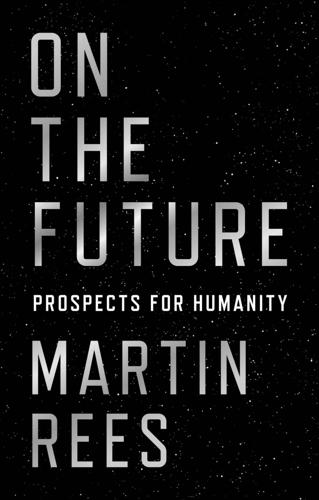
On the Future: Prospects for Humanity
by
Martin J. Rees
Published 14 Oct 2018
This is only now being reversed because they emit polluting microparticles that endanger healthy living in cities.) But the third measure is the most crucial. Nations should expand Research and Development (R&D) into all forms of low-carbon energy generation (renewables, fourth-generation nuclear, fusion, and the rest), and into other technologies where parallel progress is crucial—especially storage and smart grids. That is why an encouraging outcome of the 2015 Paris conference was an initiative called Mission Innovation. It was launched by President Obama and by the Indian prime minister, Narendra Modi, and endorsed by the countries of the G7 plus India, China, and eleven other nations. It is hoped they’ll pledge to double their publicly funded R&D into clean energy by 2020 and to coordinate efforts.
…
See also aliens, intelligent; planets Shockley, William, 68–69 Shogi, 87 short-termism, 28–29, 32, 45, 225, 226. See also timescales silicon chip, complexity of, 173 Silicon Valley, push for eternal youth in, 80–81 Simpson, John, 222 the singularity, Kurzweil on, 108 The Skeptical Environmentalist (Lomborg), 42 smallpox virus, 73 smart grids, 48 smartphones, 6–7, 83, 84, 91, 104, 216 Smith, F. E., 12 social media: globally pervasive, 27, 84; SETI enthusiasts on, 157; spreading panic and rumour, 109; used by global organisations, 219 SolarCity, 49 solar energy, 49, 50, 51 solar energy collectors in space, 143 solar flares, disrupting communications, 16 solar system: artefacts of extraterrestrials in, 161–62; origin of, 122, 123; origin of elements in, 122; this century’s exploration of, 143.

The Empathic Civilization: The Race to Global Consciousness in a World in Crisis
by
Jeremy Rifkin
Published 31 Dec 2009
Today the information and communications technologies that gave rise to the Internet are being used to reconfigure the world’s power grids, enabling millions of people to collect and produce their own renewable energy in their homes, offices, retail stores, factories, and technology parks and share it peer-to-peer across smart grids, just as they now produce and share their own information in cyberspace. Companies are already beginning to establish the beginnings of an infrastructure and market for what business leaders call “distributed capitalism.” Renewable forms of energy—solar, wind, hydro, geothermal, ocean waves, and biomass—make up the first of the four pillars of the Third Industrial Revolution.
…
Mini-grids allow homeowners, small- and medium-size enterprises (SMEs), and large-scale economic enterprises to produce renewable energy locally—through solar cells, wind power, small hydropower, animal and agricultural waste, and garbage—and use it off-grid for their own electricity needs. Smart metering technology allows local producers to more effectively sell their energy back to the main power grid, as well as accept electricity from the grid, making the flow of electricity bidirectional. The next phase in smart grid technology is embedding sensing devices and chips throughout the grid system, connecting every electrical appliance. Software allows the entire power grid to know how much energy is being used, at any time, anywhere on the grid. This interconnectivity can be used to redirect energy uses and flows during peaks and lulls, and even to adjust to the price changes of electricity from moment to moment.
…
The intergrid makes possible a broad redistribution of power. Today’s centralized, top-down flow of energy becomes increasingly obsolete. In the new era, businesses, municipalities, and homeowners become the producers as well as the consumers of their own energy—what is referred to as “distributed generation.” The distributed smart grid also provides the essential infrastructure for making the transition from the oil-powered internal combustion engine to electric and hydrogen fuel-cell plug-in vehicles. Electric plug-in and hydrogen-powered fuel-cell vehicles are also “power stations on wheels” with a generating capacity of twenty or more kilowatts.

The Tyranny of Merit: What’s Become of the Common Good?
by
Michael J. Sandel
Published 9 Sep 2020
For Obama, “smart” was the ultimate term of praise: “smart diplomacy,” “smart foreign policy,” “smart regulations,” “smart growth,” “smart spending cuts,” “smart investments in education,” “smart immigration policy,” “smart infrastructure projects,” “smart law enforcement,” “smart government,” “smart trade policy,” “smart energy policy,” “smart climate policy,” “smart entitlement reform,” “smart market reforms,” “smart environmental regulations,” “smart counterterrorism policy,” “climate-smart agriculture,” “smart development,” “smart market-oriented innovation,” and above all, “smart grids.” During his presidency, Obama spoke in praise of “smart grids” or “smart grid technologies” on more than one hundred occasions. Overall, he used the adjective “smart” in connection with policies and programs more than nine hundred times. 77 One of the defects of the technocratic approach to politics is that it places decision-making in the hands of elites, and so disempowers ordinary citizens.

Platform Revolution: How Networked Markets Are Transforming the Economy--And How to Make Them Work for You
by
Sangeet Paul Choudary
,
Marshall W. van Alstyne
and
Geoffrey G. Parker
Published 27 Mar 2016
Still others are privately employed, which means that the platform data they produce are extremely fragmented. Until financial incentives are aligned to encourage universal sharing of patient services and data, the growth of platforms within health care may be slow. Helping to bring about this alignment should be a key focus of regulators and industry leaders. ENERGY: FROM SMART GRID TO MULTIDIRECTIONAL PLATFORM In a world driven by vast amounts of energy—and in which the supply and usage of energy are intimately linked to such crucial factors as global climate change and international geopolitical conflict—we can’t afford to squander the energy supplies we have or use them in ways that harm the natural environment.
…
The more fully we can convert this network into an intelligent, interactive ecosystem of participants who can produce, share, conserve, store, and manage energy wisely together, the greater the value we can extract from our energy resources—and the healthier the world we’ll pass on to future generations. Today, energy companies and government authorities around the world are working with scientists and engineers to implement “smart grid” technologies that are improving the use and control of energy through digital systems for measuring, communicating, analyzing, and responding to vast amounts of data. Enhanced electrical metering tools are making it easier to implement variable pricing systems that improve the responsiveness of the system to variations in demand, encourage conservation, and smooth out fluctuations in energy availability and use.
…
, 275 side switching, 26, 198, 299 Siemens, 76, 204, 247, 284 signal-to-noise ratio, 199, 200 sign-up methods, 66, 81–85, 190 Silicon Valley, 16, 76–77, 112, 252–53, 281–82 siloed industries, 176, 178 Singapore, 160–61, 179 single-side strategy, 95–96, 105 single-user feedback loop, 45–46, 100–101 Siri, 147 Sittercity, 47, 122 Skillshare, 4, 96, 111, 122, 124, 212, 265, 266 Skullcandy, 162 Skype, 200–201 small businesses, 72, 276–77 smart grids, 272–74 smart metrics, 201–2 smartphones, 64, 66, 92, 113, 131, 140 Smith, Adam, 280 Snapchat, 217 social losses, 238, 239 social networks, 3, 11, 36, 41–42, 45, 51, 58, 71, 72, 90–91, 92, 95–104, 113–15, 120–21, 131–33, 152, 163, 185, 198, 204, 217, 218, 221, 226, 245, 251–52 software, 33, 52–54, 57, 62–63, 67, 91–92, 95, 125, 136, 137, 143, 151–53, 159, 170, 173–75, 216–17, 219, 254–55, 267, 295 SolarCity, 273 solar panels, 69, 273 Sollecito, Raffaele, 129–30 Sony, 61, 75, 94, 124, 137, 138–39, 178, 211, 240, 246, 259, 270–71 Sony Corp. of America v.
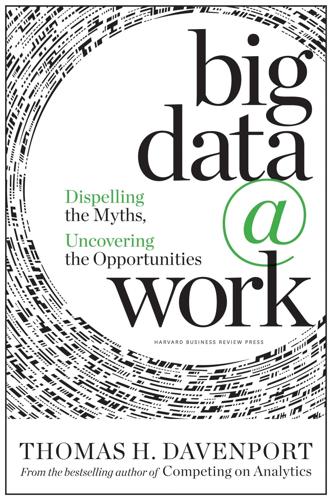
Big Data at Work: Dispelling the Myths, Uncovering the Opportunities
by
Thomas H. Davenport
Published 4 Feb 2014
These included: • Telecom firms, which had lots of data, but for some reason did not take advantage of it (perhaps because they had historically been a regulated monopoly or because they were busy with mergers and acquisitions) Chapter_02.indd 43 03/12/13 11:42 AM 44 big data @ work • Media and entertainment firms, which underachieved because they had decision cultures based on intuition and gut feel, and didn’t know how to assess whether people were looking at their content or not • Retailers had great data from point-of-sale systems, but most have underachieved with it until recently; Tesco and to some degree Walmart have been higher achievers • Traditional banks have massive amounts of data on the money their customers consume and save, but for the most part they have been underachievers in helping those customers make sense of it all and presenting targeted marketing offers to them • Electric utilities have been talking about the “smart grid” for a while, but are still a long way from achieving it; apart from some limited rollouts of smart metering devices and time-of-day pricing, very little thus far has happened in the United States This environment has changed dramatically with the advent of big data. Many of the also-ran industries in the previous generation of analytics can be leaders in the big data race, although in order to do so they need to change their behaviors and attitudes.
…
David Carr, “Giving Viewers What They Want,” New York Times, February 24, 2013, http://www.nytimes.com/2013/02/25/business/media/for-house-of-cardsusing-big-data-to-guarantee-its-popularity.html. 7. GTM Research, The Soft Grid 2013–2020, study sponsored by SAS Institute, 2013, http://www.sas.com/news/analysts/Soft_Grid_2013_2020_Big_Data_Utility_ Analytics_Smart_Grid.pdf. 8. Wes Nichols, “Advertising Analytics 2.0,” Harvard Business Review, March 2013, 60–68. 9. John Brockman interview with Alex (Sandy) Pentland, “Reinventing Society in the Wake of Big Data,” Edge, August 30, 2012, http://www.edge.org/conversation/ reinventing-society-in-the-wake-of-big-data. 10.
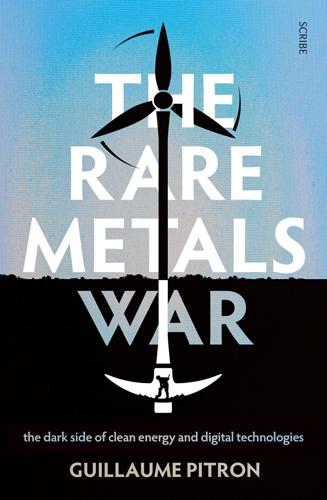
The Rare Metals War
by
Guillaume Pitron
Published 15 Feb 2020
Most surprising is how these metals have become indispensable to new information and communication technologies for their semiconducting properties that regulate the flow of electricity in digital devices. And the once-distinct functions of green and digital technologies are beginning to converge. Indeed, increasingly sophisticated software and algorithms used in ‘smart grids’ make it possible to regulate fluctuations in the flow of electricity between producers and consumers. This is precisely what the 80 million smart meters already installed in the US are doing. In the smart cities of tomorrow, which will combine green and digital technologies, we will save up to 65 per cent of the electricity we use today, thanks to sensor-embedded streets that adjust the lighting to foot traffic, while weather-prediction software makes solar panels 30 per cent more efficient.
…
One data centre alone uses as much energy as a city of 30,000 inhabitants to manage the flow of data and run its cooling systems.23 A US study estimated that the information and communication technology sector consumes as much as 10 per cent of the world’s electricity, and produces 50 per cent more greenhouse gases than air transport annually.24 According to a Greenpeace report, ‘were the cloud a country, it would be the world’s fifth-biggest consumer of electricity’.25 This is just the tip of the iceberg, for the energy and digital transition will require constellations of satellites — already promised by the heavyweights of Silicon Valley — to put the entire planet online.26 It will take rockets to launch these satellites into space; an armada of computers to set them on the right orbit to emit on the correct frequencies and encrypt communications using sophisticated digital tools; legions of super calculators to analyse the deluge of data; and, to direct this data in real time, a planetary mesh of underwater cables, a maze of overhead and underground electricity networks, millions of computer terminals, countless data-storage centres, and billions of tablets, smartphones, and other connected devices with batteries that need to be recharged. Thus, the supposedly virtuous shift towards the age of dematerialisation is nothing more than an outright ruse, for there is no end to its physical impact.27 Feeding this digital leviathan will require coal-fired, oil-fired, and nuclear power plants, windfarms, solar farms, and smart grids — all infrastructures that rely on rare metals. Yet not a word about this is uttered by Jeremy Rifkin. So I reached out to the illustrious thinker to discuss the material reality of this supposed invisibility and the paradox of green energy. Repeatedly, I contacted the Foundation of Economic Trends, through which he offers himself as a speaker and consultant.
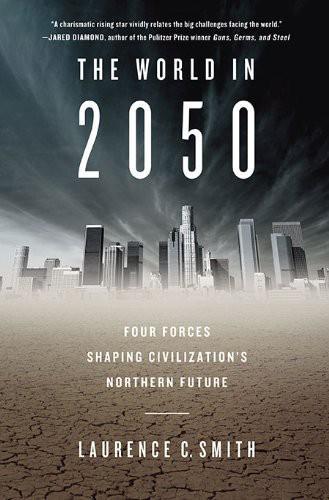
The World in 2050: Four Forces Shaping Civilization's Northern Future
by
Laurence C. Smith
Published 22 Sep 2010
A fifth force twining through the first four is technology. Fast global communications facilitate global financial markets and trade. Modern health care and pharmacology are shifting population age structures in the developing world. Advances in biotech, nanotech, and materials science affect demand for different resource stocks. Smart grids, solar panels, and geoengineering might combat climate change, and so on. Under our “No Silver Bullets” rule, technological advances like these are evaluated as enablers or brake pads on the four global forces, rather than as an independent force of its own. The thought experiment is begun. Its assumptions and ground rules are stated, its four overarching themes defined.
…
Too much capacity wastes money as power plants make unused electricity; too little capacity triggers brownouts or rolling power outages. It’s hard enough to predict fluctuations on the demand side. Solar and wind sources—because they wither or die on calm days, cloudy days, and at night—add new volatility on the supply side. In a world powered substantially from wind and solar sources, avoiding brownouts will require vast “smart grids,” meaning highly interconnected and communicative transmission networks, plenty of backup capacity from conventional power plants,162 and new ways to store excess electricity for times of deficit. Storing excess electricity is challenging. One way is “pumped storage” using water. If excess electricity becomes available, it is used to pump water uphill, from a reservoir or tank, to another one at higher elevation.
…
See specific river names Road of Bones Rodriguez, Ernesto Roosevelt, Franklin Russia and the Russian Federation: and aboriginal peoples; and aging populations; and the Arctic Council; and Arctic islands; and Arctic resources; and Arctic transportation; and climate distribution; and coal resources; and crop yields; and demographic trends; and economic growth models; and endangered species; and the Far East; and fertility rates; and gas and oil reserves; and global warming; and human settlement patterns; and immigration policy; and infrastructure development; and natural gas resources; and the “New North,” and North Pole expeditions; and population declines; and prospects for NORCs; and shifting economic power; and the Siberian Curse; and territorial boundaries; and UNCLOS; and water resources; and West Siberian Lowlands; and winter roads; and xenophobia Sahara Desert Sakha Republic Sakhalin Island Salazar, Ken Salisbury, Joe Sámi people Sanikiluaq, Canada sanitation satellite technology Saudi Arabia Scandinavia Schlesinger, James Schwarzenegger, Arnold Science Scott, Allen Scripps Institute of Oceanography sea ice: and albedo effect; and Antarctica; decline of; and global warming; multiyear ice; and ocean currents; and sea levels; and shipping sea levels: at-risk cities; and climate change; and glaciers; and sea ice; and urbanization Sea of Okhotsk sea surface temperatures (SST) Seager, Richard Serreze, Mark Sheutiapik, Elisapee Shiklomanov, Igor Alexander Shiklomanov, Nikolay shipping Shishmaref, Alaska Sibaral Siberia Siberian Curse Silent Spring (Carson) Simmons, Matt Simon, Julian Singapore Singh, Harnarayan Singh, Parminder slum cities smart grids Smith, Adam snowpack solar power Somalia Sondre Stromfjord, Greenland Sonoran Desert South Africa South America. See also specific countries South Kara Sea South Korea South Ossetia South-to-North Water Diversion project Soviet Union. See also Russia and the Russian Federation Spain Stalin, Joseph State Water Project Stern Report Stirling, Ian storm surges Straits of Hormuz Streletskiy, Dmitry Sub-Saharan Africa Sudan Suez Canal sugarcane ethanol sulfur dioxide super-regions surface water Swaziland Sweden: and aboriginal peoples; and the Arctic Council; and Arctic resources; and Carbon Capture and Storage (CCS); culture of; and demographic trends; and human settlement patterns; and melting permafrost; and natural resource consumption; and the “New North,” and NORC collaborations; and North Pole expeditions; and nuclear power; and territorial boundaries; and UNCLOS; and winter roads synthetic natural gas (SNG) Syria Taiwan Tajikistan technology: arctic sea ice mapping; and ethanol production; as global force; and global warming; and hydrogen fuel cells; and nuclear power; and satellites; and smart power grids; and solar power; and tar sand extraction; and urbanization; and water resources; and wind power terrorism Thailand Thatcher, Margaret thermal expansion of water thermohaline circulation Thompson, Lonnie Three Mile Island Tibet Tibetan Plateau tidal power Tigris-Euphrates River system Tolko Industries trade Trans-Siberian Railroad transboundary rivers transmission of power Treaty of Guadalupe Hidalgo Tromso, Norway tropical storms troposphere Truman, Harry tundra.

Innovation and Its Enemies
by
Calestous Juma
Published 20 Mar 2017
Public debates over new technologies engendering tensions between innovation and incumbency can rage for decades if not centuries. For example, debates over coffee spanned the Old World from Mecca through London to Stockholm and lasted nearly three hundred years. Echoes of the margarine controversy can still be heard in countries such as Canada today. New technologies such as genetic engineering and smart grids have triggered debates over a variety of concerns. Similarly, efforts to address climate change by introducing renewable energy sources such as wind power have generated intense public concern in many parts of the world. Many of these debates over new technologies are framed in the context of risks to moral values, human health, and environmental safety.
…
Technological innovation in this regard stimulated complementary adjustments in the political arena. Echoes of the debate can be heard today in world energy markets, which are experiencing major ecological challenges. The push for renewable energy and conservation has generated debates that mirror some aspects of the tensions over electrification as illustrated by attempts to introduce smart grid systems to promote energy conservation. The tensions revolve around issues such as privacy, security, pricing, and access to energy.69 Much of the debate is about the health impacts of non-ionizing electromagnetic radiation and parallels earlier debates related to cell phone towers. For example, the advocacy group Stop Smart Meters says that because of the installation of smart meters, “bills are skyrocketing, health effects and safety violations are being reported, and privacy in our homes is being violated.”
…
Tom McNichol, AC/DC: The Savage Tale of the First Standards War (San Francisco: Jossey-Boss, 2006). 68. For a discussion of the complexities surrounding such issues, see Shelley McKellar, “Negotiating Risk: The Failed Development of Atomic Hearts in America, 1967–1977,” Technology and Culture 54, no. 1 (2013): 1–39. 69. Timothy Kostyk and Joseph Herkert, “Societal Implications of the Emerging Smart Grid,” Communication of the ACM 55, no. 11 (2012): 34–36. 70. David J. Hesse and Jonathan S. Coley, “Wireless Smart Meters and Public Acceptance: The Environment, Limited Choices, and Precautionary Politics,” Public Understanding of Science 23, no. 6 (2014): 688–702. Chapter 7 1. For a comprehensive review of the technical history of the industry, see Roger Thévenot, A History of Refrigeration throughout the World, trans.
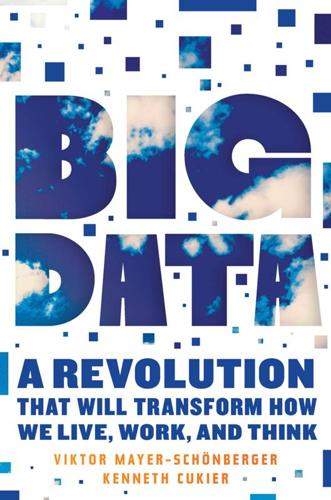
Big Data: A Revolution That Will Transform How We Live, Work, and Think
by
Viktor Mayer-Schonberger
and
Kenneth Cukier
Published 5 Mar 2013
On the amount of data smart meters collect—See Elias Leake Quinn, “Smart Metering and Privacy: Existing Law and Competing Policies; A Report for the Colorado Public Utility Commission,” Spring 2009 (http://www.w4ar.com/Danger_of_Smart_Meters_Colorado_Report.pdf). See also Joel M. Margolis, “When Smart Grids Grow Smart Enough to Solve Crimes,” Neustar, March 18, 2010 (http://energy.gov/sites/prod/files/gc prod/documents/Neustar_Comments_DataExhibitA.pdf) [>] Fred Cate on notice and consent—Fred H. Cate, “The Failure of Fair Information Practice Principles,” in Jane K. Winn, ed., Consumer Protection in the Age of the “Information Economy” (Ashgate, 2006), p. 341 et seq. [>] On the AOL data release—Michael Barbaro and Tom Zeller Jr., “A Face Is Exposed for AOL Searcher No. 4417749,” New York Times, August 9, 2006.
…
“Big Data: The Next Frontier for Innovation, Competition, and Productivity.” McKinsey Global Institute, May 2011 (http://www.mckinsey.com/insights/mgi/research/technology_and_innovation/big_data_the_next_frontier_for_innovation). Marcus, James. Amazonia: Five Years at the Epicenter of the Dot.Com Juggernaut. The New Press, 2004. Margolis, Joel M. “When Smart Grids Grow Smart Enough to Solve Crimes.” Neustar, March 18, 2010 (http://energy.gov/sites/prod/files/gcprod/documents/Neustar_Comments_DataExhibitA.pdf). Maury, Matthew Fontaine. The Physical Geography of the Sea. Harper, 1855. Mayer-Schönberger, Viktor. “Beyond Privacy, Beyond Rights: Towards a ‘Systems’ Theory of Information Governance.” 98 California Law Review 1853 (2010). ———.
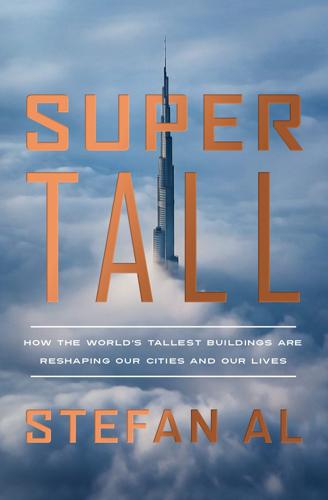
Supertall: How the World's Tallest Buildings Are Reshaping Our Cities and Our Lives
by
Stefan Al
Published 11 Apr 2022
The fundamentals of these grids date back to Thomas Edison’s 1882 Pearl Street Station plant, an electricity-generating coal plant. As a result, buildings today cannot share resources—for instance, the way mycorrhizal fungal bridges share resources among trees. With new technology, including sensors inside of smart meters, the regular one-way grid can become a two-way system. This smart grid can move the excess energy generated from the photovoltaics on your office’s rooftop over to power another building. There may be another lesson to learn from our ecosystem. There is no “waste” in nature, since one species’ waste may be used productively by another species further down the food chain.
…
See also super slenders; supertall skyscrapers changes since the beginning, 267–69 defined by steel-frame construction, 58–59 environmental benefits, 269–70 environmental cost, 269 first appearing in Chicago, 58, 182 Foster’s more sustainable design, 132–33 greening of, 240, 254, 259–63 new paradigm for, 271 stilted, 204, 205 with trees, 250–51, 260, 261 smart buildings, 272 smart glass, 138 smart grid, 263–64 Smeaton, John, 28 Smith, Adrian, 38, 197 Smith, Stephen, 247–48 social interaction, 172–75, 188 class encounters, 229 in dense urban life, 209–10 designing spaces for, 15–16, 268 reduced by commuting, 221 removal of curbs and, 236 in skybridges and sky lobbies, 76 solar cells, 139, 263–64 Solar Hemicycle, 129 solar house movement, 128–30 solar shading devices, 139–40 Soleri, Paolo, 14, 131–32 space elevator, 109 Space Needle, Seattle, 97–98, 98 spalling, 34 Sprague, Frank, 93, 218 stainless steel, 34, 42 steel, 34, 42, 44, 58, 79.

City 2.0: The Habitat of the Future and How to Get There
by
Ted Books
Published 20 Feb 2013
We think we could have “better” cities if we could only tune the machine to make it more “efficient.” The machine model is implicit in the popular language around “smart cities.” The promise is that shiny, smart boxes will figure out how to make our cities tick by smoothing traffic flow, monitoring crime, and allocating power through smart grids. Cities will be run by supersized versions of 2001: A Space Odyssey’s HAL crunching continuous streams of big data. As Donald Fagen of Steely Dan sang, “A just machine to make big decisions / Programmed by fellows with compassion and vision.” We need to think again. In reality, these deterministic paradigms are dwarfed by the scale and complexity of our cities.

The Liberal Moment
by
Nick Clegg
and
Demos (organization : London, England)
Published 12 Nov 2009
Instead of just a few dozen giant power stations, millions of rooftops, street corners, rivers, tides and hilltops would be making a contribution, with technology ranging from wind and wave power to combined heat and power installations in industrial sites and micro-generation in every community. Homes become both receivers and generators of electricity, playing their part in a ‘smart’ grid that moves energy between us all. It is a lot more complicated and cannot be controlled from the centre, but it is also a lot more sustainable. All the technology is available, and if combined with a truly ambitious approach to energy efficiency and conservation, this model is entirely realistic as a way of meeting our future energy needs.

Data and Goliath: The Hidden Battles to Collect Your Data and Control Your World
by
Bruce Schneier
Published 2 Mar 2015
smart smoke and carbon monoxide detector: Heather Kelley (15 Jan 2014), “Google wants to run your home with Nest,” CNN, http://www.cnn.com/2014/01/15/tech/innovation/google-connect-home-nest. the smart power grid: US Department of Energy (2008), “The smart grid: An introduction,” http://energy.gov/sites/prod/files/oeprod/DocumentsandMedia/DOE_SG_Book_Single_Pages(1).pdf. US Department of Energy (2014), “What is the smart grid?” https://www.smartgrid.gov/the_smart_grid. when you’re having sex: Gregory Ferenstein, “How health trackers could reduce sexual infidelity,” Tech Crunch, http://techcrunch.com/2013/07/05/how-health-trackers-could-reduce-sexual-infidelity.
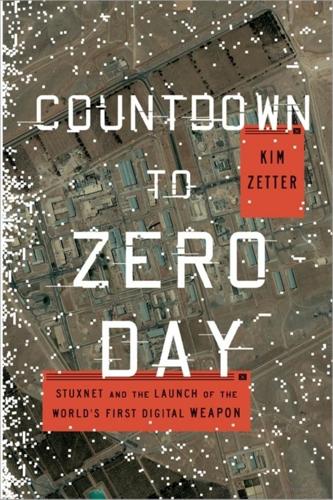
Countdown to Zero Day: Stuxnet and the Launch of the World's First Digital Weapon
by
Kim Zetter
Published 11 Nov 2014
They took control of the system in just a day, and Maiffret said it would have taken just a couple of additional steps to dump chemicals into the water to make it potentially undrinkable.38 Making critical systems remotely accessible from the internet creates obvious security risks. But if Stuxnet proved anything, it’s that an attacker doesn’t need remote access to attack a system—instead, an autonomous worm can be delivered via USB flash drive or via the project files that engineers use to program PLCs. In 2012, Telvent Canada, a maker of control software used in the smart grid, was hacked by intruders linked to the Chinese military, who accessed project files for the SCADA system the company produced—a system installed in oil and gas pipelines in the United States as well as in water systems. Telvent used the project files to manage the systems of customers. Though the company never indicated whether the attackers modified the project files, the breach demonstrated how easily an attacker might target oil and gas pipelines by infecting the project files of a company like Telvent.39 Direct computer network intrusions aren’t the only concern when it comes to critical infrastructure, however.
…
Emergency generators would kick in at some critical facilities, but generators aren’t a viable solution for a prolonged outage, and in the case of nuclear power plants, a switch to generator power triggers an automatic, gradual shutdown of the plant, per regulations. One way to target electricity is to go after the smart meters electric utilities have been installing in US homes and businesses by the thousands, thanks in part to a $3 billion government smart-grid program, which has accelerated the push of smart meters without first ensuring that the technology is secure. One of the main problems security researchers have found with the system is that smart meters have a remote-disconnect feature that allows utility companies to initiate or cut off power to a building without having to send a technician.
…
See Pastebin.com/Wx90LLum. 38 Ken Dilanian, “Virtual War a Real Threat,” Los Angeles Times, March 28, 2011. 39 Kim Zetter, “Chinese Military Linked to Hacks of More Than 100 Companies,” Wired.com, February 19, 2013, available at wired.com/2013/02/chinese-army-linked-to-hacks. For more information on the specifics of the Telvent hack, see also Kim Zetter, “Maker of Smart-Grid Control Software Hacked,” Wired.com, September 26, 2012, available at wired.com/2012/09/scada-vendor-telvent-hacked. 40 “Report of the Commission to Assess the Threat to the United States from Electromagnetic Pulse (EMP) Attack,” April 2008, available at empcommission.org/docs/A2473-EMP_Commission-7MB.pdf.
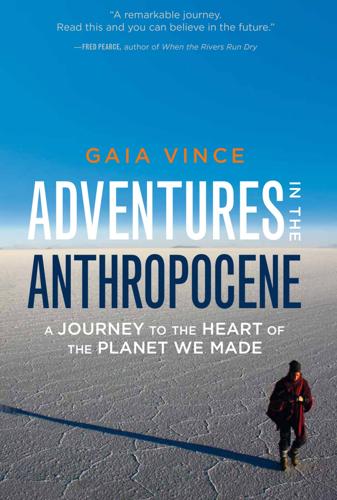
Adventures in the Anthropocene: A Journey to the Heart of the Planet We Made
by
Gaia Vince
Published 19 Oct 2014
Decentralised and renewable energy production, which is often erratic or (in the case of solar or tidal) depends on the time of day, require a smart grid that is far more flexible than the twentieth-century ones used in most cities today. A smart grid relies on sensors and feedback mechanisms to detect customer demand and adjust the load accordingly. For example, at peak demand – 7 a.m. when people switch their kettles on – standby generators or storage devices can be brought online, while some gadgets, such as refrigerators or air-conditioning systems can be automatically dialled down or switched off for a short time. Most countries are looking to adopt smart grids in the coming years, partly because they are far more efficient and so use less energy, but also because they allow for renewable energy integration – monitoring and sensing demand and supply in real time and balancing loads accordingly – and for individual householders to feed their excess electricity back to the grid.
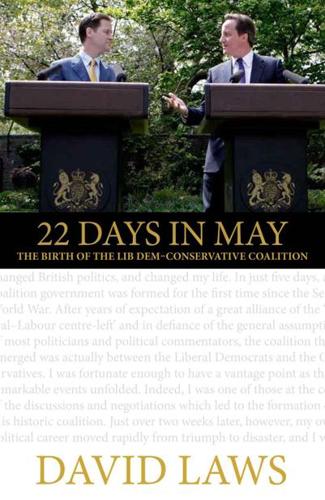
22 Days in May: The birth of the Lib Dem - Conservative coalition
by
Laws, David
Published 22 Nov 2010
The priority is to increase bank lending to small businesses to create and protect jobs and boost the recovery, with discussion between our two parties to identify the most effective way of achieving this; other measures will include a bank levy; an independent commission on structural reform of the banking system reporting within a year; and over the longer term efforts to recover the taxpayer money that has been invested in the banks. • Specific measures to fulfil our joint ambitions for a low carbon and carbon friendly economy, including: the establishment of a smart grid and the roll-out of smart meters; the full establishment of feed-in tariff systems in electricity – as well as maintenance of banded ROCs; measures to promote a huge increase in energy from waste through anaerobic digestion; the creation of a green investment bank; the provision of home energy improvement paid for by the savings from lower energy bills; retention of energy performance certificates while scrapping HIPs; measures to encourage marine energy; the establishment of an emissions performance standard that will prevent coal-fired power stations being built unless they are equipped with sufficient CCS to meet the emissions performance standard; the establishment of a high-speed rail network; the cancellation of the third runway at Heathrow; the refusal of additional runways at Gatwick and Stansted; and the replacement of the Air Passenger Duty with a per flight duty; the provision of a floor price for carbon, as well as efforts to persuade the EU to move towards full auctioning of ETS permits; measures to make the import or possession of illegal timber a criminal offence; measures to promote green spaces and wildlife corridors in order to halt the loss of habitats and restore biodiversity; mandating a national recharging network for electric and plug-in hybrid vehicles; continuation of the present Government’s proposals for public sector investment in CCS technology for four coal-fired power stations; and a specific commitment to reduce central government carbon emissions by 10 per cent within 12 months.
…
• Ending of storage of internet and email records without good reason. • A new mechanism to prevent the proliferation of unnecessary new criminal offences. 11. Environment The parties agree to implement a full programme of measures to fulfil our joint ambitions for a low carbon and eco-friendly economy, including: • The establishment of a smart grid and the roll-out of smart meters. • The full establishment of feed-in tariff systems in electricity – as well as the maintenance of banded ROCs. • Measures to promote a huge increase in energy from waste through anaerobic digestion. • The creation of a green investment bank. • The provision of home energy improvement paid for by the savings from lower energy bills
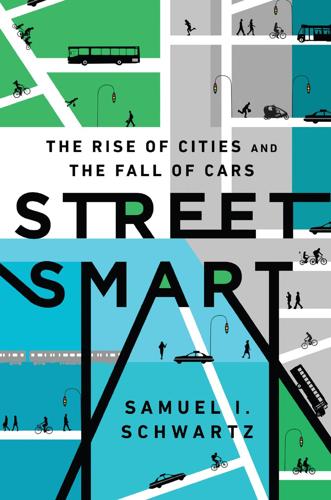
Street Smart: The Rise of Cities and the Fall of Cars
by
Samuel I. Schwartz
Published 17 Aug 2015
The reason was the same for power generation as for transportation: since electric utilities could measure power demand only in limited ways, they had to over-engineer the system. Now, though, what is known as a “smart grid” has the ability to collect huge amounts of data from devices like automatic meters that provide continuous real-time information. With access to so much information that it is measured in exabytes,h and the computer capacity to analyze it instantaneously, the system becomes highly dynamic. Some devices, like air conditioners, now have the ability to adjust their cycles when the grid is working its hardest. Like the old-fashioned grid, a modern smart grid can shunt power to different portions of the network automatically, but it can also manage consumption.

Leading From the Emerging Future: From Ego-System to Eco-System Economies
by
Otto Scharmer
and
Katrin Kaufer
Published 14 Apr 2013
Think about the automated “customer service” systems of major companies that make you provide the same information four times before you’re connected to a real person—that’s how system-centric feels. Mass production and mass consumption penetrate all aspects of society. Finally, the fourth wave of technological innovation is about to give rise to another Industrial Revolution that blends ICT (information communication technologies) with renewable energy, the smart grid, and awareness-based social technologies: a more human-centric turn in production and use. Just as 2.0 machines changed the dominance of 1.0 tools by being powered through energy, and 3.0 automated systems changed the dominance of 2.0 machines through the application of mathematical algorithms, we now see 4.0 technologies beginning to change the dominance of the old system-centric technologies.
…
The real disruptive change has little to do with cloud computing or faster data processing, but is the shift from optimizing abstract systemic functions or “systemic imperatives,” in the words of Habermas, to creating a shared field of human awareness that facilitates a new quality of entrepreneurship that sources action from the emerging whole.45 We refer to this transformative journey as the U process. Jeremy Rifkin refers to the convergence of ICT, biotech, nanotech, renewable energy, and the smart grid as the third Industrial Revolution.46 Just as the earlier waves of technology created an economic sphere that mirrors and amplifies the mechanical (1.0), motoric (2.0), and systemic (3.0) functions of the human being, the focus of our current technological innovations seems to duplicate and amplify the cognitive and communicative functions (4.0).

Frugal Innovation: How to Do Better With Less
by
Jaideep Prabhu Navi Radjou
Published 15 Feb 2015
Many of these disruptive digital ventures are being launched by millennials (popularly known as generation recession), who can raise capital on crowdfunding sites such as Kickstarter, KissKissBankBank and MedStartr. Digital disrupters are not all young bootstrap entrepreneurs. Technology heavyweights including Apple, Google, Cisco and IBM are investing heavily in driverless cars, smart grids, connected homes and consumer medical devices. A massive shakeout in the automotive, construction, energy, health-care and other mature industries seems imminent. When asked who her company’s main competitor would be in five years’ time, a senior executive at a large US industrial firm answered: “Google.”
…
For instance, IBM has a programme called First of a Kind (FOAK) that brings together pioneering clients and IBM’s R&D teams to co-invent breakthrough business solutions with cutting-edge technologies. To date, IBM has completed over 150 FOAK projects, ranging from improving access to health-care data without violating patient privacy to reducing the cost of electricity using smart grids. FOAK is a frugal way for IBM to test the market viability of new technologies with a leading client before commercialising them on a larger scale. As stated earlier, however, customers – especially millennials – want not only to co-create branded products and services, but also to solve larger social problems.

Ten Technologies to Save the Planet: Energy Options for a Low-Carbon Future
by
Chris Goodall
Published 1 Jan 2010
Third, we can introduce systems to manage electricity demand at short notice so that it matches the available supply. Every country in the world that relies on increasing amounts of wind, marine, or solar power will probably need to use all three of these mechanisms to align short-term supply and demand. In the U.S., this three-pronged approach is appropriately called the “smart grid.” The construction and operation of this new kind of grid are fascinating challenges to engineers and also to the mathematicians who will use statistical modeling to minimize the risk of not having enough power or, perhaps even more expensively, having grossly excessive power production for many hours a week.
…
Just before this happens, a large power station needs to be warmed up so that it is ready to start producing electricity the moment demand begins to surge. Supply simply aims to match moment-to-moment demand. This model is both costly and carbon intensive, because power stations have to be held in reserve, burning large amounts of fuel even when they are not supplying power to the grid. The smart grid is more efficient—and it’s also compatible with the incorporation of large amounts of power from wind and other unreliable energy sources. Let’s look in a little more detail at its three main approaches. Importing remote power If the wind suddenly drops on the Atlantic coast of Spain, it is statistically extremely improbable that Denmark will suffer at the same time.

Ethics of Big Data: Balancing Risk and Innovation
by
Kord Davis
and
Doug Patterson
Published 30 Dec 2011
By 2025, the forecast is that the Internet will exceed the brain capacity of everyone living on the entire planet. Additionally, the variety of sources and data types being generated expands as fast as new technology can be created. Performance metrics from in-car monitors, manufacturing floor yield measurements, all manner of healthcare devices, and the growing number of Smart Grid energy appliances all generate data. More importantly, they generate data at a rapid pace. The velocity of data generation, acquisition, processing, and output increases exponentially as the number of sources and increasingly wider variety of formats grows over time. It is widely reported that some 90% of the world’s data has been created in the last two years (http://www.economist.com/node/21537967).
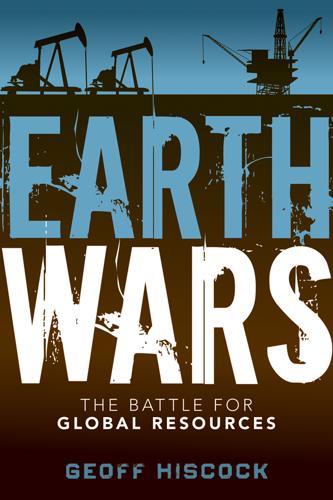
Earth Wars: The Battle for Global Resources
by
Geoff Hiscock
Published 23 Apr 2012
It is about smoothing the push of supply, so that eventually we get to the era of the virtual power station.” But he acknowledges that the electricity distribution grid is not yet up to speed. “A smart grid is the key to the energy market,” he says.4 GWEC Secretary General Steve Sawyer concurs, while pointing out that Spain is now 60 percent renewable and Denmark is close to 100 percent. “Connectivity and the smart grid is always the key. It is not so much about baseload as supply-demand management.”5 As well, the goal of cost parity—where generating power from renewable sources costs the same as fossil fuels such as coal and gas—is getting closer in Europe.

Bold: How to Go Big, Create Wealth and Impact the World
by
Peter H. Diamandis
and
Steven Kotler
Published 3 Feb 2015
Turning our attention to automation—which is essentially the process of gathering all the data collected by the IoT, turning it into a series of next actions, and then, without human intervention, executing those actions. Already, we’ve seen the first wave of this in the smart assembly lines and supply chains (what’s technically called process optimization) that have enabled things like just-in-time delivery. With the smart grid for energy and the smart grid for water—what’s technically called resource consumption optimization—we’re seeing the second wave. Next up is the automation and control of far more complex autonomous systems—such as self-driving cars. There are even further opportunities in finding simpler ways to connect decision makers to sensor data in real time.

Enlightenment Now: The Case for Reason, Science, Humanism, and Progress
by
Steven Pinker
Published 13 Feb 2018
Whoever does it, and whichever fuel they use, the success of deep decarbonization will hinge on technological progress. Why assume that the know-how of 2018 is the best the world can do? Decarbonization will need breakthroughs not just in nuclear power but on other technological frontiers: batteries to store the intermittent energy from renewables; Internet-like smart grids that distribute electricity from scattered sources to scattered users at scattered times; technologies that electrify and decarbonize industrial processes such as the production of cement, fertilizer, and steel; liquid biofuels for heavy trucks and planes that need dense, portable energy; and methods of capturing and storing CO2
…
Solar panels made with carbon nanotubes can be a hundred times as efficient as current photovoltaics, continuing Moore’s Law for solar energy. Their energy can be stored in liquid metal batteries: in theory, a battery the size of a shipping container could power a neighborhood; one the size of a Walmart could power a small city. A smart grid could collect the energy where and when it’s generated and distribute it where and when it’s needed. Technology could even breathe new life into fossil fuels: a new design for a zero-emissions gas-fired plant uses the exhaust to drive a turbine directly, rather than wastefully boiling water, and then sequesters the CO2 underground.18 Digital manufacturing, combining nanotechnology, 3-D printing, and rapid prototyping, can produce composites that are stronger and cheaper than steel and concrete and that can be printed on site for construction of houses and factories in the developing world.
…
Technology could even breathe new life into fossil fuels: a new design for a zero-emissions gas-fired plant uses the exhaust to drive a turbine directly, rather than wastefully boiling water, and then sequesters the CO2 underground.18 Digital manufacturing, combining nanotechnology, 3-D printing, and rapid prototyping, can produce composites that are stronger and cheaper than steel and concrete and that can be printed on site for construction of houses and factories in the developing world. Nanofiltration can purify water of pathogens, metals, even salt. High-tech outhouses require no hookups and turn human waste into fertilizer, drinking water, and energy. Precision irrigation and smart grids for water, using cheap sensors and AI in chips, could reduce water usage by a third to a half. Rice that is genetically modified to replace its inefficient C3 photosynthesis pathway with the C4 pathway of corn and sugarcane has a 50 percent greater yield, uses half the water and far less fertilizer, and tolerates warmer temperatures.19 Genetically modified algae can pull carbon out of the air and secrete biofuels.
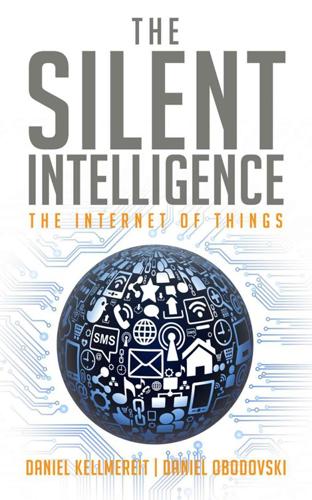
The Silent Intelligence: The Internet of Things
by
Daniel Kellmereit
and
Daniel Obodovski
Published 19 Sep 2013
Says Glen Allmendinger: Once people started to understand how much value was locked up in just understanding asset information, they realized how much money could be made. Awareness is kind of a consumer thing — the smartphone and the physical B2B [business-to-business] space, big asset management. I think those two worlds finally met and everybody kind of said, “Oh, I can do a lot with this.” The more it seeps into stories like smart grids or health care, the more the subject becomes grounded in the context where people can imagine that there really are tangible advantages to trying to figure out what to do with all that data. Once the smartphone came into existence, all these sort of asset device stories that were roaming around got nearer to the consumer or user value, and all of a sudden, any person on the street could see that there are lots of things to be derived from location-based service: asset information, things in real time, essentially, and things that are state-based.
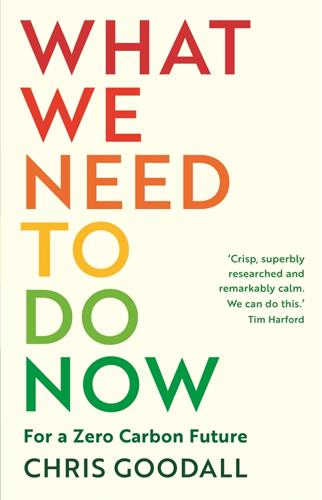
What We Need to Do Now: A Green Deal to Ensure a Habitable Earth
by
Chris Goodall
Published 30 Jan 2020
What the local Orkney groups are doing is trying to use their own energy resources, rather than buying from the mainland. Among the many beneficial consequences, the cost of living on the islands will fall. More money will be retained in the local community. The economy will be able to diversify away from pastoral agriculture. Skilled jobs in such occupations as wind turbine maintenance and running the local ‘smart’ grid will multiply. Before starting work at the local council, Adele Lidderdale specialised in sustainable development for rural areas and she tells me the work on Orkney is an extraordinary chance to show that the transition to a 100 per cent clean energy system can benefit groups at the periphery, geographic and financial, of today’s economy.

Power Hungry: The Myths of "Green" Energy and the Real Fuels of the Future
by
Robert Bryce
Published 26 Apr 2011
The project is expected to reduce the eight-decade-old skyscraper’s energy use by nearly 40 percent and cut energy costs by about $4.4 million per year.22 Energy efficiency is the one energy policy issue upon which both Republicans and Democrats can agree. That bipartisan support is providing momentum to upgrades of the U.S. electric grid. Although there’s been a lot of hype around the phrase “smart grid,” there are significant gains to be had by providing consumers with more information about their usage and by giving utilities better information about the amount of voltage they are pumping into their wires. For instance, if a utility has reliable data showing that it is providing enough voltage to its most-distant customers on a given section of the grid, it can reduce the voltage on its generators and thereby reap energy savings of as much as 4 percent.23 In July 2009, the consulting firm McKinsey & Company released a report that predicted that if the United States adopted aggressive efficiency policies it could reduce primary energy consumption by about 20 percent when compared to a “business as usual” scenario.24 The consulting firm determined that there are big gains to be had from efficiency upgrades in the residential, commercial, and industrial sectors.
…
(approximately August 3, 2008), http://www.barackobama.com/pdf/factsheet_energy_speech_080308.pdf. 18 PBS, “In Iowa, Questions Arise on Impact of Ethanol Production,” January 28, 2009, http://www.pbs.org/newshour/bb/environment/jan-june09/mixedyield_01-28.html. 19 Steven Chu, “Pulling the Plug on Oil,” Newsweek, April 4, 2009, http://www.newsweek.com/id/192481. 20 See transcripts of two Obama speeches from October 23 and October 27, 2009, http://www.whitehouse.gov/the-press-office/remarks-president-challenging-americans-lead-global-economy-clean-energy and http://www.whitehouse.gov/the-press-office/remarks-president-recovery-act-funding-smart-grid-technology. 21 Jan F. Kreider and Peter S. Curtiss, Kreider and Associates, “Comprehensive Life Cycle Analysis of Future, Liquid Fuels for Light Vehicles,” September 2008, http://www.fuelsandenergy.com/presentations/Kreider_LCA.pdf, 36. 22 Jesse Ausubel, in his article in “The Future Environment for the Energy Business,” APPEA Journal (2007), http://phe.rockefeller.edu/docs/ausubelappea.pdf, 8, uses 0.4 W/m2.

Super Continent: The Logic of Eurasian Integration
by
Kent E. Calder
Published 28 Apr 2019
Eurasian needs in this realm are massive—recent ADB estimates suggest US$26 trillion in new infrastructure is required over the 2016 –2030 period.26 Despite massive infrastructural spending across the continent already since the crisis of 2008 –2009, particularly in China, the process of building the requisite superhighways, high-speed rail lines, electric power grids, electric power generators, dams, ports, airports, and communications systems across Eurasia has just begun. Electric power transmission systems are growing capable of conveying greater and greater volumes of power over longer and longer distances, due to technical improvements in grid management as well as the progress of superconductivity.27 Increasingly sophisticated electric power grids (smart grids) are becoming ever more capable of managing energy usage at the grassroots level, including inside the home, drawing on technical and financial support from both ends of the Eurasian continent. In electric power, telecommunications, and other areas, there is a new digital dimension that greatly intensifies potential for efficient interaction across long distances.
…
See also China Perestroika (restructuring), 55 Perincek, Doğu: and Turkish Eurasianism, 41 Permanent Court of Arbitration (PCA), 128, 158 Persian Gulf: exports from, 81, 82, 98; growth of, 2 –3; oil reserves, 78, 80t, 81, 98; sea lanes between Strait of Malacca and, 246 Peter the Great, 32 Pharmaceuticals, 4, 130 Philippines, 12, 118, 128, 129, 186, 189 Piketty, Thomas, 190 –191 Pipelines, 79m, 144m; Central Asia-China (West-East Pipeline), 34, 57, 58 –59, 78 – 81, 83 – 84; Central-Asia-India (Turkmenistan–Afghanistan–Pakistan–India, 321 TAPI), 61, 94; Central Asia-Turkey, 59; China-Myanmar, 135; China-Pakistan, 193; geopolitics of, 43, 143, 197, 213; proposals, 39, 83, 93, 258n15; Russia-China (Power of Siberia), 34, 83, 84, 144 –145, 153; Russia-Europe (Nord Stream I, Nord Stream II), 83, 265n29; Russia-Turkey (Blue Stream, TurkStream), 41; the United States, 241 Piraeus, 44, 88, 112, 177, 202, 217, 229, 245 “Pivot to Asia” (US policy), 46, 151, 152 Poland, 68, 83, 92, 113, 165, 172, 201, 215 Policy decisions, functional categories of, 18 –19 Polo, Marco, 24, 26, 47, 161 Populism, 205; and international relations, 200 –202 Port Arthur, 31, 142 Postal savings: and Chinese capital mobilization, 105 Pound sterling, 220, 302n39 Power grids: geopolitical implications of, 21, 43, 213, 216, 229; infrastructure projects, 93–94, 258n15; “Northeast Asian Super Grid,” 38, 84, 197; “smart grids,” 216 Power of Siberia project, 34, 83, 143, 153, 269n37 Prairie Road Program, 258n15 Pribumi, 124, 125 Production chains. See supply chains Production networks. See supply chains Prospects and policy implications, 232 –252 Public-private partnerships (PPPs), 250 Putin, Vladimir: foreign policy toward Asia, 33 –35; relationship with Xi, 84, 151–154; Ukraine crisis, 66 – 68 Qatar, 78, 82, 192 Qing China, 31, 141 Qinzhou Industrial Park, 130 Qualcomm, 113 Qualified majority voting (QMV), 242 Quesnay, Francois, 162 Rajapaksa, Mahinda, 193 Rajaratnam, S., 137 Razak, Najib, 132 Reagan, Ronald, 151 Redistributive policies, 18 Refugees, 191, 201 322 Index Regional Anti-Terrorist Structure, 238 Regional development banks, 207 Regionalist integrators, roles of, 16 –17 Regulatory policies, 18, 226 Renewable energy, 84 Renminbi (RMB), role of, 221–222 Ren Xiao, 225 Resources: insecurities, 223; quest for, 197–198 Ricci, Matteo, 161–162 Richtofen, Ferdinand von: and Silk Road, 24 Roh Moo-hyun, 37 Roh Tae-woo, 33, 35 –36, 37 Roman Empire, 26, 47 Roosevelt, Franklin D., 18 Roosevelt, Theodore, xvi, 251 Rosneft, 147, 283n15 Rousseau, 163, 164 Russia: and the Arctic, 93, 145 –147; arms export, 154 –147; and Central Asia, 57–58; and China, 68, 84, 106, 140 –159, 223, 227; collapse of the Soviet Union, 54 – 61; continentalism, 32 –35; demography, 150, 189 –190; energy, 77–78, 82 – 84, 143 –145, 150, 198; and Europe, 82, 165 –166, 167– 168, 171–172; maritime access, 75m; as a transit state, 42, 89 –91; and the Ukraine crisis, 65 – 68; and the United States, 244.
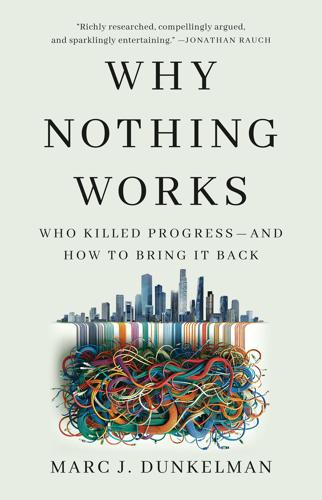
Why Nothing Works: Who Killed Progress--And How to Bring It Back
by
Marc J Dunkelman
Published 17 Feb 2025
Sure, Chicago would get power and the Dakotas would get jobs—but what would the in-between states get for hosting the wires? Moreover, Browner argued, the line would take years to build, offering few benefits until after all the requisite environmental studies and siting issues were resolved. The stimulus was supposed to get money out into the economy in the short term. Building a smart grid was all well and good, but it would take time. Her points were well-taken, and by the time the meeting had adjourned, Obama had abandoned the idea. On to more promising proposals.89 It was at roughly this same time that an energy industry entrepreneur named Michael Skelly alighted on a similar idea elsewhere in the country.
…
Cognizant of this broader challenge, reformers through the Obama years made sustained, but limited, progress speeding the construction of transmission lines. The backstop siting authority created in 2005 may have been undermined by results of subsequent litigation, but the White House pressed on several fronts, including $4.5 billion for smart grid development as a part of the Recovery Act, and creating an Interagency Rapid Response Team for Transmission to help coordinate efforts and quickly respond to challenges between federal agencies.106 FERC adopted a general framework, Order 1000, that encouraged utilities to share the costs of transmission lines.107 In 2015, as part of a highway reauthorization, Democrats created a Federal Permitting Improvement Council to help site transmission lines across federally owned property.108 But the underlying frictions remain because so many players who, in theory, want to help on climate are conflicted not only because of disagreements within the federal government, but also by power wielded outside it.
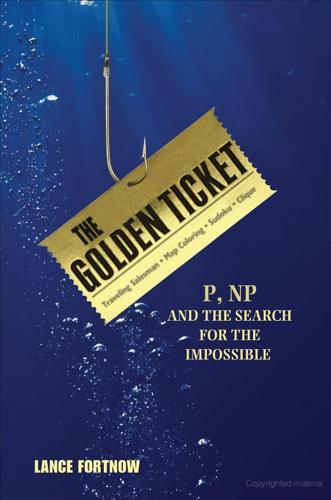
The Golden Ticket: P, NP, and the Search for the Impossible
by
Lance Fortnow
Published 30 Mar 2013
Usually having more data trumps finding a better algorithm. Google does a reasonable job with spam detection, voice recognition, and language translation because it has large numbers of examples to work with. In the near future, we will have data that should help us better analyze individual health, create smart grids that use electricity more efficiently, drive cars autonomously, and lead to new understandings of the basic nature of our universe. How we understand data to enrich our lives is a great challenge for computer scientists. The Networking of Everything Roughly two billion people are connected through the Internet in some way, via email or social networks.

The Driver in the Driverless Car: How Our Technology Choices Will Create the Future
by
Vivek Wadhwa
and
Alex Salkever
Published 2 Apr 2017
The Nest also ties into utility programs that ask users to cut back on power usage at times when energy consumption is at a peak, to relieve pressure on the electrical grid. Nest users who live where such programs are in place can save 5 percent or more on power bills by participating. That’s an early but effective instance of the smart grid, a sub-sector of the Internet of Things focusing on energy and our giant, antiquated, and inefficient power-generation and transmission system. You can install the Nest application on your phone and control your home environment remotely. So, say, if you want to start cooling down your house fifteen minutes before you arrive home, you can send a message to the Nest.
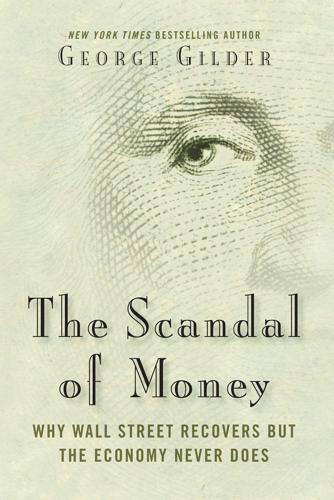
The Scandal of Money
by
George Gilder
Published 23 Feb 2016
With transactional overhead dominated by offline financial infrastructure, micropayments are uneconomic, and the Internet fills with mendacious free goods, bogus contracts, and pop-up hustles. Some 36 percent of web pages are spurious, emitted by bots to snare information from unwary surfers.3 At the same time, Silicon Valley moves toward an “internet of things,” sensors and devices—from heart monitors and “smart grid” gauges to automated cars and heating systems—linked across the net and needing secure automated transactions without offline intermediaries. Reform of world money is less a far-fetched dream than a rising imperative. Gold and digital currencies converge to provide a new solution to the enigma of money.

Blockchain: Blueprint for a New Economy
by
Melanie Swan
Published 22 Jan 2014
Automatic Markets and Tradenets An automatic market is the idea that unitized, packetized, quantized resources (initially like electricity, gas, bandwidth, and in the deeply speculative future, units of synaptic potentiation in brains) are automatically transacted based on dynamically evolving conditions and preprogrammed user profiles, permissions, and bidding functions.73 Algorithmic stock market trading and real-time bidding (RTB) advertising networks are the closest existing examples of automatic markets. In the future, automatic markets could be applied in the sense of having limit orders and program trading for physical-world resource allocation. Truly smart grids (e.g., energy, highway, and traffic grids) could have automatic bidding functions on both the cost and revenue side of their operations—for both inputs (resources) and outputs (customers) and participation in automatic clearing mechanisms. A related concept is tradenets: in the future there could be self-operating, self-owned assets like a self-driving, self-owning car.74 Self-directing assets would employ themselves for trade based on being continuously connected to information from the Internet to be able to assess dynamic demand for themselves, contract with potential customers like Uber does now, hedge against oil price increases with their own predictive resource planning, and ultimately self-retire at the end of their useful life—in short, executing all aspects of autonomous self-operation.
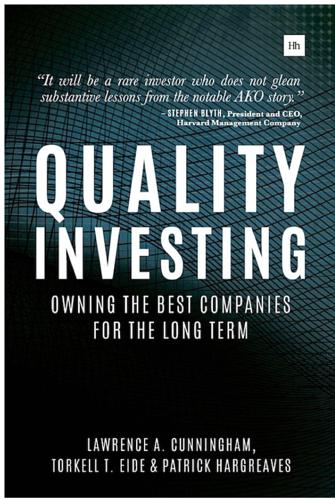
Quality Investing: Owning the Best Companies for the Long Term
by
Torkell T. Eide
,
Lawrence A. Cunningham
and
Patrick Hargreaves
Published 5 Jan 2016
Such companies may well be accessible to the student of industry or finance and even manifest features associated with quality companies, but their sheer scale and inherent opacity can lead even experts to perceive predictability that is partial at best. For example, Siemens operates through 19 divisions ranging from smart grid, to medical diagnostics and industry automation. While it is tempting to evaluate whether Siemens is a quality company, its enormity and intricacy presents considerable risks of mistake. Insisting on a firm basis of knowledge about a company and its industry, and being alert to the risks of straying into unfamiliar territory, is important.
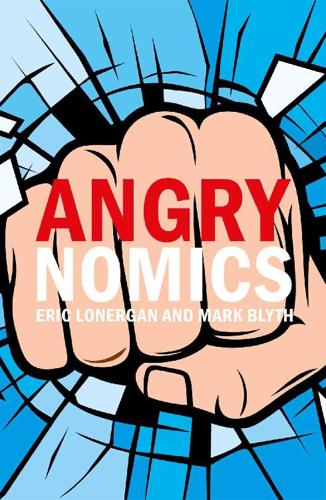
Angrynomics
by
Eric Lonergan
and
Mark Blyth
Published 15 Jun 2020
Third, while AI and ML are real and are different, as seen in the success of products such as Amazon’s Alexa and Google’s AlphaGo engine, it’s not clear that their deployment at scale, which is still a long way off, is zero-sum against either workers or wages. Take AI and power grid optimization. An intelligent programme monitoring and optimizing flow across a carbon-smart grid could save huge amounts of energy, reduce costs for all firms and households, and help with climate change. At least some of those savings would show up in cheaper products and demand for new goods and services, not all of which can be done by robots. What we should really care about then are the returns to robot-makers.

The Mesh: Why the Future of Business Is Sharing
by
Lisa Gansky
Published 14 Oct 2010
Pragmatic and visionary businesspeople and governments understand this, and are reorienting themselves accordingly. The companies, cities, and countries that get there first will define business success in the early twenty-first century. That’s why the so-called clean tech and renewable energy sectors are hot on several continents. Or why policy experts are debating the best way to develop a “smart grid” that will transform the way energy is generated and shared. Finally, world population growth has sped up the trend toward greater urban density, which favors Mesh businesses. A car- or bike- or tool-sharing business can offer a greater depth and variety of products and services in neighborhoods where there are more people nearby to take advantage of them.

Age of Context: Mobile, Sensors, Data and the Future of Privacy
by
Robert Scoble
and
Shel Israel
Published 4 Sep 2013
Philips is developing disposable sensors that can detect spoilage in your refrigerator, or when it’s time to clean carpets, towels or clothing. GE’s Grid IQ is an “insight tool” that mines social media for geo-tagged mentions of electrical outages, allowing utility companies to respond faster. Data is fed to hot maps where patterns alert crews and first responders to power outages, floods, tornadoes or fires. Could such smart grids prevent such tragedies as the one caused by the massive forest fire that took the lives of 19 Arizona firefighters in June 2013? Perhaps not quite yet. But they are coming closer all the time. Robotic Household Assistants Another category of personal assistants for the home steps out of the pages of science fiction and perhaps meanders over the freaky line.

The Non-Tinfoil Guide to EMFs
by
Nicolas Pineault
Published 6 Dec 2017
The short version: Everything That’s Wrong With Smart Meters Privacy Civil rights Cybersecurity 483 484 Smart meters gather information from all your smart appliances, and transmits this information — how frequently you open the fridge, what’s plugged into your walls outlets, etc. — to the utility company. Then, utility companies are allowed to sell your information to 3rd parties and make a ton of money with it. When your home is connected to a smart meter, the utility company can shut down your power usage for any reason, at any time. Creating a “smart grid” where every household’s electricity use is monitored online means that it can be hacked into. A lot of people way smarter than me when it comes to cybersecurity — including a former CIA director484 — have said this is a really, really bad idea. I highly suggest renting it for $4 on the official website: takebackyourpower.net/ youtube.com © 2017 N&G Media Inc. 180 Everything That’s Wrong With Smart Meters Environment Smart meters need to be replaced every 5 to 7 years, compared to every 20 to 30 years for analog meters485 — and you’re the one paying the bill.
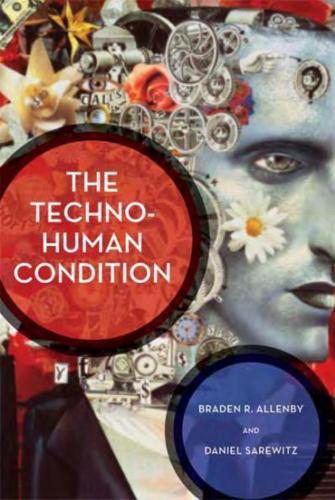
The Techno-Human Condition
by
Braden R. Allenby
and
Daniel R. Sarewitz
Published 15 Feb 2011
We watched a major scientific conference being held in a virtual-reality environment; the physicist running it was a pulsing purple fuzzball, but otherwise it looked as boring as usual. A buzzing exhibit that took up a whole room, an impressive model of the electric grid of North America, explained how smart grid technology was enabling smooth integration of many different sources of power, and adaptation to demand spikes caused by substitution of electricity for dispersed uses of fossil fuel. We were feeling a lot better, with the gentle refrain of "As ye muddle, so shall ye reap" caressing our ears as we headed for the exit.

Aerotropolis
by
John D. Kasarda
and
Greg Lindsay
Published 2 Jan 2009
A few additions have been announced since, none of which were ideal: warehouses, a hotel, a cancer radiation lab (since shelved), and an organic produce nursery. That’s all well and good for the tax rolls, but if Detroit is going to win this war of all against all that’s raging, it again begs the question: What is the aerotropolis for? The answer, given by everyone from Ficano on down, is anything and everything: batteries, biofuels, windmills, and smart grid-building software consultancies. Two years ago, Ficano announced Wayne County would build a Stem Cell Commercialization Center—adding genetic engineering to the list. When we met, practically the first word off his lips was The Graduate’s punch line, plastics—but in this case a biodegradable kind derived from wheat.
…
The center would be one of only five worldwide, joining a network of skunk works in Bangalore, Shanghai, Munich, and Schenectady, New York (where the lightbulb had been perfected). GE promised to hire more than a thousand engineers at six-figure salaries. The lucky ones would tinker with the next generation of wind turbines, smart grids, CAT scanners, and jet engines, applying their know-how in composites, casting, and machining. It was knowledge work in its most tangible form: they wouldn’t build jet engines there; they would discover how to build better, cleaner ones. It was a startling validation of Ficano’s vision and a down payment on the jobs and wages he’d promised to create.
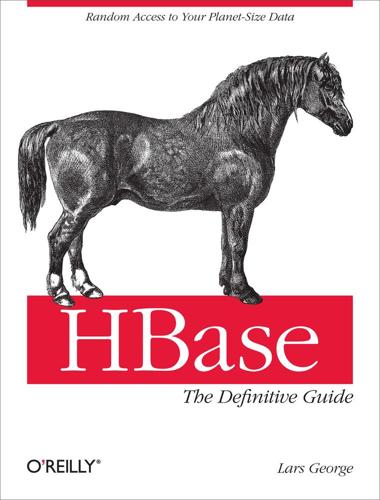
HBase: The Definitive Guide
by
Lars George
Published 29 Aug 2011
Even before the transition to HBase, the existing system had to handle more than 25 TB a month.[12] In addition, less web-oriented companies from across all major industries are collecting an ever-increasing amount of data. For example: Financial Such as data generated by stock tickers Bioinformatics Such as the Global Biodiversity Information Facility (http://www.gbif.org/) Smart grid Such as the OpenPDC (http://openpdc.codeplex.com/) project Sales Such as the data generated by point-of-sale (POS) or stock/inventory systems Genomics Such as the Crossbow (http://bowtie-bio.sourceforge.net/crossbow/index.shtml) project Cellular services, military, environmental Which all collect a tremendous amount of data as well Storing petabytes of data efficiently so that updates and retrieval are still performed well is no easy feat.
…
ServerName class, Cluster Status Information servers, Servers, Servers, Servers, Cluster Status Information, Cluster Status Information, Cluster Status Information, Adding Servers, Adding a region server (see also master server; region servers) adding, Adding Servers, Adding a region server requirements for, Servers, Servers status information for, Cluster Status Information status of, Cluster Status Information, Cluster Status Information setAutoFlush() method, HTable class, Client-side write buffer, Client API: Best Practices setBatch() method, Scan class, Caching Versus Batching setBlockCacheEnabled() method, HColumnDescriptor class, Column Families setBlockSize() method, HColumnDescriptor class, Column Families setBloomFilterType() method, HColumnDescriptor class, Column Families setCacheBlocks() method, Get class, Single Gets setCacheBlocks() method, Scan class, Introduction, Client API: Best Practices setCaching() method, Scan class, Caching Versus Batching, Client API: Best Practices setCompactionCompressionType() method, HColumnDescriptor class, Column Families setCompressionType() method, HColumnDescriptor class, Column Families setDeferredLogFlush() method, HTableDescriptor class, Table Properties setFamilyMap() method, Scan class, Introduction setFilter() method, Get class, Single Gets setFilter() method, Get or Scan class, The filter hierarchy setFilter() method, Scan class, Client API: Best Practices setInMemory() method, HColumnDescriptor class, Column Families setMaxFileSize() method, HTableDescriptor class, Table Properties setMaxVersions() method, Get class, Single Gets setMaxVersions() method, HColumnDescriptor class, Column Families setMaxVersions() method, Scan class, Introduction setMemStoreFlushSize() method, HTableDescriptor class, Table Properties setReadOnly() method, HTableDescriptor class, Table Properties setRegionCachePrefetch() method, HTable class, The HTable Utility Methods setScannerCaching() method, HTable class, Caching Versus Batching setScope() method, HColumnDescriptor class, Column Families setters, Table Properties setTimeRange() method, Get class, Single Gets setTimeRange() method, Increment class, Multiple Counters setTimeRange() method, Scan class, Introduction setTimeStamp() method, Delete class, Single Deletes setTimeStamp() method, Get class, Single Gets setTimeStamp() method, Scan class, Introduction setValue() method, HTableDescriptor class, Loading from the table descriptor, Table Properties setWriteToWAL() method, Increment class, Multiple Counters setWriteToWAL() method, Put class, Single Puts sharding, The Problem with Relational Database Systems, Scalability, Auto-Sharding, Auto-Sharding Shell, HBase, Shell (see HBase Shell) shouldBypass() method, ObserverContext class, The ObserverContext class shouldComplete() method, ObserverContext class, The ObserverContext class shutdown() method, HBaseAdmin class, Cluster Operations Simple Object Access Protocol, Introduction to REST, Thrift, and Avro (see SOAP) Simple Storage Service, S3 (see S3) SingleColumnValueExcludeFilter class, Filters Summary SingleColumnValueFilter class, SingleColumnValueFilter, SingleColumnValueFilter, SingleColumnValueExcludeFilter, Filters Summary size() method, Put class, Single Puts size() method, Result class, The Result class SkipFilter class, SkipFilter, SkipFilter, Filters Summary slave servers, The Problem with Relational Database Systems, Servers, Servers (see also region servers) smart grid, data requirements of, The Dawn of Big Data Snappy algorithm, Available Codecs, Snappy SOAP (Simple Object Access Protocol), Introduction to REST, Thrift, and Avro, Introduction to REST, Thrift, and Avro Socorro, Mozilla, Time Series Data software requirements, Software, Windows, Building from Source Solaris, Operating system Solr, Search Integration sort and merge operations, compared to seek operations, Log-Structured Merge-Trees speculative execution mode, MapReduce, Table Splits split command, HBase Shell, Tools, Managed Splitting split() method, HBaseAdmin class, Cluster Operations, Managed Splitting split/compaction storms, Managed Splitting SplitAlgorithm interface, Presplitting Regions splitlog directory, Root-level files, Region-level files, Log splitting splits directory, Region-level files, Region splits src directory, Apache Binary Release SSH, requirements for, SSH standalone mode, Quick-Start Guide, Run Modes, Standalone Mode for HBase, Quick-Start Guide start key, for partial key scans, Partial Key Scans start() method, Coprocessor interface, The Coprocessor Class start_replication command, HBase Shell, Replication static provisioning, for MapReduce, Static Provisioning, Static Provisioning status command, HBase Shell, Quick-Start Guide, General stop key, for partial key scans, Partial Key Scans stop() method, Coprocessor interface, The Coprocessor Class stopMaster() method, HBaseAdmin class, Cluster Operations stopRegionServer() method, HBaseAdmin class, Cluster Operations stop_replication command, HBase Shell, Replication storage API, Storage API (see client API) storage architecture, Log-Structured Merge-Trees, Log-Structured Merge-Trees, Log-Structured Merge-Trees, Log-Structured Merge-Trees, Log-Structured Merge-Trees, Storage, KeyValue Format, Overview, Write Path, Write Path, Files, Compactions, HFile Format, HFile Format, KeyValue Format, KeyValue Format, Write-Ahead Log, Durability, Read Path, Read Path, Concepts, Concepts, Tall-Narrow Versus Flat-Wide Tables accessing data, Log-Structured Merge-Trees, Overview column families, Concepts, Concepts deleting data, Log-Structured Merge-Trees files in, Files, Compactions HFile format, HFile Format, HFile Format KeyValue format, KeyValue Format, KeyValue Format LSM-trees for, Log-Structured Merge-Trees, Log-Structured Merge-Trees read path, Read Path, Read Path tables, Tall-Narrow Versus Flat-Wide Tables WAL (write-ahead log), Write-Ahead Log, Durability writing data, Log-Structured Merge-Trees writing path, Write Path, Write Path storage models, Dimensions store files (HFiles), Tables, Rows, Columns, and Cells, Implementation, Implementation, Cluster Status Information, Cluster Status Information, Log-Structured Merge-Trees, Overview, Region Server Metrics, Enabling Compression, Enabling Compression, HBase Configuration Properties, HBase Configuration Properties (see also storage architecture) compaction of, Enabling Compression (see compaction) compression of, Enabling Compression (see compression) creation of, Overview in LSM-trees, Log-Structured Merge-Trees metrics for, Region Server Metrics properties for, HBase Configuration Properties, HBase Configuration Properties status information about, Cluster Status Information, Cluster Status Information stored procedures, The Problem with Relational Database Systems StoreScanner class, Read Path strict consistency, Nonrelational Database Systems, Not-Only SQL or NoSQL?
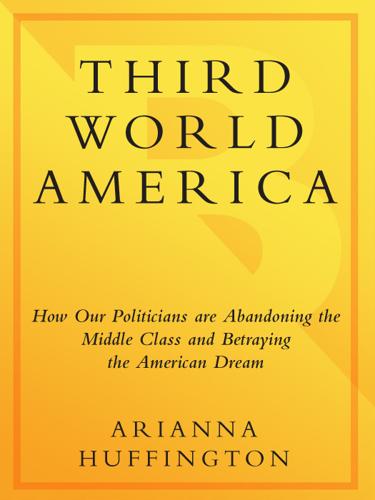
Third World America: How Our Politicians Are Abandoning the Middle Class and Betraying the American Dream
by
Arianna Huffington
Published 7 Sep 2010
Donohue, “Rebuilding America—the Time Is Now,” U.S. Chamber of Commerce, 10 Aug. 2007, www.uschamber.com. 38 Since we need all the power: American Society of Civil Engineers, “America’s Infrastructure Report Card Fact Sheet: Energy,” 2009, www.infrastructurereportcard.org. 39 These ongoing brownouts and blackouts: U.S. Department of Energy, “Smart Grid System Report,” Jul. 2009, www.energy.gov. 40 The ASCE estimates that it could take: American Society of Civil Engineers, “America’s Infrastructure Report Card Fact Sheet: Energy,” 2009, www.infrastructurereportcard.org. 41 On August 14, 2003, we got a glimpse: Allan J. DeBlasio et al., “Learning from the 2003 Blackout,” U.S.

100 Plus: How the Coming Age of Longevity Will Change Everything, From Careers and Relationships to Family And
by
Sonia Arrison
Published 22 Aug 2011
E-mail interview, September 2, 2009. 31 University of California, Davis, “Genetically Engineered Tomato Plant Grows in Salty Water,” press release, July 25, 2001, www.news.ucdavis.edu/search/news_detail.lasso?id=5840. 32 See “Drought-Tolerant Wheat: ‘Promising Results,’” GMO Safety, August 2008, www.gmo-safety.eu/en/news/654.docu.html. 33 Martin LaMonica, “IBM Plunges into the ‘Smart Grid for Water,’” Cnet News, September 4, 2009, http://news.cnet.com/8301–11128_3-10345122-54.html?tag=newsCategoryArea.1 . 34 Peter Huber, “Wealth Is Green,” Speakout.com, March 23, 2000, http://speakout.com/activism/opinions/5039-1.html. 35 Don Coursey, “The Demand for Environmental Quality,” University of Chicago, December 1992, as discussed in Matthew Brown and Jane S.

Plenitude: The New Economics of True Wealth
by
Juliet B. Schor
Published 12 May 2010
Even non-Cornucopian economists, who tend to see technological change more as a tortoise than a hare, are getting upbeat about clean energy. The new conventional view is that climate change can be solved by innovative technologies and market incentives such as a price for (or tax on) carbon. There’s palpable excitement about plug-in hybrids, smart grids and smart homes, renewable energy, and reflective roofs, as well as a significant government role for turning these ideas into realities. There’s reason for optimism, and not just on energy. The last few decades have witnessed enormous progress in the first stage of a sustainability revolution employing ideas such as zero waste, eco-efficiency, and biomimicry (the practice of applying nature’s own parsimonious and evolutionary wonders to manufacturing and design).

How to Run the World: Charting a Course to the Next Renaissance
by
Parag Khanna
Published 11 Jan 2011
In tackling both financial and energy crises simultaneously, the Obama administration is planning everything from a “green bank” to a clean energy development agency to provide more than $100 billion to fund clean-tech research and create jobs in solar cell installation (which takes more hands than running a power plant), to build commuter railways and smart grids, to expand the country’s natural gas infrastructure, and to reinsulate houses and buildings. The United States has at least 250,000 square miles of land in the Southwest alone that are suitable for solar plants. America’s high-tech and clean-tech communities are now coming together to design green infrastructures for the common man.

Reinventing Capitalism in the Age of Big Data
by
Viktor Mayer-Schönberger
and
Thomas Ramge
Published 27 Feb 2018
Spurred by “smart meter” technology, for example, energy markets will become data-rich, transitioning from their inefficient and fragile current state, in which a limited number of large producers provide energy for many, toward a much thicker market in which a huge number of diverse participants, including home-based producers of energy (think solar) and storage (think batteries), can better coordinate with each other. Not only will we waste less energy, this will enable us to more efficiently use the smart grid, an advanced energy distribution infrastructure. Shipping logistics will benefit from data-rich markets as well. About one in four trucks drive empty because there is no efficient way for them to get freight for a particular leg of a trip. Self-driving trucks alone will not change this situation, but data-rich markets can provide better matches of trucks and freight.

Future Crimes: Everything Is Connected, Everyone Is Vulnerable and What We Can Do About It
by
Marc Goodman
Published 24 Feb 2015
Using a wireless traffic-detection system commonly deployed in cities throughout the world, an Argentinean hacker, Cesar Cerrudo, was able to control traffic lights in Manhattan by hacking the underlying sensors embedded in the roadways, a technique that enabled him to reroute traffic and cause traffic jams at will. Hacking buildings and a city’s operating system can compromise physical safety as well as allow attackers to gain control of elevators, air ducts, door locks, lighting, bridges, tunnels, water treatment facilities, and other vital systems. If smart meters can be hacked, so too can smart grids, and the ability of a hacktivist collective, organized crime group, or rogue nation to shut off power to the masses now becomes a reality. In July 2014, a security researcher was able to seize control of the power supply to Ettlingen, a town of forty thousand people in southern Germany. A hacker using the same exploit could have switched off all municipal utilities, including power, water, and gas.
…
Chamber,” Wall Street Journal, Dec. 21, 2011. 77 As the Chinese premier: Goodman, “Power of Moore’s Law in a World of Geotechnology.” 78 “means of electric media”: Marshall McLuhan, Understanding Media: The Extensions of Man (New York: Routledge, 2001), rev. ed. 79 “Fitbit for the city”: Elizabeth Dwoskin, “They’re Tracking When You Turn Off the Lights,” Wall Street Journal, October 20, 2014. 80 Better sensors in our streetlights: “Outdoor Lighting,” Echelon, https://www.echelon.com/applications/street-lighting/. 81 Using a wireless traffic-detection system: Mark Prigg, “New York’s Traffic Lights HACKED,” Mail Online, April 30, 2014. 82 If smart meters: Erica Naone, “Hacking the Smart Grid,” MIT Technology Review, Aug. 2, 2010. 83 A hacker using the same exploit: Reuters, “ ‘Smart’ Technology Could Make Utilities More Vulnerable to Hackers,” Raw Story, July 16, 2014. Chapter 14: Hacking You 1 “We Are All Cyborgs Now”: Amber Case, “We Are All Cyborgs Now,” TED Talk, Dec. 2010. 2 Over 90 percent: “Text Message/Mobile Marketing,” WebWorld2000, http://www.webworld2000.com/. 3 Over 100 million: Marcelo Ballve, “Wearable Gadgets Are Still Not Getting the Attention They Deserve—Here’s Why They Will Create a Massive New Market,” Business Insider, Aug. 29, 2013. 4 Most wearable devices: “How Safe Is Your Quantified Self?
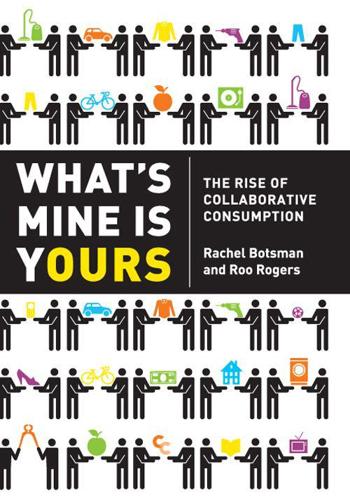
What's Mine Is Yours: How Collaborative Consumption Is Changing the Way We Live
by
Rachel Botsman
and
Roo Rogers
Published 2 Jan 2010
Every day people are using Collaborative Consumption—traditional sharing, bartering, lending, trading, renting, gifting, and swapping, redefined through technology and peer communities. Collaborative Consumption is enabling people to realize the enormous benefits of access to products and services over ownership, and at the same time save money, space, and time; make new friends; and become active citizens once again. Social networks, smart grids, and real-time technologies are also making it possible to leapfrog over outdated modes of hyper-consumption and create innovative systems based on shared usage such as bike or car sharing. These systems provide significant environmental benefits by increasing use efficiency, reducing waste, encouraging the development of better products, and mopping up the surplus created by over-production and -consumption.
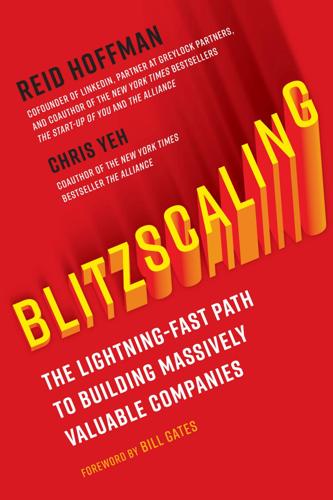
Blitzscaling: The Lightning-Fast Path to Building Massively Valuable Companies
by
Reid Hoffman
and
Chris Yeh
Published 14 Apr 2018
What’s more, rather than being concentrated narrowly in a personal computer industry that was essentially a niche market, today’s new technologies impact nearly every part of the economy, creating many new opportunities. This trend holds tremendous promise. Precision medicine will use computing power to revolutionize health care. Smart grids use software to dramatically improve power efficiency and enable the spread of renewable energy sources like solar roofs. And computational biology might allow us to improve life itself. Blitzscaling can help these advances spread and magnify their sorely needed impact. THE TYPES OF SCALING Blitzscaling isn’t simply a matter of rapid growth.

Palaces for the People: How Social Infrastructure Can Help Fight Inequality, Polarization, and the Decline of Civic Life
by
Eric Klinenberg
Published 10 Sep 2018
If, through some unfathomable invention, scientists managed to stop all greenhouse gas emissions tomorrow, the process of global warming would continue for centuries, and sea levels would keep rising for thousands of years. We must mitigate, but we also have no choice but to adapt. In coming decades, the world’s most affluent societies will invest trillions of dollars on new infrastructure—seawalls, smart grids, basins for capturing rainwater—that can withstand twenty-first-century challenges, including megastorms like Harvey and Irma. But no investment in hard infrastructure will be sufficient to “climate-proof” the densely populated cities and suburbs that modern societies have built in coastal areas, river deltas, deserts, and plains.
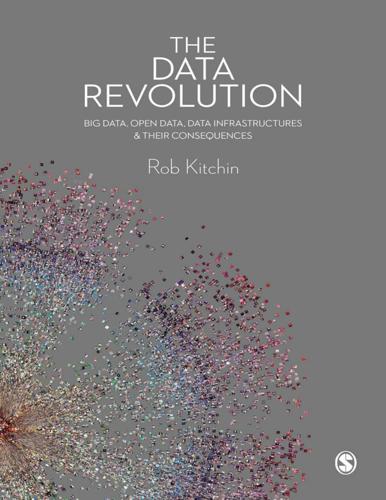
The Data Revolution: Big Data, Open Data, Data Infrastructures and Their Consequences
by
Rob Kitchin
Published 25 Aug 2014
They have also proposed: individuals entering into partnerships with developers wherein they can more proactively select what data they are willing to release, to whom, and under what circumstances; companies providing users access to their own data in a usable format for their own benefit; and that companies ‘share the wealth’ in the monetisation of personal data (Tene and Polonetsky 2012; Rubinstein 2013). An example of such a co-beneficial sharing of the wealth of data are smart grids where data generated by smart meters concerning household electricity consumption are used by the power company to produce supply efficiencies, with households supplied with apps that enable them to monitor their own use and adapt behaviour to save money. Industry, by and large, wants either the present provisions to continue or to be relaxed, with privacy administered through market-led regulation that does not stifle the economic leveraging of data.

Industry 4.0: The Industrial Internet of Things
by
Alasdair Gilchrist
Published 27 Jun 2016
/Industries/industrie4.0-smart-manufacturing-forthe-futu.. http://motherboard.vice.com/read/life-after-the-fourthindustrial-revolution 215 CHAPTER 14 Smart Factories The heart of Industry 4.0 in conceptual terms is the Smart Factory (Figure 14-1) and everything revolves around this central entity that makes up the business model. If we look at how Industry 4.0 will work in theory, we can see that everything from the supply chain, business models, and processes are there to provide the Smart Factory. Similarly, all the external interfaces from supply chain partners, smart grids, and even social media conceptually have the smart factory at the hub—it is the sun around which other processes orbit. Figure 14-1. Smart Factory So what is a Smart Factory and why is it so important to the future of manufacturing? © Alasdair Gilchrist 2016 A. Gilchrist, Industry 4.0, DOI 10.1007/978-1-4842-2047-4_14 218 Chapter 14 | Smart Factories Introducing the Smart Factory A Smart Factory hosts smart manufacturing processes, which we have explained previously.
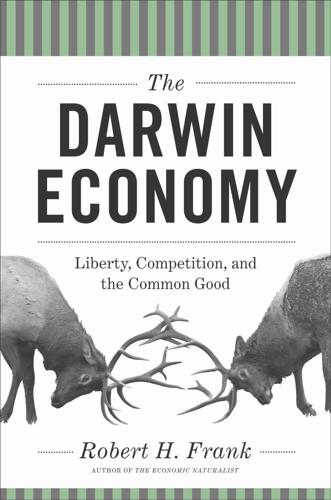
The Darwin Economy: Liberty, Competition, and the Common Good
by
Robert H. Frank
Published 3 Sep 2011
Jenny Anderson and Andrew Ross Sorkin, “Bill Is Offered to Increase Tax on Private Equity,” New York Times, June 23, 2007, http://www.nytimes.com/2007/06/23/ business/23tax.html. 10. Robert D. Yaro, “An Investment We Have to Make,” New York Times, October 14, 2010, http://www.nytimes.com/roomfordebate/2010/10/13/will-we-ever-have-highspeed-trains/an-investment-we-have-to-make. 11. U.S. Department of Energy, “The Smart Grid: An Introduction,” 2008, http:// www.oe.energy.gov/1165.htm. Chapter Eleven: Taxing Harmful Activities 1. A. C. Pigou, in The Economics of Welfare, 4th ed., London: Macmillan, 1932, http://www.econlib.org/library/NPDBooks/Pigou/pgEW.html. 2. For an excellent case study, see Gary W. Dorris, “Redesigning Regulatory Policy: A Case Study in Urban Smog,” PhD dissertation, Department of Applied Economics and Management, Cornell University, 1996. 3.
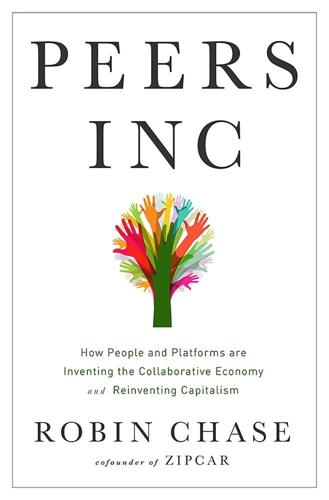
Peers Inc: How People and Platforms Are Inventing the Collaborative Economy and Reinventing Capitalism
by
Robin Chase
Published 14 May 2015
We already see the movement in higher education toward MOOCs—massive open online courses—where the best teachers in the world will provide instruction through videotaped lectures watched at home, while in-person class time is reserved for personal and intimate group instruction. The energy sector will be mostly converted to Peers Inc. A smart grid will be supplied by millions of distributed small solar- and wind-powered plants—co-generation. Communications will include a significant Peers Inc component. In addition to fiber, satellites, and cell towers, individuals’ devices (cellphones, laptops, cars) will be receiving and forwarding wireless data, acting like mini cell towers—infrastructure built and owned not by big companies but by the peers themselves.

Black Code: Inside the Battle for Cyberspace
by
Ronald J. Deibert
Published 13 May 2013
Hidden in the shadows of low-level thuggery and cyber crime for cash, in other words, are more serious and potentially devastating operations, like acts of sabotage against critical infrastructure. Now perilously networked together, such infrastructure is especially vulnerable to cyber attacks: our smart grids, financial sectors, nuclear enrichment facilities, power plants, hospitals, and government agencies are all there for the taking. And this is happening at a time when militaries, criminal organizations, militants, and any individual with an axe to grind are refining capabilities to target and disrupt those networks.

Green Swans: The Coming Boom in Regenerative Capitalism
by
John Elkington
Published 6 Apr 2020
The Chinese government actually published a notice adding Bitcoin to a list of industries that could be shut down.11 With China, there are always other reasons for such decisions and announcements, but the argument made is that the amount of energy consumed by the industry, in which the currency is created by “mining” activities involving computers solving ever more complicated puzzles, contributes to pollution and wastes valuable resources. Every new technology creates unexpected problems, but if I had to pick three or four personal priorities from the WEF list, I would take AI and the Fourth Industrial Revolution for the Earth—and then I would add several not on the list: among them the renewable energy and smart grids nexus, the replacement of animal farming by precision biology and fermentation, and synthetic biology. The latter was the subject of a wonderfully insightful survey by Oliver Morton, published by The Economist.12 New tools like Crispr are helping to radically accelerate genetic engineering.13 “Every now and then,” noted Wired magazine, “nature politely taps us on the shoulder and hands over a world-changing gift.
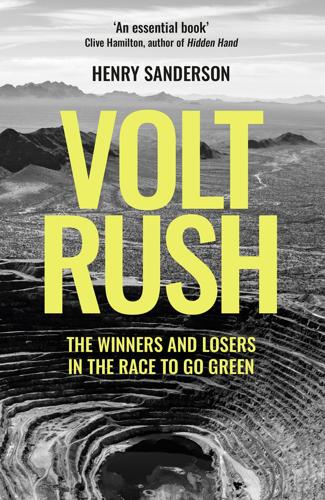
Volt Rush: The Winners and Losers in the Race to Go Green
by
Henry Sanderson
Published 12 Sep 2022
TB_iframe=true. 16 Eckhouse, B., ‘The US has a fleet of 300 electric buses. China has 421,000’, Bloomberg News, 15 May 2019. 17 Mazzocco, I., ‘Electrifying: how China built an EV industry in a decade’, Macro Polo, 8 July 2020, https://macropolo.org/analysis/china-electric-vehicle-ev-industry/. 18 ‘Next generation lithium: from electronic components to the smart grid of the future’, Batteries International, Issue 92 (summer 2014). 19 Li, F., ‘Powerful CATL dominates electric car battery sector’, China Daily, 11 March 2019. 20 ‘The breakneck rise of China’s colossus of electric-car batteries’, Bloomberg Businessweek, 1 February 2018. 21 Schreffler, R., ‘Battery supplier CATL riding crest of EV wave’, Wards Auto, 29 January 2018, www.wardsauto.com/technology/battery-supplier-catl-riding-crest-ev-wave. 22 Ibid. 23 Ward, A., ‘Low-carbon technology power play by China’s CATL’, Financial Times, 15 March 2018. 24 ‘CATL aims to plug into the global market’, China Daily, 29 December 2016. 25 Li, F., ‘Powerful CATL dominates electric car battery sector’, China Daily, 11 March 2019. 26 ‘Battery pack prices cited below $100/kWh for the first time in 2020, while market average sits at $137/kWh’, Bloomberg New Energy Finance, 16 December 2020, https://about.bnef.com/blog/battery-pack-prices-cited-below-100-kwh-for-the-first-time-in-2020-while-market-average-sits-at-137-kwh/. 27 Conference call with Bernstein analysts, April 2020. 28 Zeng, Y., ‘抓住重大历史机遇, 推动我国新能源产业快速发展’ , GaoGong Industry Institute, www.gg-lb.com/art-40852.html. 29 Ibid.
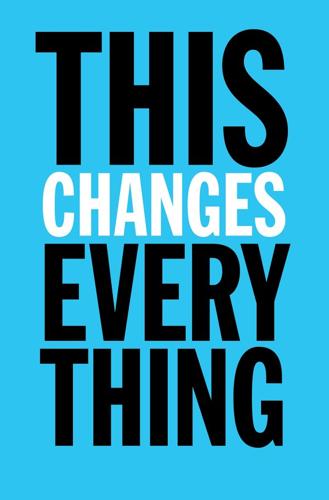
This Changes Everything: Capitalism vs. The Climate
by
Naomi Klein
Published 15 Sep 2014
There is, however, no scenario in which we can avoid wartime levels of spending in the public sector—not if we are serious about preventing catastrophic levels of warming, and minimizing the destructive potential of the coming storms. It’s no mystery where that public money needs to be spent. Much of it should go to the kinds of ambitious emission-reducing projects already discussed—the smart grids, the light rail, the citywide composting systems, the building retrofits, the visionary transit systems, the urban redesigns to keep us from spending half our lives in traffic jams. The private sector is ill suited to taking on most of these large infrastructure investments: if the services are to be accessible, which they must be in order to be effective, the profit margins that attract private players simply aren’t there.
…
Imagine if there had been a powerful social movement—a robust coalition of trade unions, immigrants, students, environmentalists, and everyone else whose dreams were getting crushed by the crashing economic model—demanding that Obama do no less. The stimulus package could have been used to build the best public transit systems and smart grids in the world. The auto industry could have been dramatically reengineered so that its factories built the machinery to power that transition—not just a few token electric cars (though those too) but also vast streetcar and high-speed rail systems across an underserved nation. Just as a shuttered auto parts factory in Ontario had reopened as the Silfab solar plant, similar transitions could have been made in closed and closing factories across the continent.
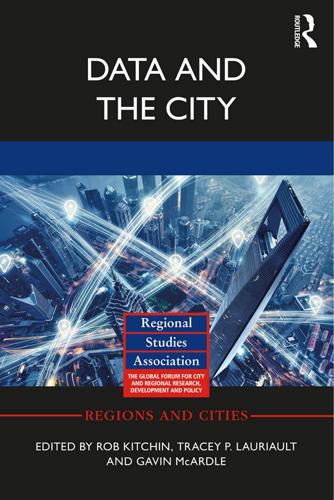
Data and the City
by
Rob Kitchin,Tracey P. Lauriault,Gavin McArdle
Published 2 Aug 2017
Such data-driven technologies include: urban control rooms, e-government systems, city operating systems, coordinated emergency 2 R. Kitchin, T. P. Lauriault and G. McArdle response systems, intelligent transport systems, integrated ticketing, real-time passenger information, smart parking, fleet and logistics management, city dashboards, predictive policing, digital surveillance, energy smart grids, smart meters, smart lighting, sensor networks, building management systems and a wide plethora of locative and spatial media. Collectively these technologies are generating an ever-growing tsunami of indexical data (uniquely linked to people, objects, territories, transactions) that can be repurposed in diverse ways – for example, in predictive profiling and social sorting of citizens and neighbourhoods, creating urban models and simulations, for policing and security purposes, etc.

Windfall: The Booming Business of Global Warming
by
Mckenzie Funk
Published 22 Jan 2014
Instead of working for Greenpeace, which he’d considered after graduation, he became a stockbroker, then an analyst, and he’d eventually helped Deutsche Bank identify global warming as a “megatrend” that could generate profits for decades. “It’s always helped me, climate change, in my career,” he joked. While the DWS fund invested most heavily in the technology to build a greener world—in wind power and solar power, in smart grids and smarter electrical meters—it had bought other stocks, too: companies that fit the portfolio not because they could help fight climate change but because the warmer the world, the less habitable it became, the bigger the windfall. They were a tacit recognition that we were already failing to stop climate change.

The Metropolitan Revolution: How Cities and Metros Are Fixing Our Broken Politics and Fragile Economy
by
Bruce Katz
and
Jennifer Bradley
Published 10 Jun 2013
The result could be an athletic jersey or flak jacket that monitors vital signs or motorcycle visors that automatically adjust to bright light.27 NorTech also supports Northeast Ohio’s advanced energy and water technology clusters. The advanced energy industry encompasses a wide range of subspecialties such as energy storage, smart grids, biomass, wind energy, and fuel cells. This cluster arose out of the interactions between NASA’s top advanced energy research center, which is in Cleveland, and the companies and people in the region who know how to make big, complicated mechanical things like wind turbines and generators. There’s also a bit of geographic felicity at work: the Great Lakes are a superb source of wind energy.
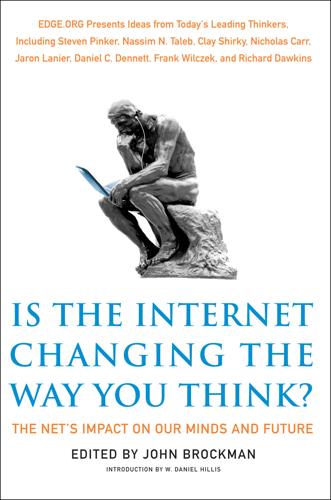
Is the Internet Changing the Way You Think?: The Net's Impact on Our Minds and Future
by
John Brockman
Published 18 Jan 2011
This is a world where farmers in the extensive irrigation systems of the Indus plains of Pakistan or the Australian Murray-Darling basin can find out online, in real time, how much water they are allocated and thus plan their agricultural activities; where conservation programs for tropical forests in Brazil or Indonesia (critical components of our global strategy to mitigate greenhouse gas emissions) are planned using global mapping technologies; where we can use networked platforms to coordinate millions of individual decisions on consumption and production of energy through smart grids (information-laden networks for power transmission); where weather data can be acted upon across the globe. And where, for the first time, large-scale interventions in Earth’s climate, such as attempts to increase carbon capture by the ocean, are being considered by ventures that already assume a fully networked world.

The Smart Wife: Why Siri, Alexa, and Other Smart Home Devices Need a Feminist Reboot
by
Yolande Strengers
and
Jenny Kennedy
Published 14 Apr 2020
Likewise, many energy conservation and demand management programs target resource man by offering households more technological control over their consumption, better data, and information for improved decision making, or economic incentives designed to encourage rational choices and action. Like the smart wife, we called out resource man in past research as a provocation to draw attention to a biased and gendered vision for energy consumers in the smart home, in which smart grid and metering technologies are expected to realize a range of energy benefits for residents. For instance, one estimate from the Global e-Sustainability Initiative suggests smarter systems could save ten times the carbon emissions that they generate.55 Resource man, however, is not just a hypothetical character.
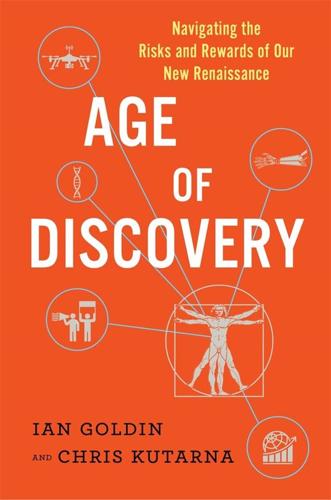
Age of Discovery: Navigating the Risks and Rewards of Our New Renaissance
by
Ian Goldin
and
Chris Kutarna
Published 23 May 2016
It cast more than 50 million people into darkness for more than 30 hours, at a cost of some $6–$10 billion.73 Until that moment, few in government or the utilities believed that a single outage on that scale was even possible. But US power consumption had jumped almost 30 percent in a decade, not least due to the lighting up of the Internet. Deregulation and privatization begun in the early 1990s had increased the number of parties plugged into the grid from hundreds to thousands. Emerging smart grid devices alongside aging power stations had complicated control systems. And greater use of renewable generation (which stops and starts according to the vagaries of sunshine and wind) had complicated load-balancing on the grid. Not surprisingly, a joint US-Canada task force concluded in the aftermath that the top two causes of the blackout were “inadequate system understanding” and “inadequate situational awareness.”74 Clearly, these episodes from our recent past have begun to sensitize us to systemic infrastructure risks.
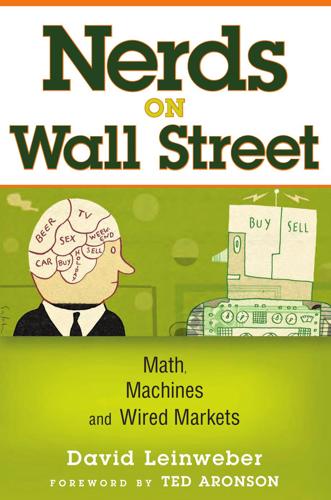
Nerds on Wall Street: Math, Machines and Wired Markets
by
David J. Leinweber
Published 31 Dec 2008
It was selected as a technology pioneer by the heavies at the Davos World Economic Forum in 2007, as a top innovator by MIT’s Technology Review, and by the Department of Energy for its model energy-efficient homes. What Apple is to music players, GridPoint is to smart meters. An overview for the controller is shown in Figure 14.3. Figure 14.3 GridPoint’s smart grid platform is designed to align the interests of electric utilities, consumers, and the environment through an intelligent network of distributed energy resources that controls load, stores energy, and produces power. Algo trading for electrons is coming. Source: GridPoint (www.gridpoint.com). 334 Nerds on Wall Str eet GridPoint explains how its simple blue box on the wall addresses all the key issues in our electricity future: The platform applies information technology to the electric grid to enable distributed energy resources to perform the same as central-station generation.

Whole Earth Discipline: An Ecopragmatist Manifesto
by
Stewart Brand
Published 15 Mar 2009
According to a report in 2007 by the infrastructure consultants Booz Allen Hamilton, “Over the next 25 years, modernizing and expanding the water, electricity, and transportation systems of the cities of the world will require approximately $40 trillion.” What would infrastructure totally rethought in Green terms look like? China is currently building 170 new mass transit systems. High-speed rail is finally coming to the United States. With the coming of “smart grids” and microgrids, the distribution of electricity will be reshaped toward greater adaptability as well as efficiency. As climate change unfolds, cities will be on the frontier of human response. Taking the danger zone as 30 feet above sea level, a Columbia University study reported in Science says that two thirds of all cities with a population over 5 million are “especially vulnerable” to rising sea levels and “weather oscillations.”

Prosperity Without Growth: Foundations for the Economy of Tomorrow
by
Tim Jackson
Published 8 Dec 2016
‘One of the reasons that the green sweet spot is an attractive focus for an economic stimulus is the labor-intensity of many of its sectors’, claimed the Bank.43 A study by the University of Massachusetts’ Political Economy Research Institute supported that view. It identified six priority areas for investment: retrofitting buildings, mass transit/freight rail, smart grid, wind power, solar power and next generation biofuels. The authors calculated that spending $100 billion on these interventions over a two-year period would create two million new jobs. By contrast, the same money directed at household spending would generate fewer jobs; and directed at conventional sectors like the oil industry fewer still.44 The proposal briefly held real political traction.

Warnings
by
Richard A. Clarke
Published 10 Apr 2017
The exclusions, he contends, the things the industry doesn’t want regulated, are precisely the areas that need standards. “NERC said almost 70 percent of power plants in U.S. were not considered critical. Almost 30 percent of transmission assets were not considered critical. All of the distribution assets, which are the heart of the smart grid, are not considered critical because distribution is explicitly excluded.”1 Even after the Ukrainian blackout, the electric power industry continued to disagree with Weiss about the significance of that event and the vulnerability of the U.S. grid. Kimberly Mielcarek, a spokeswoman for the Electricity Information Sharing and Analysis Center (E-ISAC), flatly rejected that it could happen here.
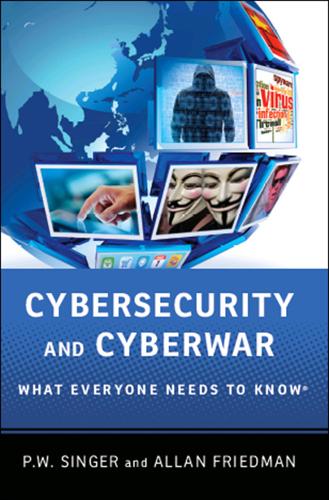
Cybersecurity: What Everyone Needs to Know
by
P. W. Singer
and
Allan Friedman
Published 3 Jan 2014
In contrast to the clear liability of credit card processors for fraudulent transactions, for instance, the electricity sector is a mess when it comes to cybersecurity organization. Generation, transmission, and distribution are governed by separate entities. This leads to both overlapping regulations and gaps in coverage. Both NIST and the North American Electricity Reliability Corporation (NERC) are responsible for developing Smart Grid standards, but neither has an explicit responsibility to lead security initiatives. Furthermore, the distribution layer of the power grid is not covered by either entity, creating a situation where two agencies simultaneously have and do not have the ability to set security standards. Absent a uniform strategy, the dominant approach has been for each regulatory agency to look after its own industry.
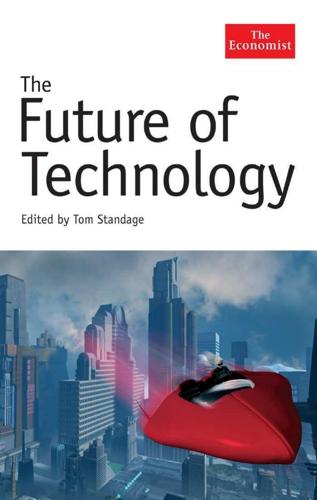
The Future of Technology
by
Tom Standage
Published 31 Aug 2005
Instead, essential bits of energy infrastructure are built to shut down at the first sign of trouble, spreading blackouts and increasing their economic impact. The North American blackout, for example, cost power users around $7 billion. Engineers have to spend hours or even days restarting power plants. The good news is that technologies are now being developed in four areas that point the way towards the smart grid of the future. First, util- 286 ENERGY ities are experimenting with ways to measure the behaviour of the grid in real time. Second, they are looking for ways to use that information to control the flow of power fast enough to avoid blackouts. Third, they are upgrading their networks in order to pump more juice through the grid safely.
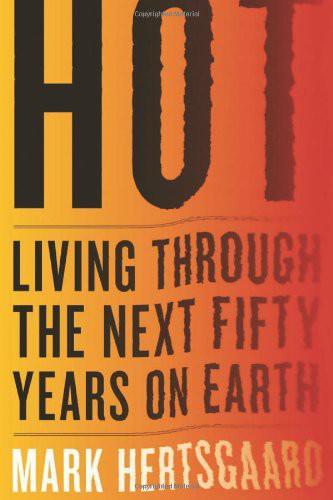
Hot: Living Through the Next Fifty Years on Earth
by
Mark Hertsgaard
Published 15 Jan 2011
Schellnhuber said Germany already had put in place a package of measures that would reduce its emissions by 40 percent by 2020, but much more needed to be done, especially in the United States. "We have the technologies needed to decarbonize our societies," he told the conference, citing improved energy efficiency, thermal solar power, a smart grid, and others. But governments had to provide leadership, in particular by shifting incentive structures and market regulations to send a price signal that would drive private capital and consumers to respond accordingly. "It will be very difficult, but technically it can be done," he added. "The laws of nature are not against us, but they will be if we wait another ten years."

Autonomous Driving: How the Driverless Revolution Will Change the World
by
Andreas Herrmann
,
Walter Brenner
and
Rupert Stadler
Published 25 Mar 2018
The vision for future 5G networks is: 1 millisecond delay end-to-end + 10 gigabits per second speed + 99.9999% reliability + E2E security + 10 years lifespan for embedded M2M devices with one battery + capacity for about 500 billion devices + lower costs. We will see the first deployments of 5G in 2020. There would be a big demand for this kind of infrastructure because of the increase in digitisation. Cyber security is one of the most important pillars for the automated car ecosystem as well as for applications in smart cities, smart homes or smart grids. This is a very important element of 5G standardisation and of developing this new, future-proof technology. Autonomous Driving 132 Box 12.2. Statement by Telecommunications Experts Experts from a Telecommunications Company A very high service quality can be achieved with 5G networks, so autonomous driving will become possible. 5G networks will form the basis for communication between road users.
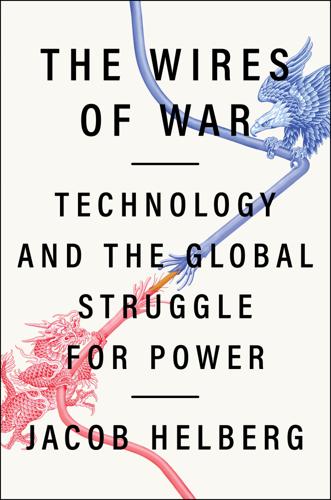
The Wires of War: Technology and the Global Struggle for Power
by
Jacob Helberg
Published 11 Oct 2021
He called for “aggressive investment in new products, in new industries, in new factories, in new science, in big leaps forward,” and concluded that “building is how we reboot the American dream.”29 It is time for tech to take up that challenge—for instance, with more venture capital directed toward advanced manufacturing processes and robotics that would enable us to creatively reshore American industry. The federal government should stand ready to help. A National Infrastructure Bank—proposed in Congress many times—could establish a public-private entity to spur investment in everything from railways to smart grids. Such legislation has included provisions to “bolster manufacturing in the United States” and promote “economic connectivity,” and could be expanded to explicitly include priorities like establishing a national 5G network.30 Instead of fifty-eight manufacturing-related programs across eleven agencies, a standalone National Institute of Manufacturing—modeled on the National Institutes of Health, as Michigan senator Gary Peters has proposed—could be created to implement a national manufacturing strategy.31 The government should also greatly increase funding for small businesses, focusing on the same strategically vital industries China has emphasized in its Made in China 2025 initiative.

The Long History of the Future: Why Tomorrow's Technology Still Isn't Here
by
Nicole Kobie
Published 3 Jul 2024
The card-based wave-and-pay ticketing system on London’s public transport network is now more than 20 years old, but whenever I travel to another city I hate the friction of having to figure out how to buy a local bus ticket. This is a cheap and easy solution that makes it easier to pay for travel, though ensuring cash can still be used is crucial in some cities. Smart grids make it easier for energy companies to shift to renewable sources, while apps can allow a supplier to offer benefits for using energy at non-peak times to help balance demand. But all of those are ‘nice to haves’ rather than requirements for a well-run city. What do people need in a city? Affordable homes.

Gambling Man
by
Lionel Barber
Published 3 Oct 2024
It was a momentous decision. Masa was invited to present at a forum on renewable energy held at the office of the prime minister. The following month, he confirmed SoftBank’s entry into the energy business, backing up his investment with a reference to fellow media group Google’s own investments in the ‘smart grid’, which uses computers to collect data about customer usage and thereby improve energy efficiency. By invoking Google, Masa was deliberately seeking to place SoftBank as a peer in the global tech industry. But the political tides were shifting and, not for the first time, Masa misread the public mood.13 With his approval ratings plummeting in the aftermath of the disaster, Kan suffered a drubbing in the upper house elections in July.

Blockchain Revolution: How the Technology Behind Bitcoin Is Changing Money, Business, and the World
by
Don Tapscott
and
Alex Tapscott
Published 9 May 2016
Currently, we’re losing about fifteen million acres per year to desertification, the worst losses in sub-Saharan Africa where, unlike the Munroes of the outback, people can’t afford water pumps, air-conditioning, or migration.8 We need our utility grids and our engines not to leach energy and carbon into our atmosphere. While the utilities are looking at IoT benefits to their existing infrastructure (“smart grid”), connecting microgrids could lead to entirely new energy models. Utility companies, their unions, regulators, and policy makers, as well as innovative new entrants such as LO3, are exploring these new models for generating, distributing, and using electricity first at the neighborhood level and then around the world.
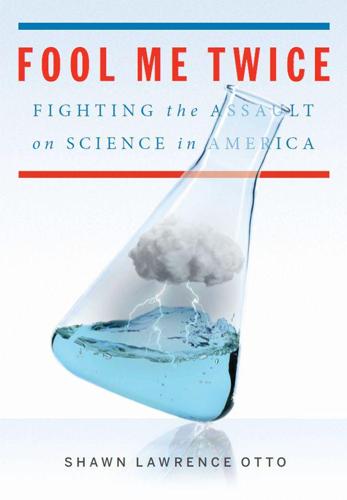
Fool Me Twice: Fighting the Assault on Science in America
by
Shawn Lawrence Otto
Published 10 Oct 2011
“Actually, I have been doing that a lot more lately,” says Pierrehumbert, “and it works. Imagine how wonderful it would be if you could get on a shiny new high-speed train in Chicago and visit your relatives in Madison without having to go to the airport, and all the hassle. What if we had a robust energy-supply system with a smart grid, so that someone with a bright idea about putting energy into the grid could hook up and make money on that. Think of the possibilities! All the ways we can make life better, easier, and cheaper by doing things that also happen to reduce our carbon footprint.” What climate scientists, politicians, economists, and engineers should be talking about is the problem and the concrete solutions: How do we plan communities and energy supply in ways that work better for people, that give them more choices—that increase their liberty.

The Future of Ideas: The Fate of the Commons in a Connected World
by
Lawrence Lessig
Published 14 Jul 2001
But these systems don't require this sort of registration, likely because, when they were built, such registration was simply impracticable. The electronics of a power grid couldn't handle the registration of different devices; roads were built stupid because smart roads were impossible. Things are different now; smart grids, and smart roads, are certainly possible. Control is now feasible. So we should ask, would control be better? In at least some cases, it certainly would be better. But from the perspective of innovation, in some cases it would not. In particular, when the future is uncertain—or more precisely, when future uses of a technology cannot be predicted—then leaving the technology uncontrolled is a better way of helping it find the right sort of innovation.
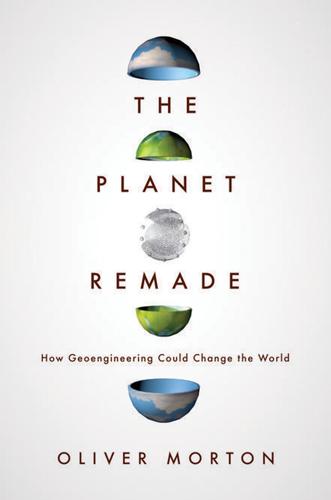
The Planet Remade: How Geoengineering Could Change the World
by
Oliver Morton
Published 26 Sep 2015
They become unavailable in ways both easily predictable – there is no solar energy at night – and less so. Sometimes the wind will fail to blow over quite large areas for days or weeks at a time. This need not be as much of a problem in the future as it would have been in the past; information technology will make it easier for ‘smart grids’, smart appliances and, indeed, smart people to cope with such fluctuations by managing demand; consumers will probably consent to such management if it lowers bills. But intermittency still drives up the costs and complexity of power supply if you want to get most or all of your electricity from renewables and you don’t have access to a great deal of hydro-electric capacity – a largely zero-carbon source that can be ramped up or down very quickly to balance out the intermittencies of other supplies.

The Controlled Demolition of the American Empire
by
Jeff Berwick
and
Charlie Robinson
Published 14 Apr 2020
The lower class of “useless eaters” gets fed the nutritionally deficient GMO food and they can chase it down with fluoride-laden polluted water, the same water that will be strictly rationed due to water shortages. They will be forced to live in 300 square foot micro-apartments inside high-density cities in order to combat global warming, and their carbon footprint will be monitored and taxed through the smart grid while imposing forced austerity on the masses. Due to the tight living quarters, vaccination will be mandatory for “herd immunity”, and all children will need to be fully immunized with all 100+ shots before they are allowed to attend the government schools teaching Common Core. The upgrades to the infrastructure will be due to the privatization of current public roads, bridges, and waterways, and public safety features will include the removal of all guns from the citizens.
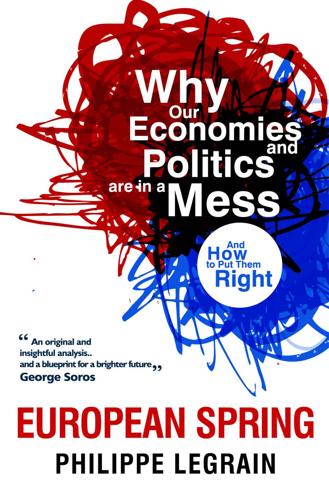
European Spring: Why Our Economies and Politics Are in a Mess - and How to Put Them Right
by
Philippe Legrain
Published 22 Apr 2014
His six priorities are: new manufacturing technologies in areas such as robotics and 3D printing; basic “enabling technology” such as optical electronics and new materials linked to novel products; biotech-based production techniques; low-carbon and other low-pollution manufacturing techniques; “clean” vehicles, such as cars using new forms of hybrid engines; and equipment needed for new “smart grids” to facilitate more efficient energy use. Tajani wants the EU’s manufacturing output to rise from 15.5 per cent of GDP in 2011 to 20 per cent in 2020.645 That is an absurd target, given that manufacturing is shrinking as a share of the economy even in China. Even if his priorities turn out to be correct – a big if – any support he provides is unlikely to be well-directed.

The Finance Curse: How Global Finance Is Making Us All Poorer
by
Nicholas Shaxson
Published 10 Oct 2018
When Theresa May became prime minister in July 2016, she briefly paused the nuclear deals on security grounds but gave the final go-ahead two months later under pressure from the City of London, and after the Chinese gave ‘a series of warnings’ that rejection would damage the ‘golden era of relations’. In economic terms, the Hinkley C project is ‘a dreadful deal, laughable’, as one expert put it: not just financially and technically risky, but also likely to be obsolete once it comes on stream in 2025 or later, as renewable energies and ‘smart grid’ technologies provide ever cheaper and safer alternatives. British consumers are expected to pay tens of billions, over and above the normal price of electricity, to subsidise this project if it goes ahead as planned.2 Britain is pursuing an economically unviable nuclear industry for many complex and varied reasons, including lobbying by big-money interests and genuine disagreements about the future price of electricity.
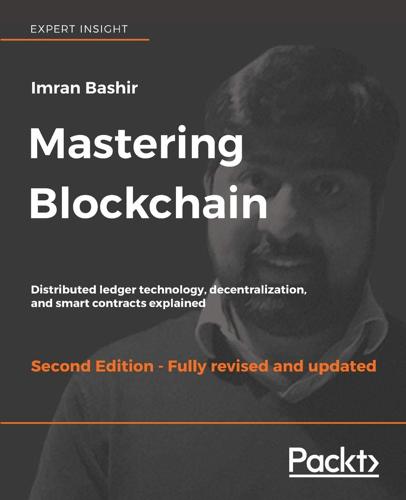
Mastering Blockchain, Second Edition
by
Imran Bashir
Published 28 Mar 2018
IoT can be defined as a network of computationally intelligent physical objects (any object such as cars, fridges, industrial sensors, and so on) that are capable of connecting to the internet, sensing real-world events or environments, reacting to those events, collecting relevant data, and communicating it over the internet. This simple definition has enormous implications and has led to exciting concepts, such as wearables, smart homes, smart grids, smart connected cars, and smart cities, that are all based on this basic concept of an IoT device. After dissecting the definition of IoT, four functions come to light as being performed by an IoT device. These include sensing, reacting, collecting, and communicating. All these functions are performed by using various components on the IoT device.
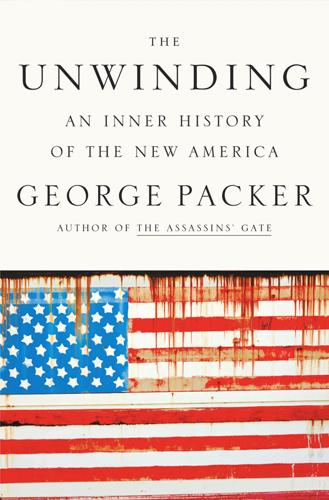
The Unwinding: An Inner History of the New America
by
George Packer
Published 4 Mar 2014
A Republican banker in Danville, who had been the president of the Virginia Bankers Association, wondered why there was no money in the stimulus bill for public works, like overhauling the Depression-era post office downtown—that was how desperate things were. Perriello himself regarded the stimulus as “fairly milquetoast stuff”—he wanted something bigger and more visionary, like a “national smart grid”—but the Recovery Act did bring three hundred million dollars into his district, money that kept teachers in classrooms and paved roads that needed paving. But over time, as the months went by and the slump continued, and there was no sign of work starting on the stimulus project to rebuild the decrepit Robertson Bridge over the Dan River, and the Republicans in Washington and the Glenn Becks on the airwaves denounced everything the government did, endlessly repeating the lie that the stimulus hadn’t created a single job, public opinion in the Fifth District began to turn against Obama and Perriello.

A Generation of Sociopaths: How the Baby Boomers Betrayed America
by
Bruce Cannon Gibney
Published 7 Mar 2017
For sociopaths, indifference to infrastructure has a certain logic. Bridges and waterworks take years to complete and often decades to return investments. What little interest the Boomers had in infrastructure therefore dwindles with age, especially if such investments risk the entitlements budget. As long as Boomers control government, there will be no smart grid, no public hyperloop, no wholesale move to clean power, not even appropriate maintenance. The Selfless and Selfish Cases for Public Goods The argument for infrastructure reduces to two facts: (1) we need it, and (2) it generates a significant and positive return on investment. That we require roads and sewers demands no further comment.

What If We Get It Right?: Visions of Climate Futures
by
Ayana Elizabeth Johnson
Published 17 Sep 2024
The way we think and talk about climate policy has shifted so quickly. Okay, so what is actually proposed in the GND resolution? Rhiana: It set out a number of project areas. Building resiliency against climate-change disasters. Meeting 100% of electricity demand through clean and renewable power. Building energy-efficient smart grids. Upgrading all existing buildings—that was a big one—to achieve maximum energy efficiency and water efficiency, including through electrification. Spurring growth of clean manufacturing. Investing in sustainable and family farming. Expanding clean and affordable public transit, including high-speed rail, and expanding EV manufacturing and infrastructure.

Imagining India
by
Nandan Nilekani
Published 25 Nov 2008
His DC “micropower” systems failed because the technology was unreliable and expensive. Edison had to watch a couple of his DC plants literally go up in flames before he gave up on the idea. dk I have chaired two committees on IT in the power sector, and the second one recommended having such “Smart Grids” that can deal with distributed generation and multiple renewable sources.

This Is How They Tell Me the World Ends: The Cyberweapons Arms Race
by
Nicole Perlroth
Published 9 Feb 2021
If they didn’t, the United States had the next round of indictments ready to go and would move to sanctions. Xi agreed, but everyone in the room knew that by then, China had already collected enough U.S. intellectual property to last it well into the next decade. Chinese hackers had taken everything from the designs for the next F-35 fighter jet to the Google code, the U.S. smart grid, and the formulas for Coca-Cola and Benjamin Moore paint. With Xi standing beside him in the Rose Garden that afternoon, Obama announced that the two leaders had come to a “common understanding” that neither the United States nor China would engage in state-sponsored theft of each other’s intellectual property.

The Power Law: Venture Capital and the Making of the New Future
by
Sebastian Mallaby
Published 1 Feb 2022
Politicians had dialed up the rhetoric about pricing or regulating carbon, and VCs acted on these signals; when the politicians failed to deliver, the VCs unsurprisingly took losses. Post-2010, there has been no equivalent policy shock, and cleantech has done better. Between 2014 and 2018, green VC investments earned gross annual returns of just over 21 percent, with smart-grid and energy-storage startups generating around 30 percent.[10] Finally, the idea that venture capitalists can’t manage some amount of capital intensity is unsupported by history. The early stories in this book show how venture capitalists have succeeded with expensive hardware projects in the past: recall Fairchild Semiconductor, Intel, Tandem, 3Com, Cisco, and UUNET.